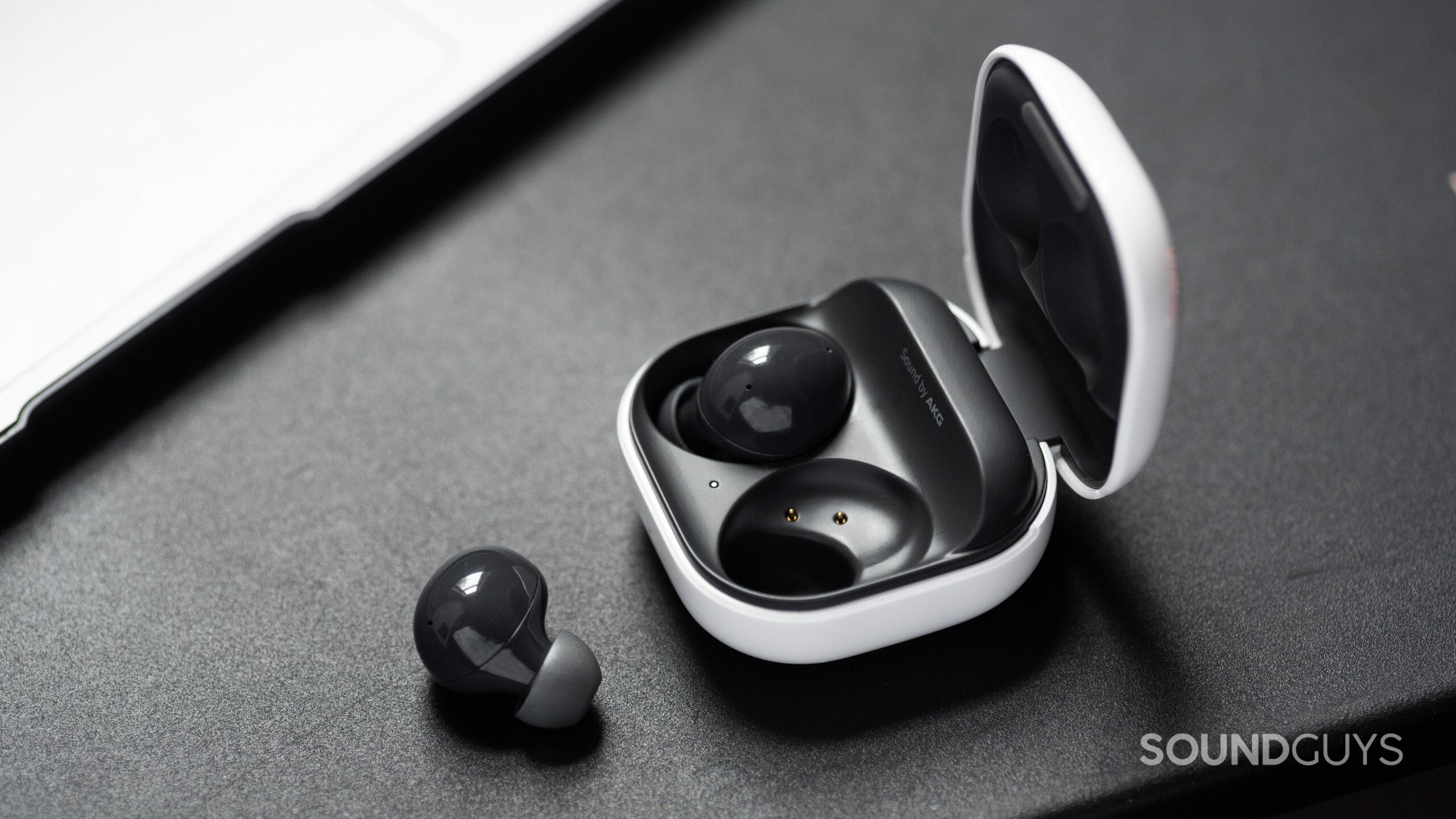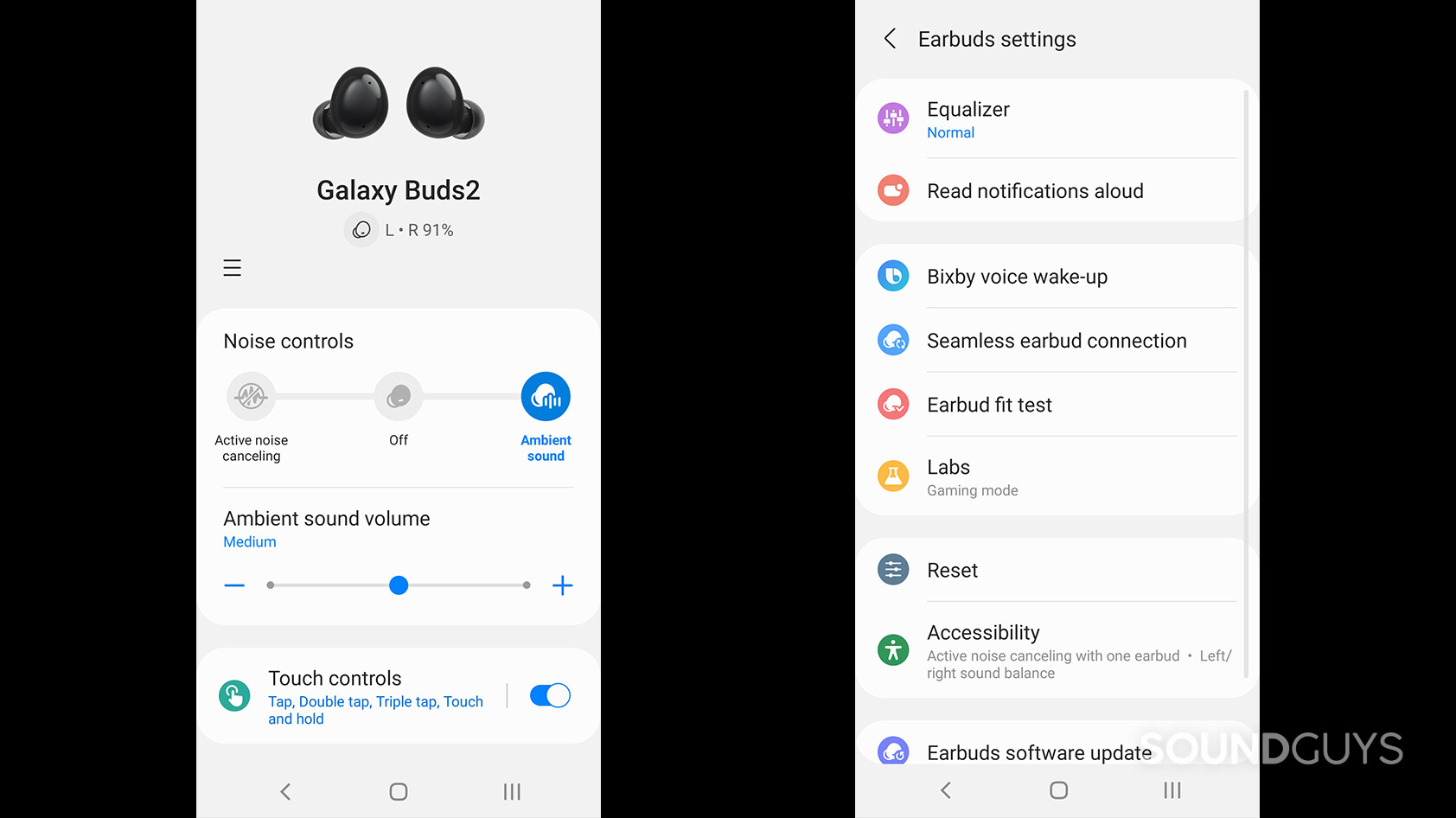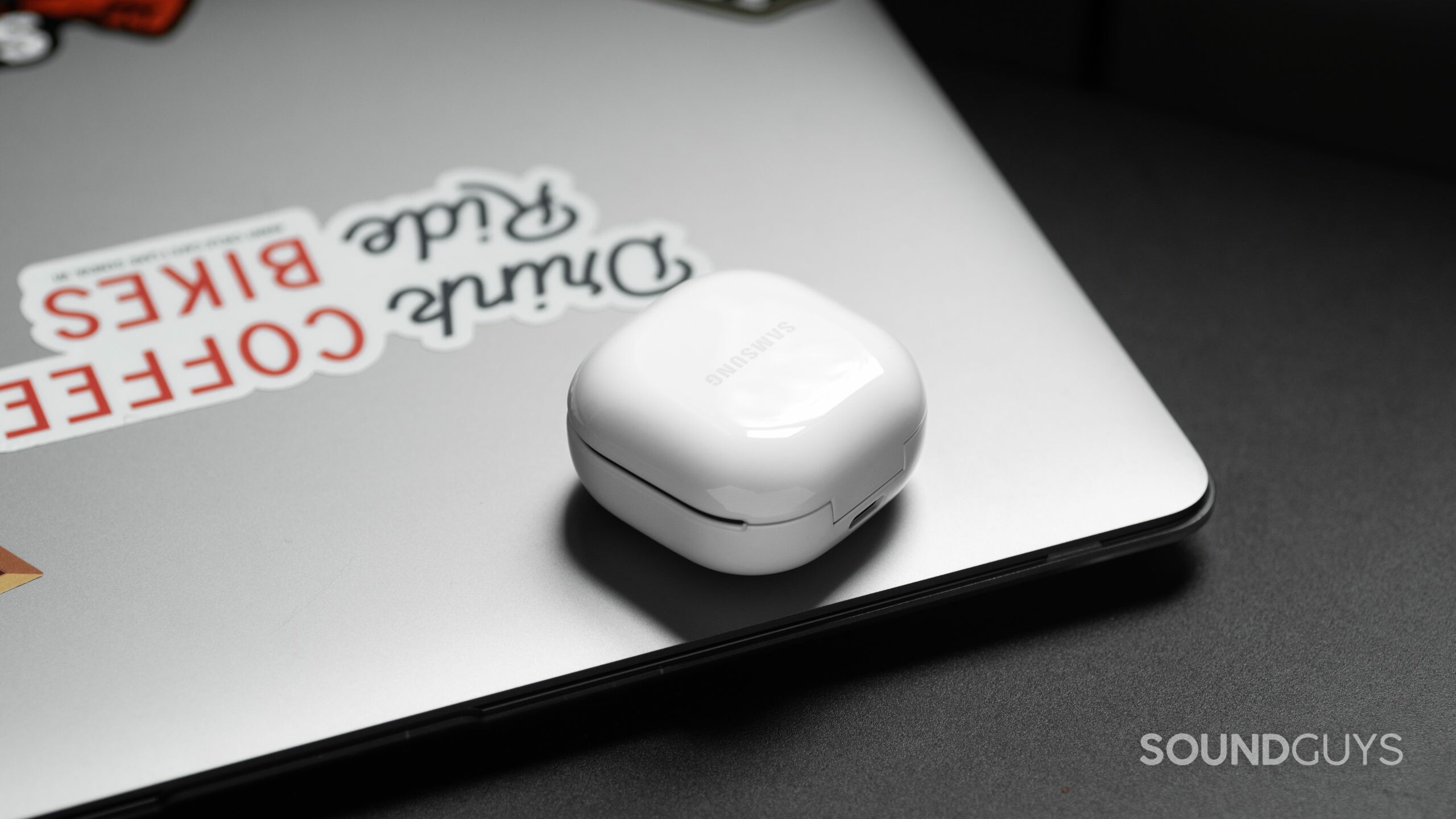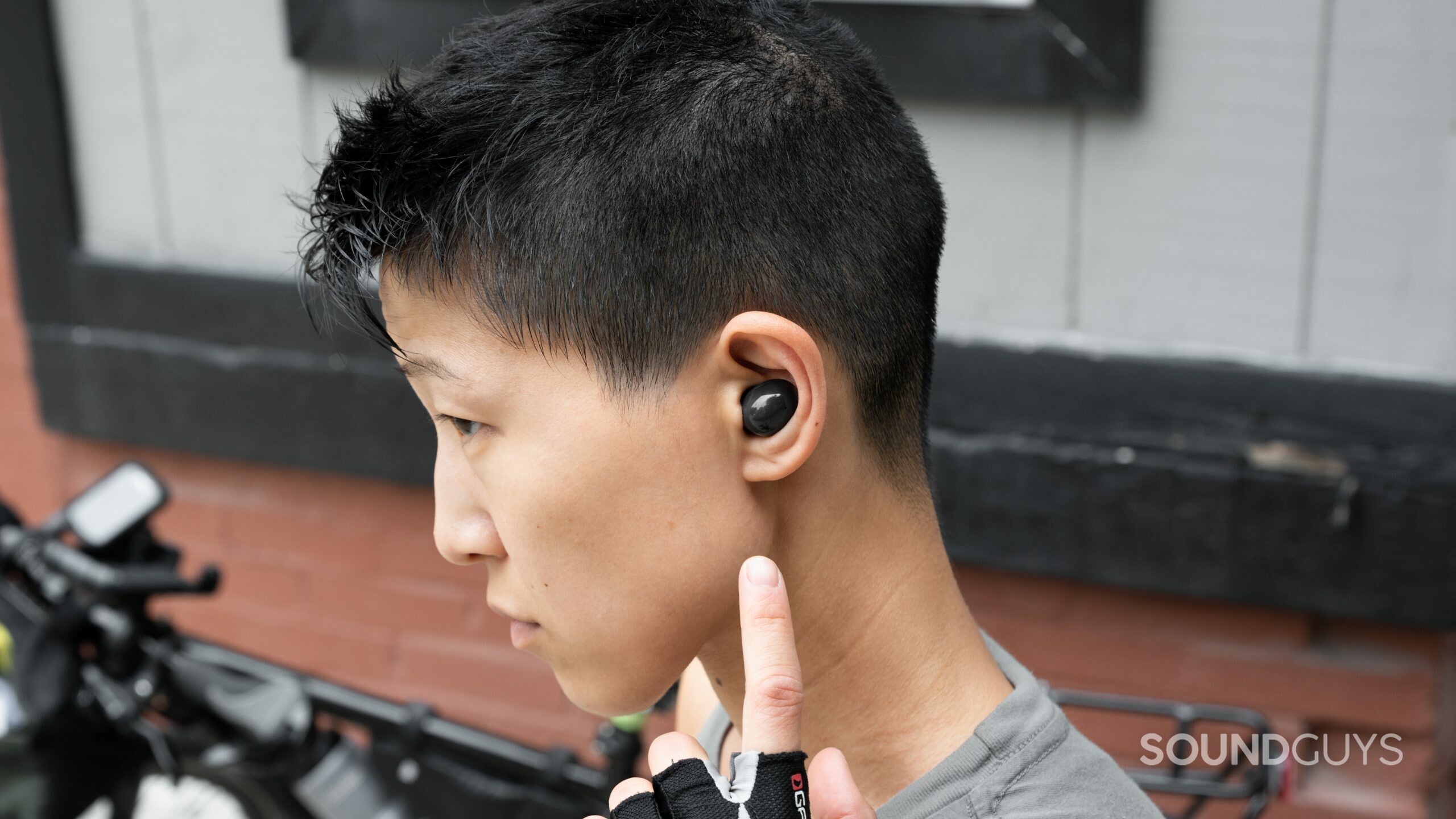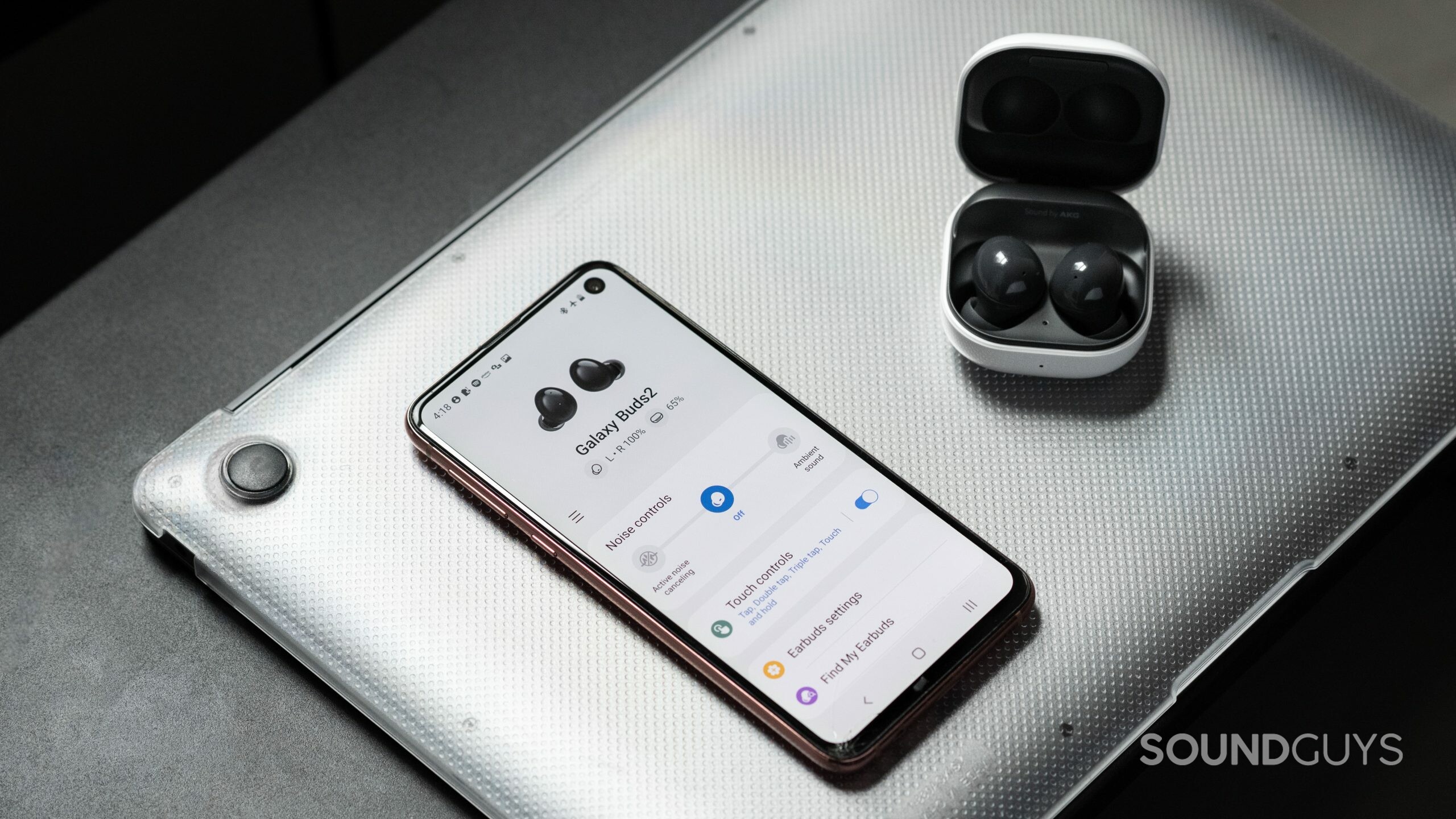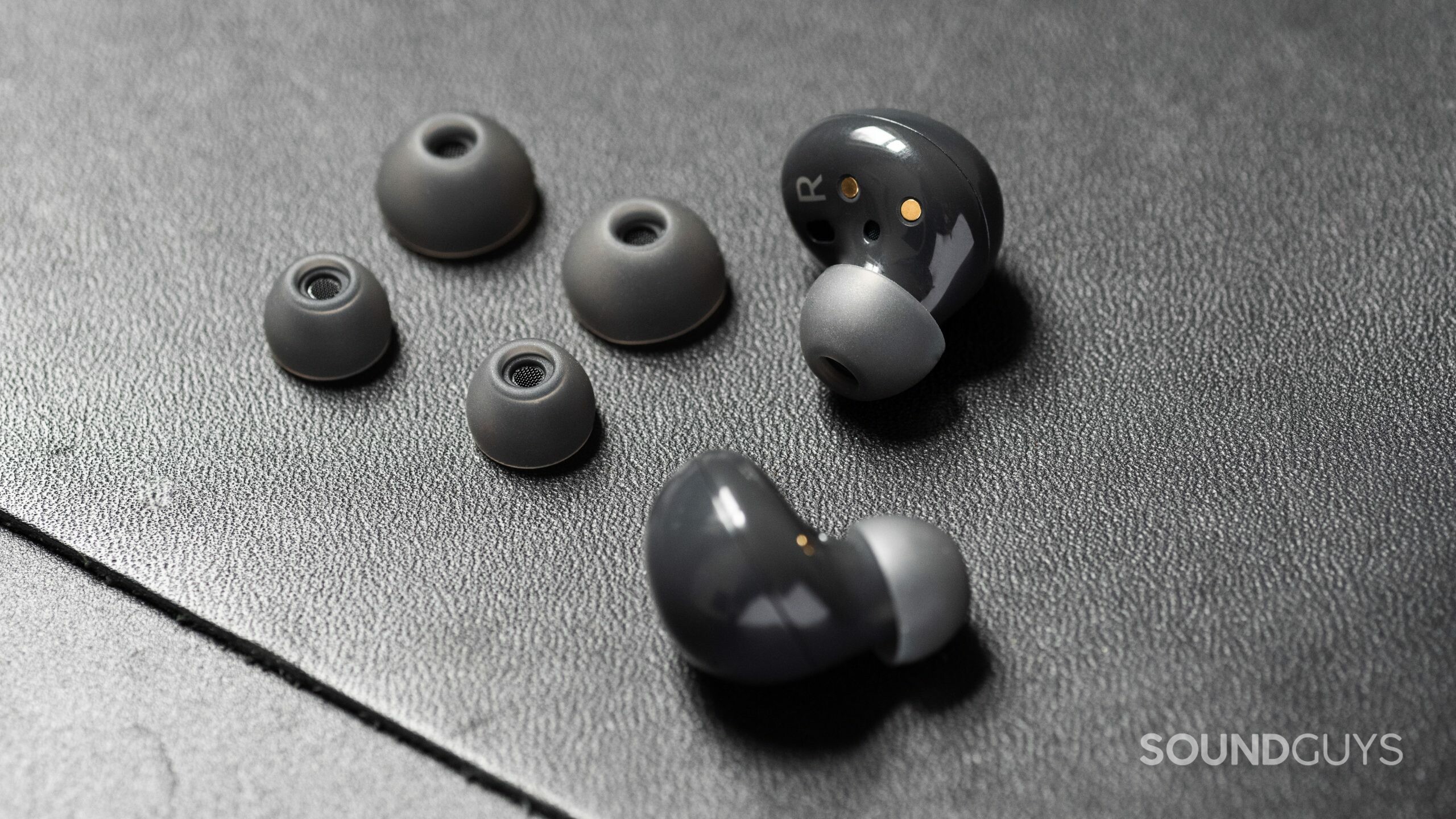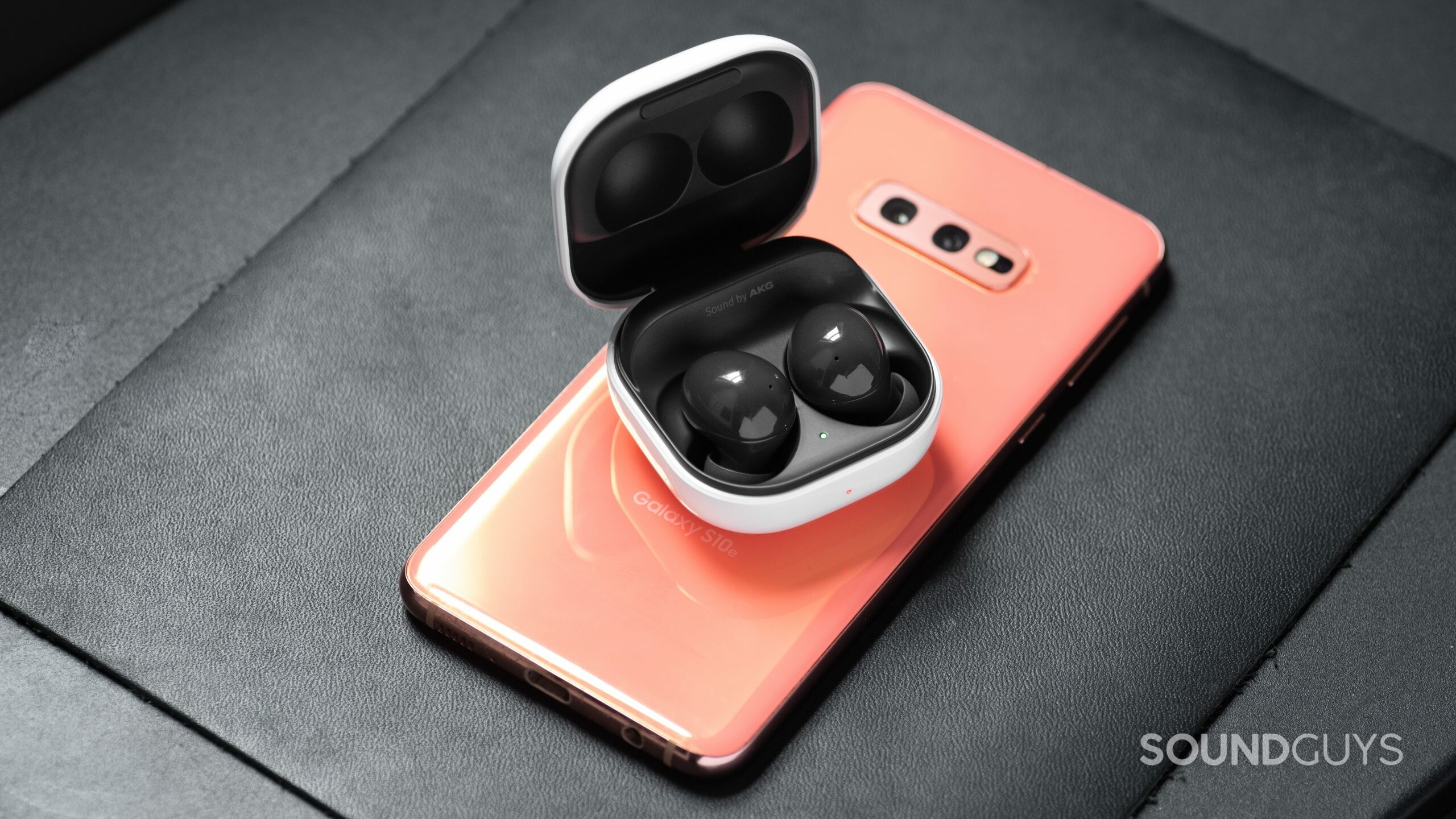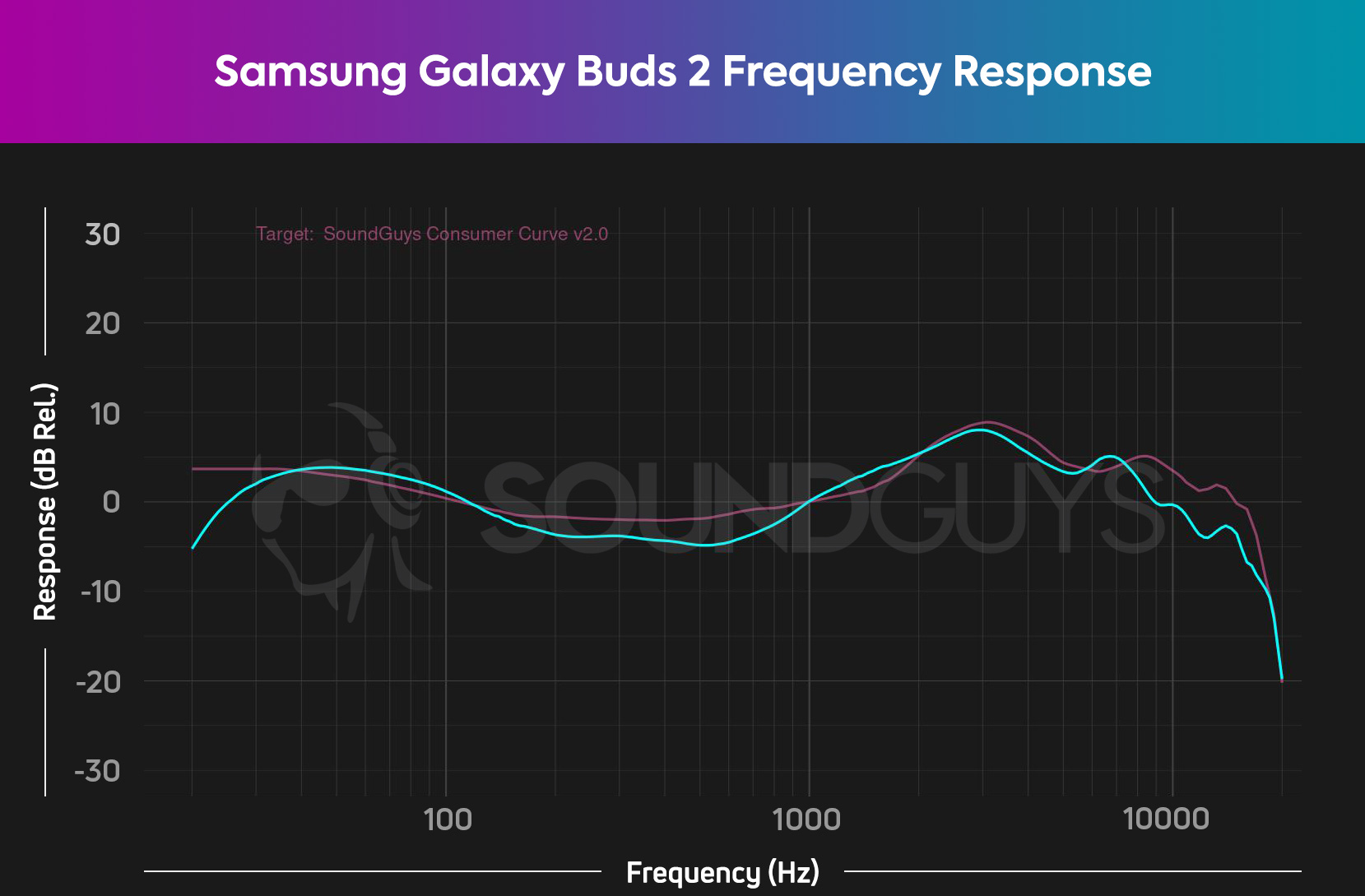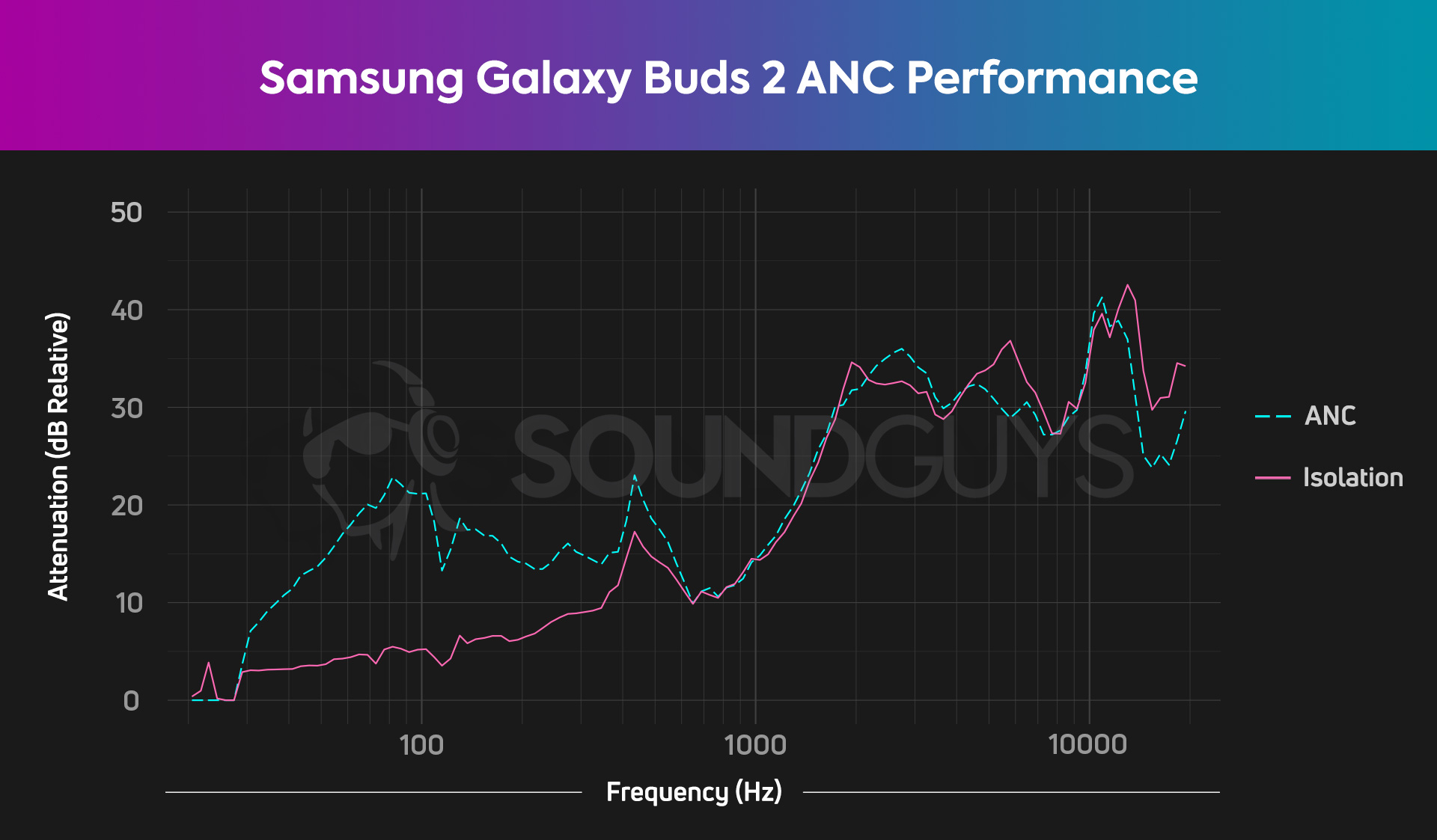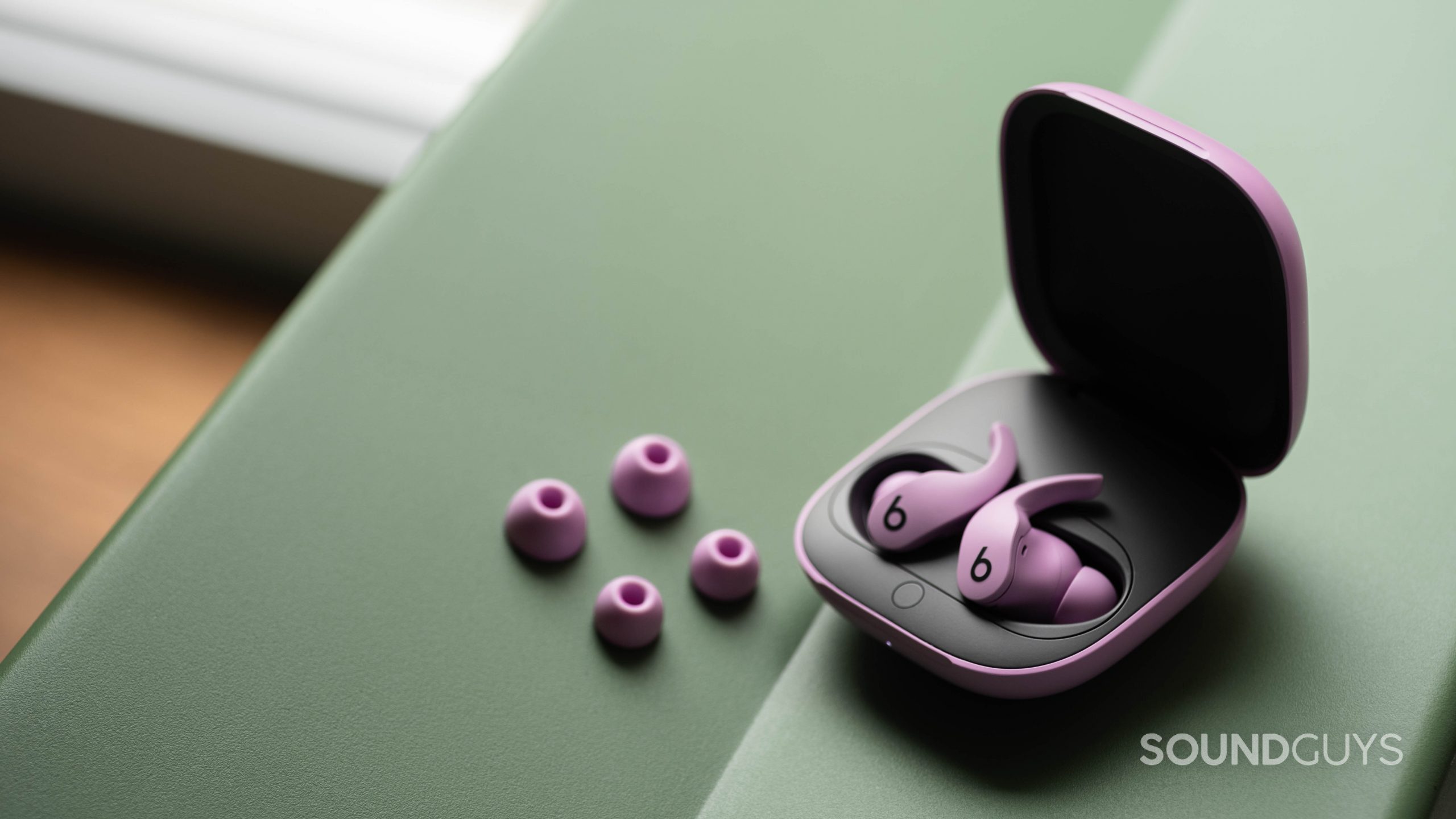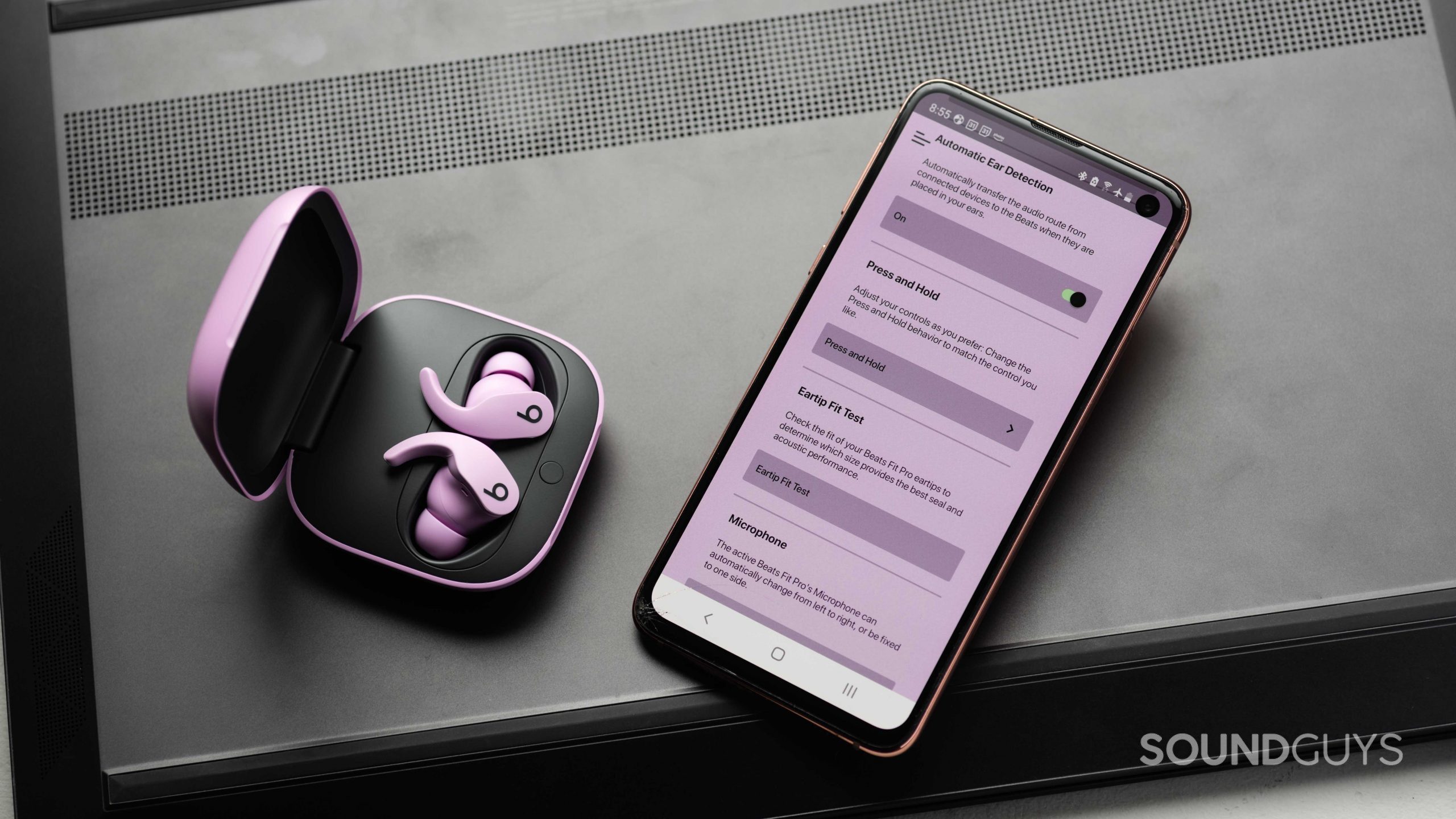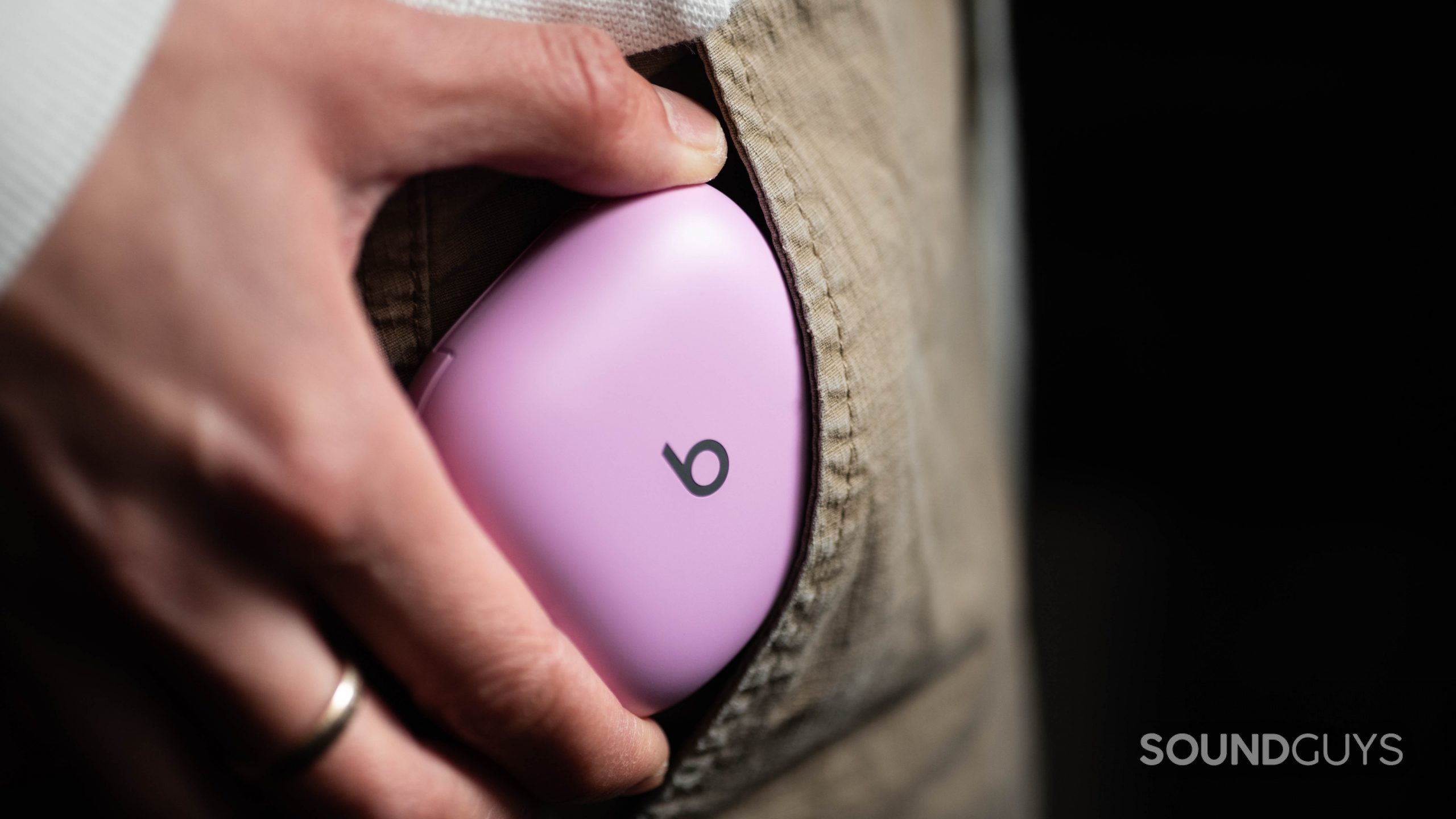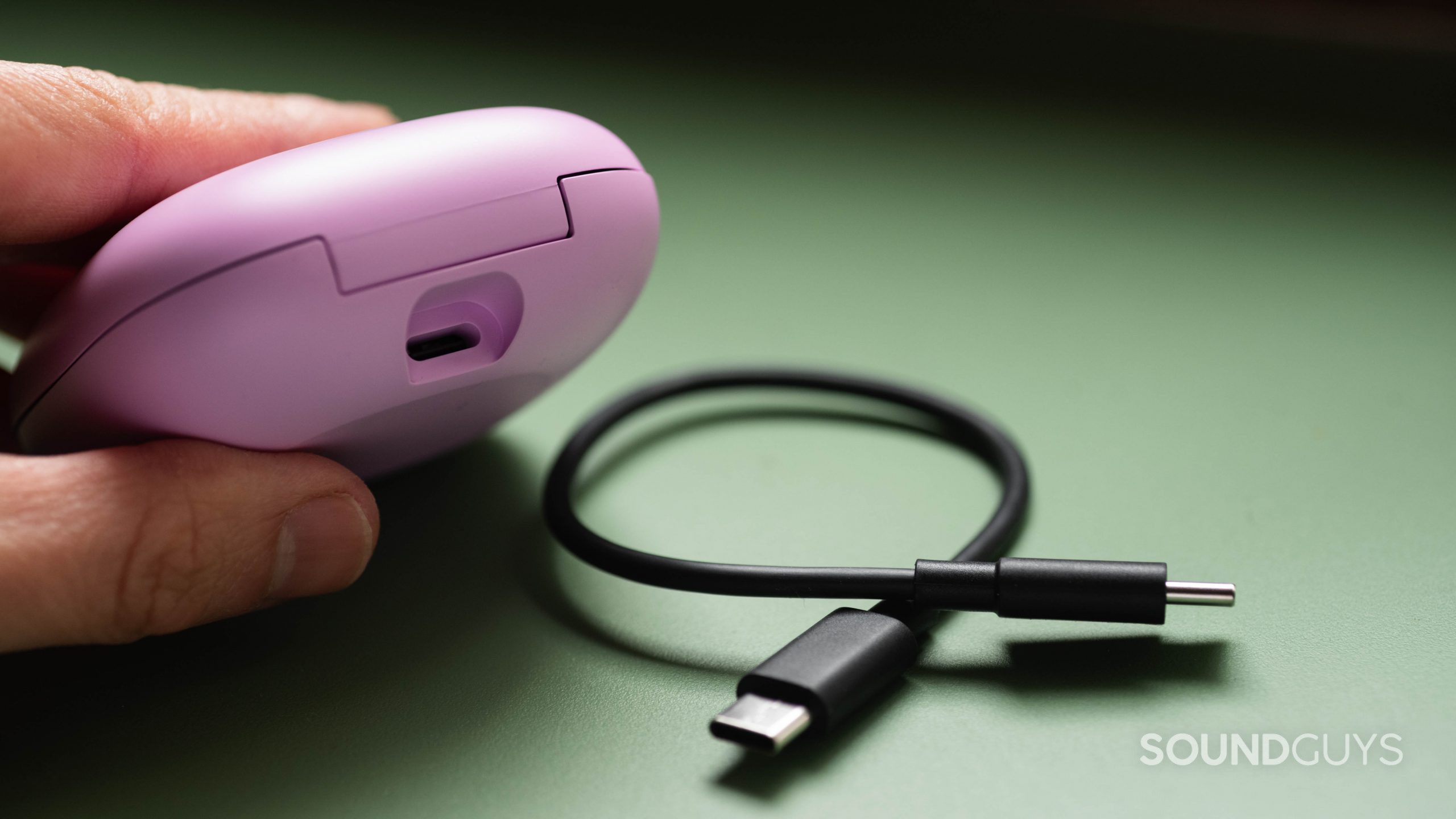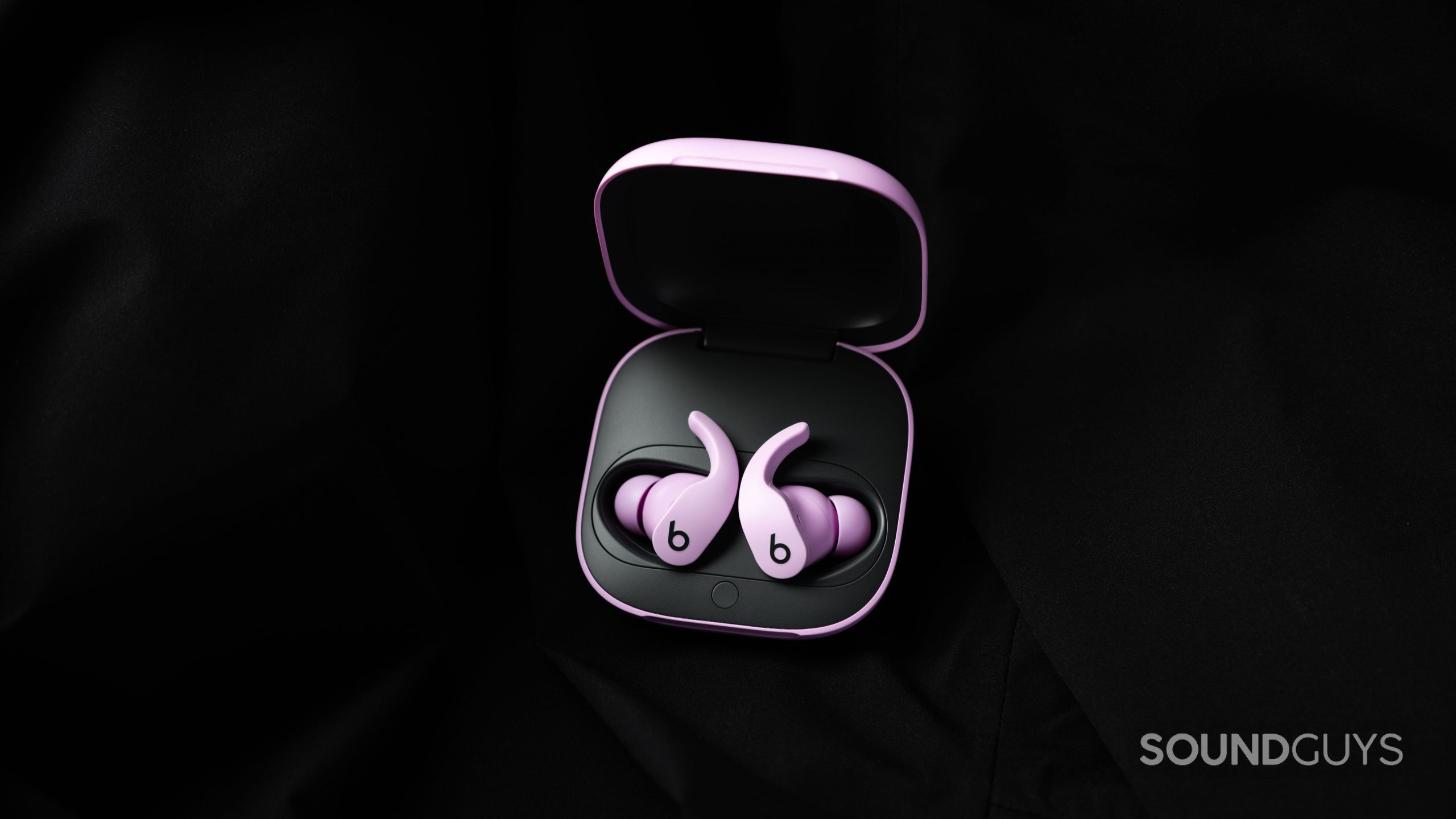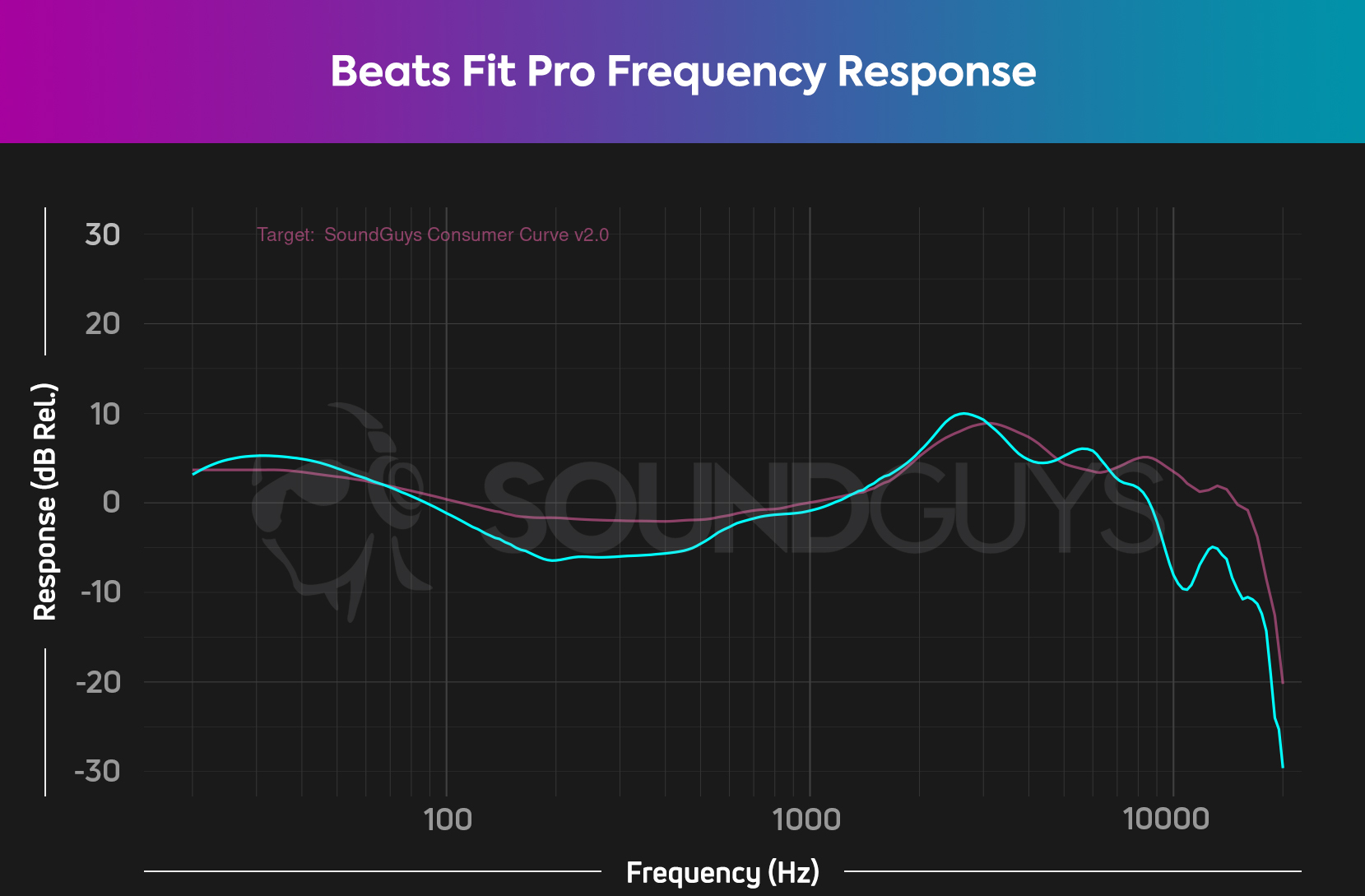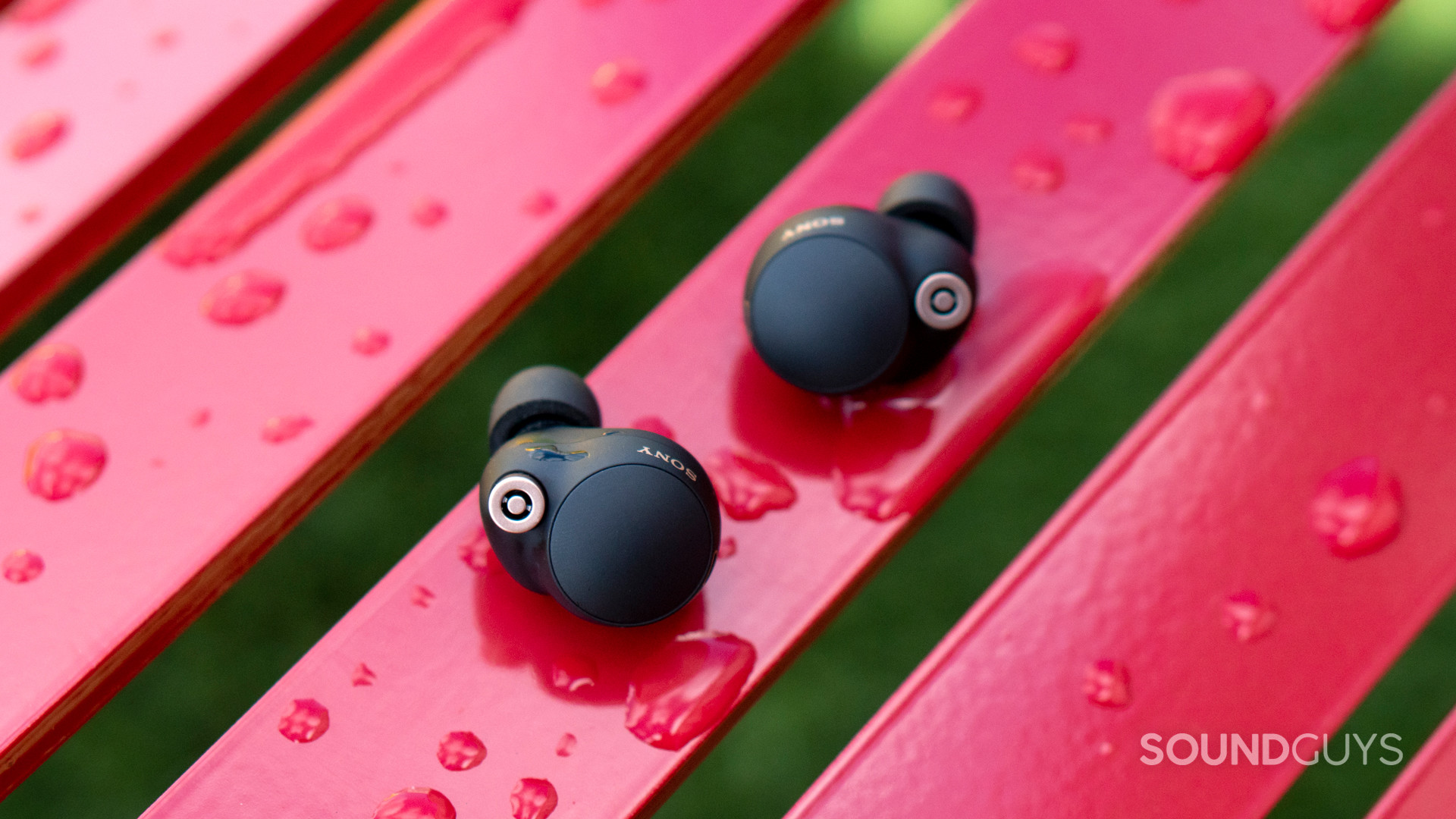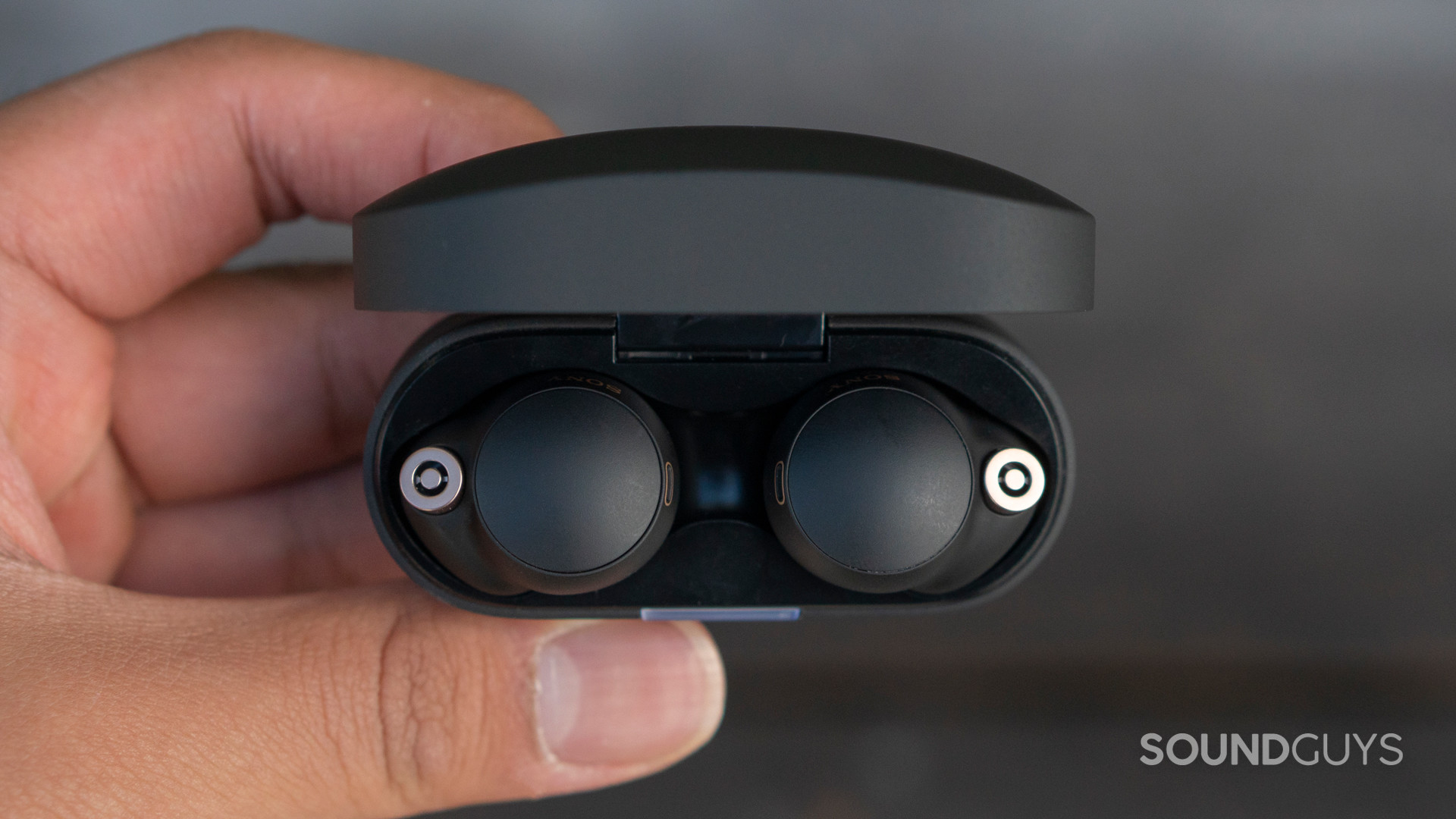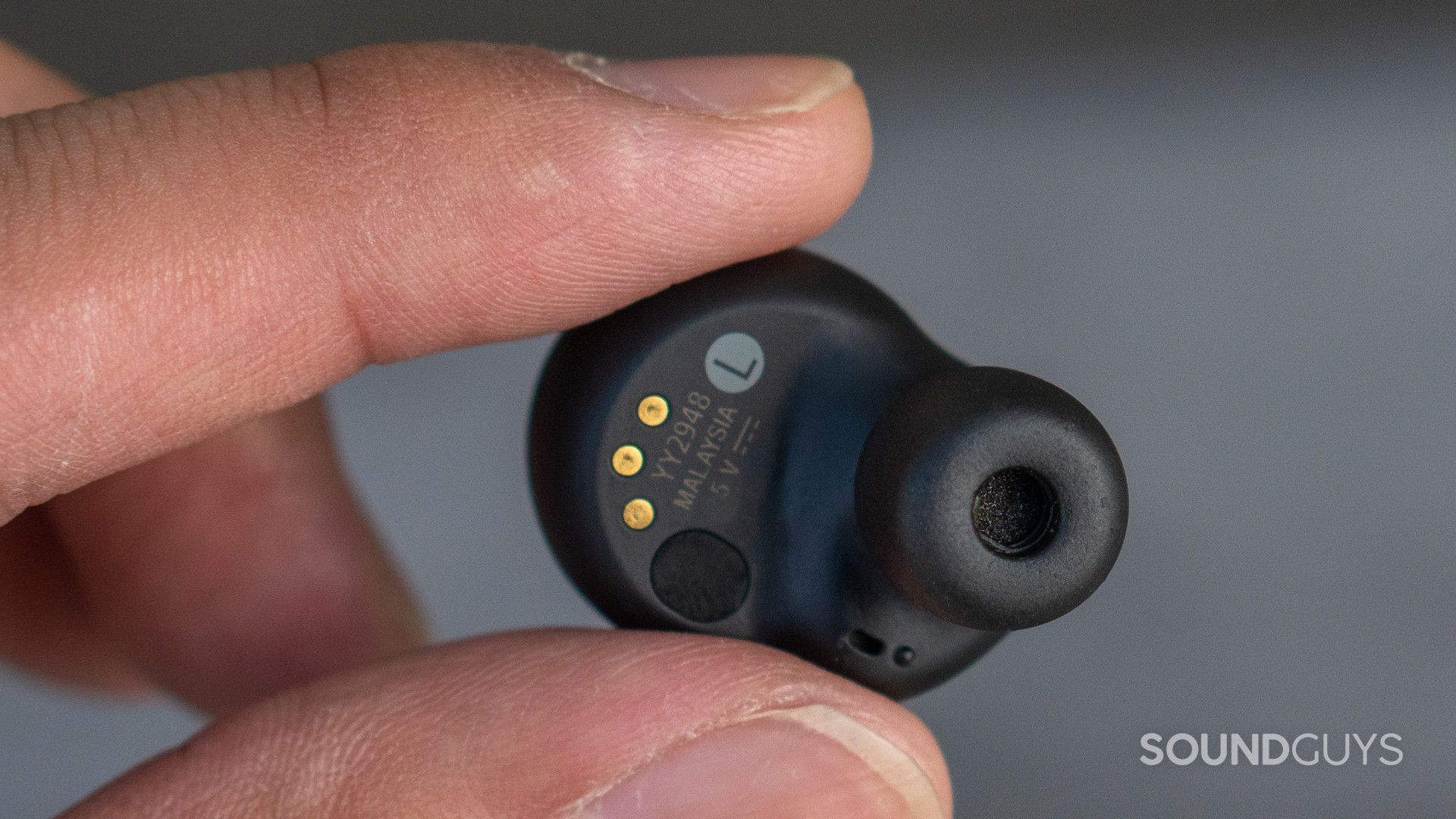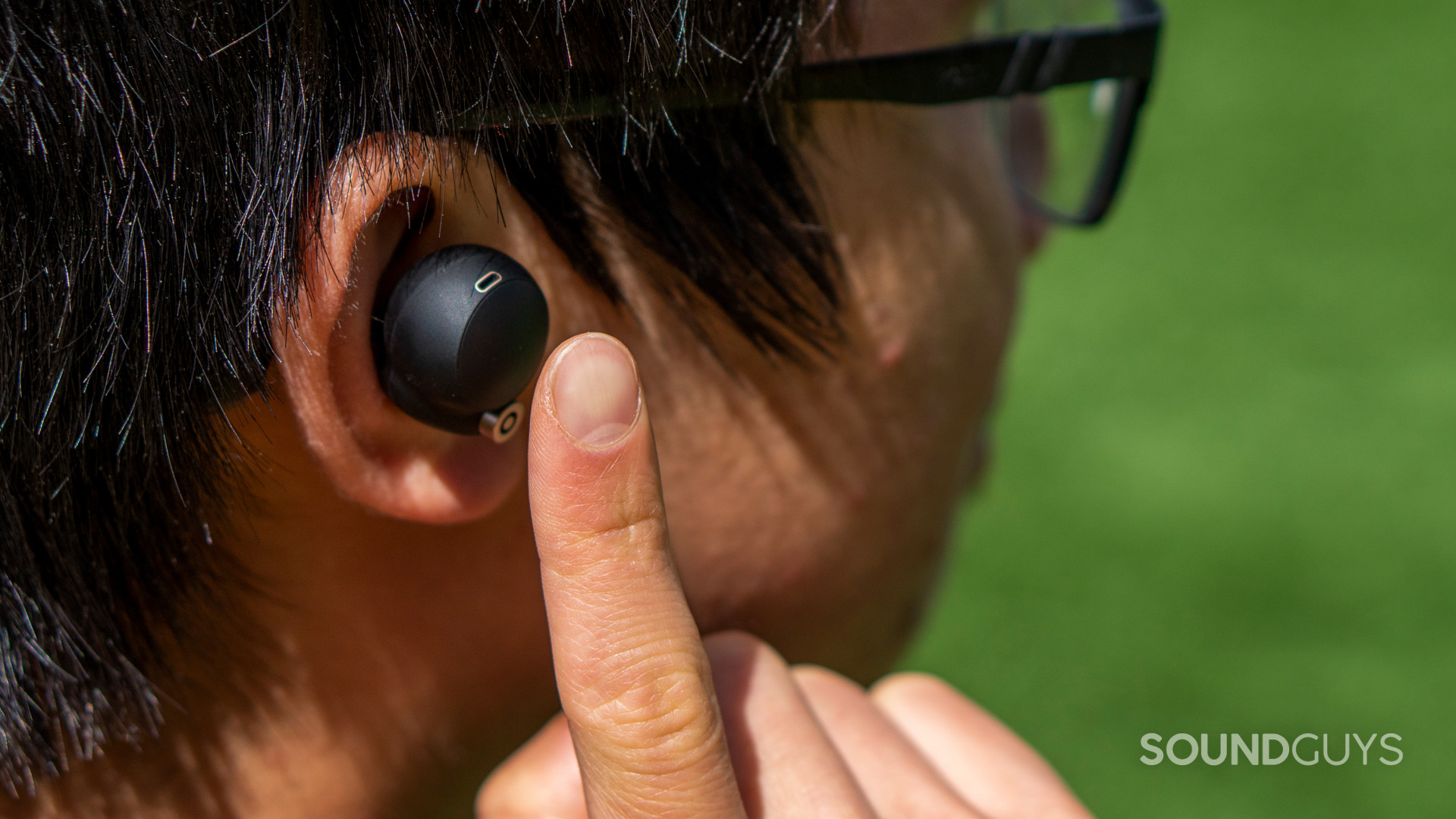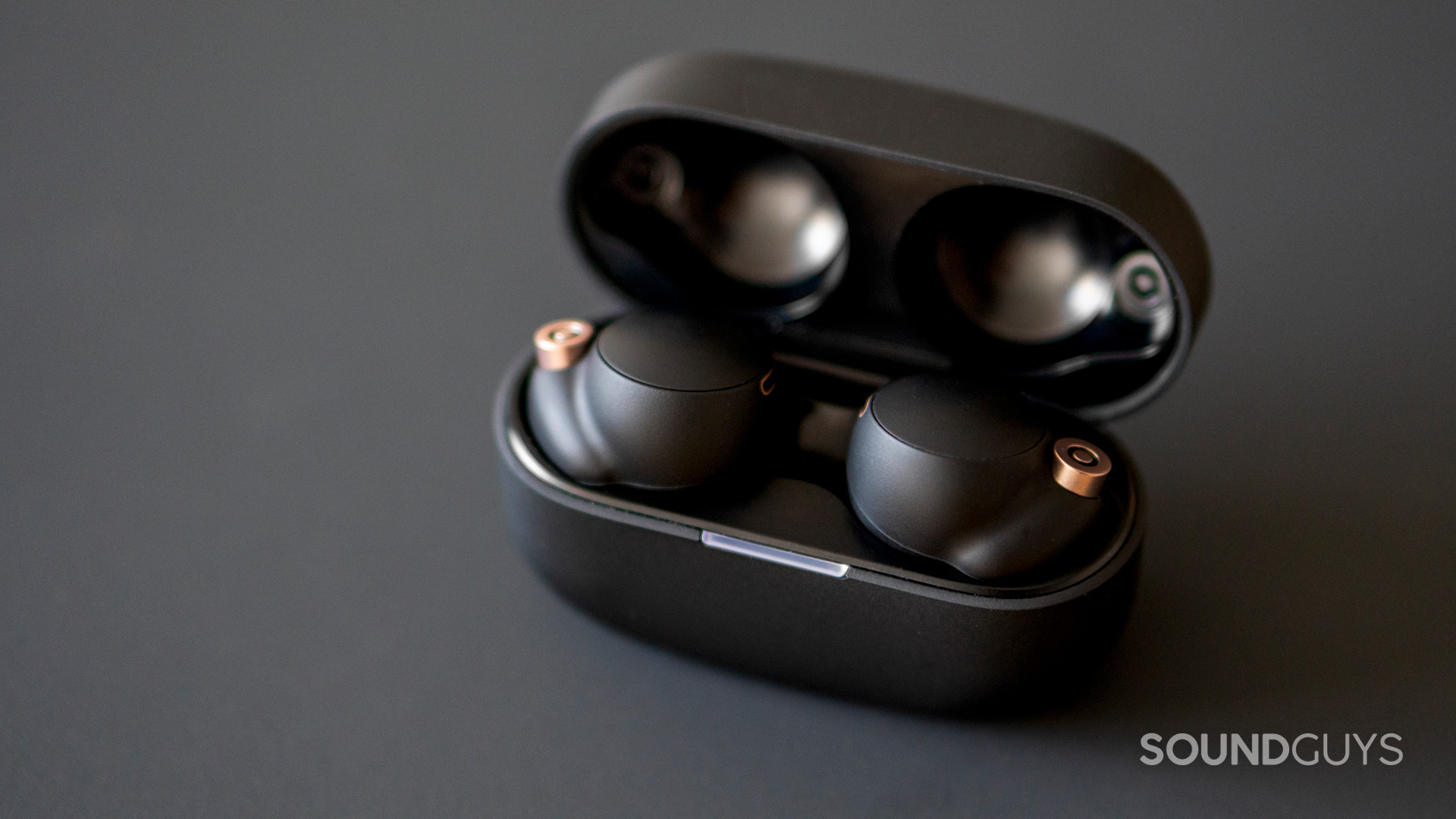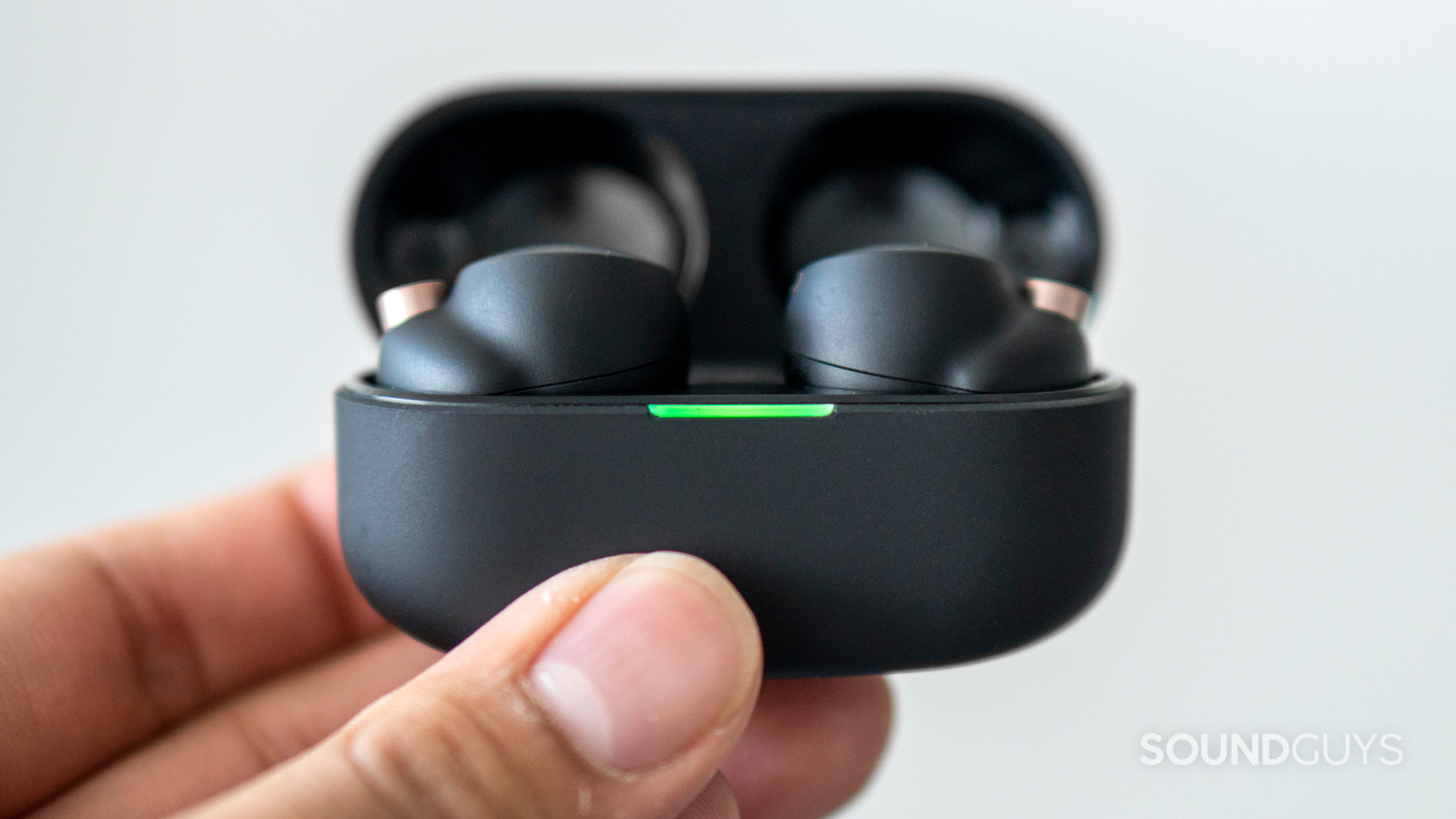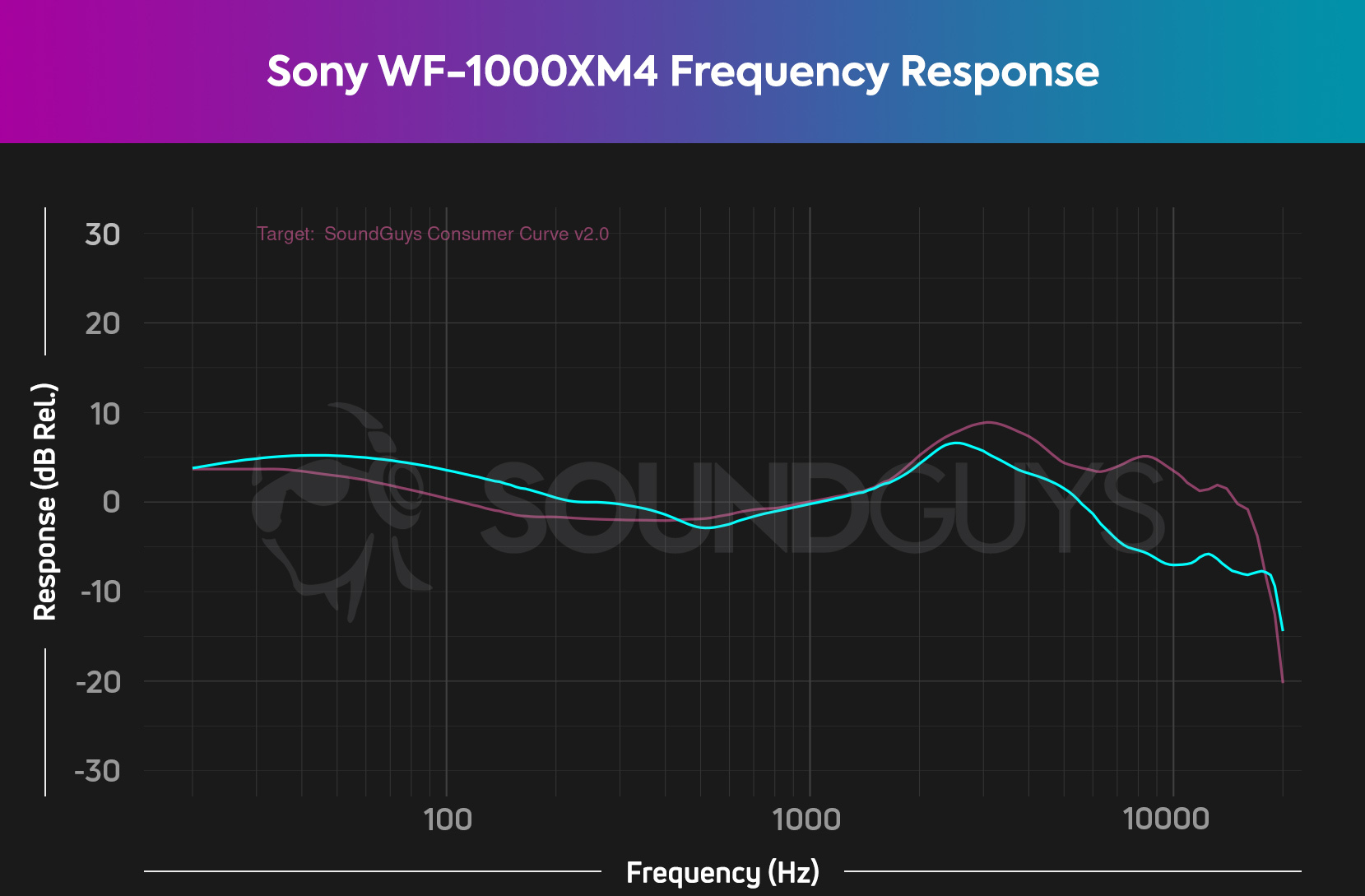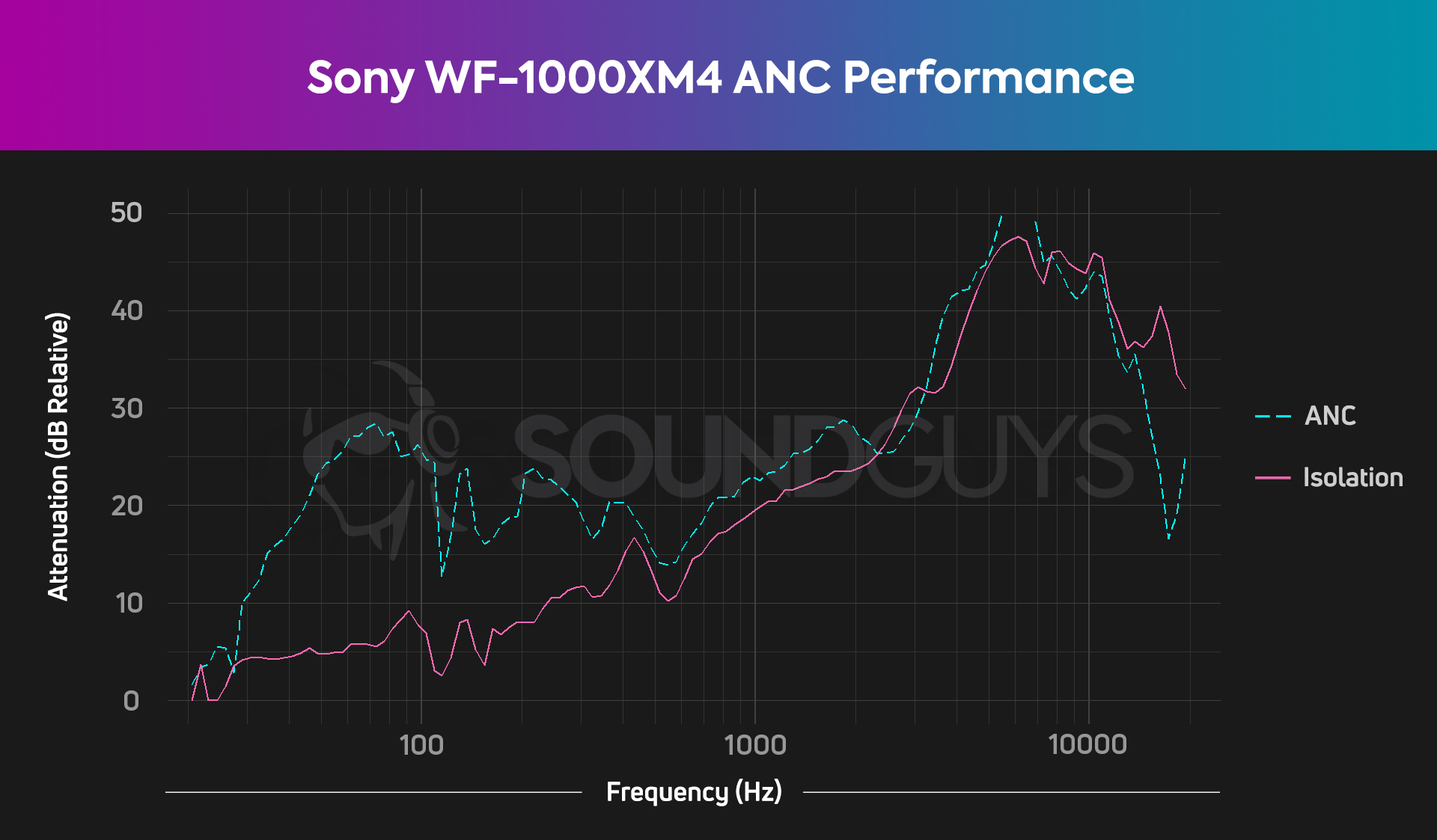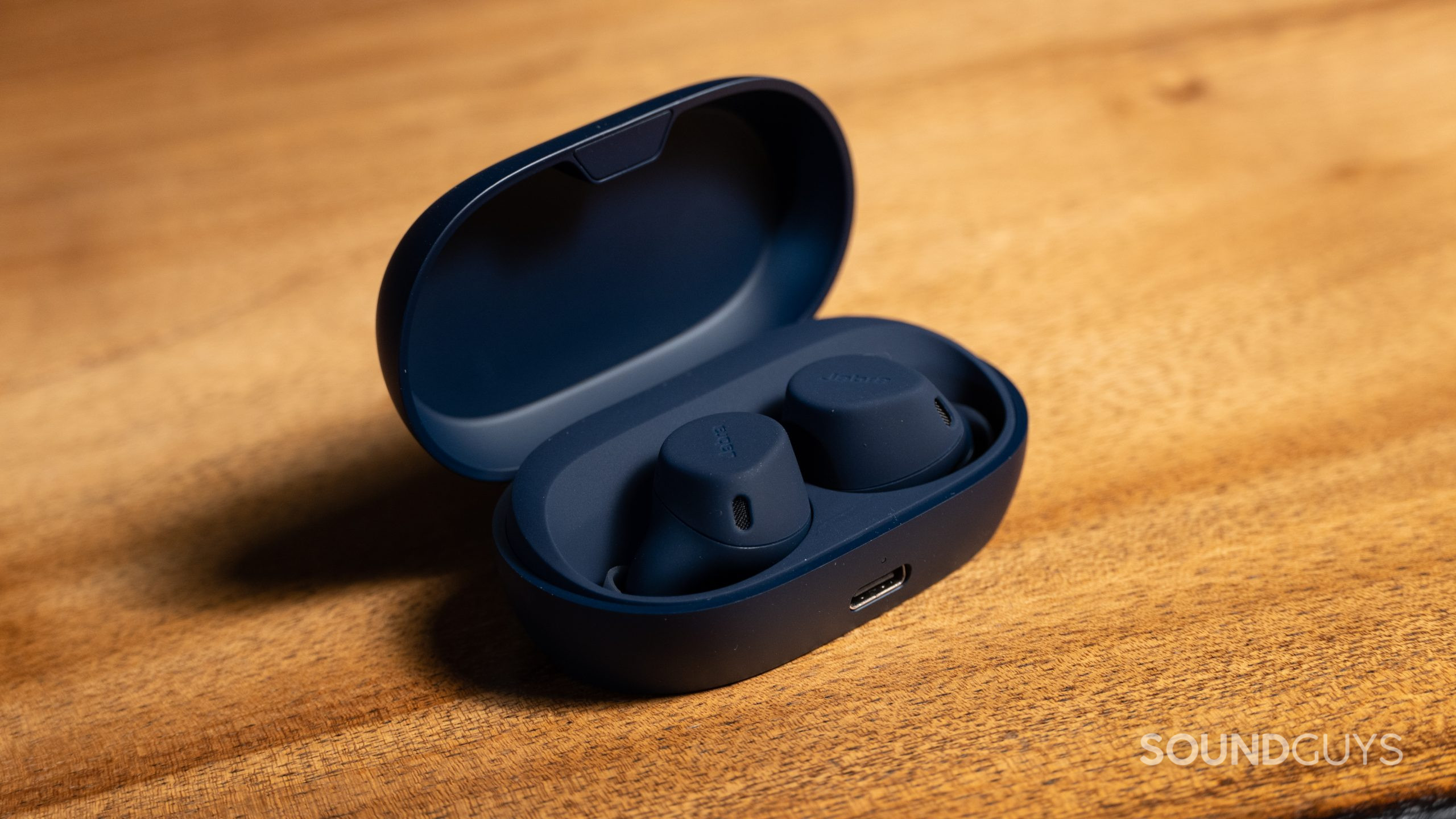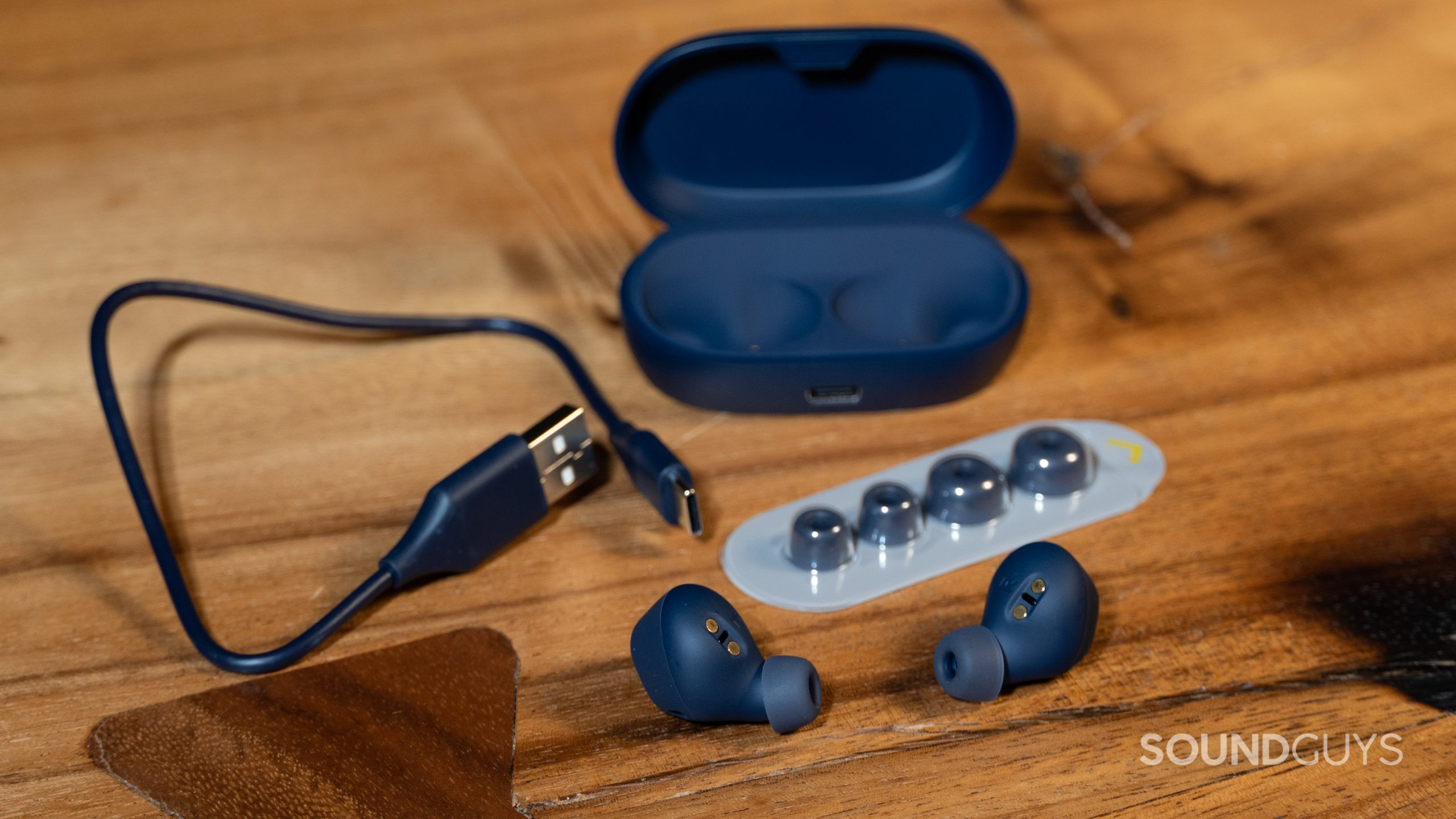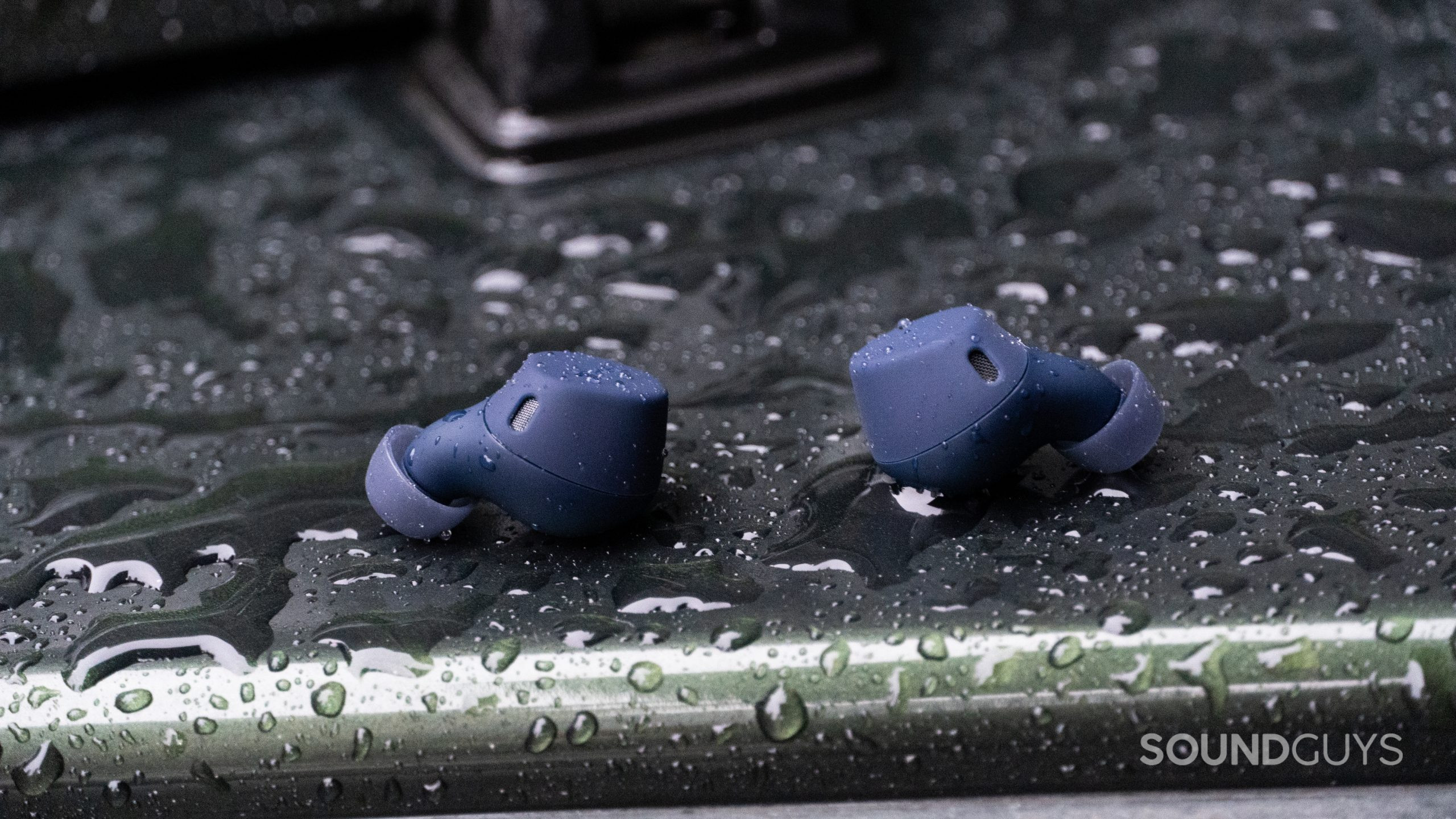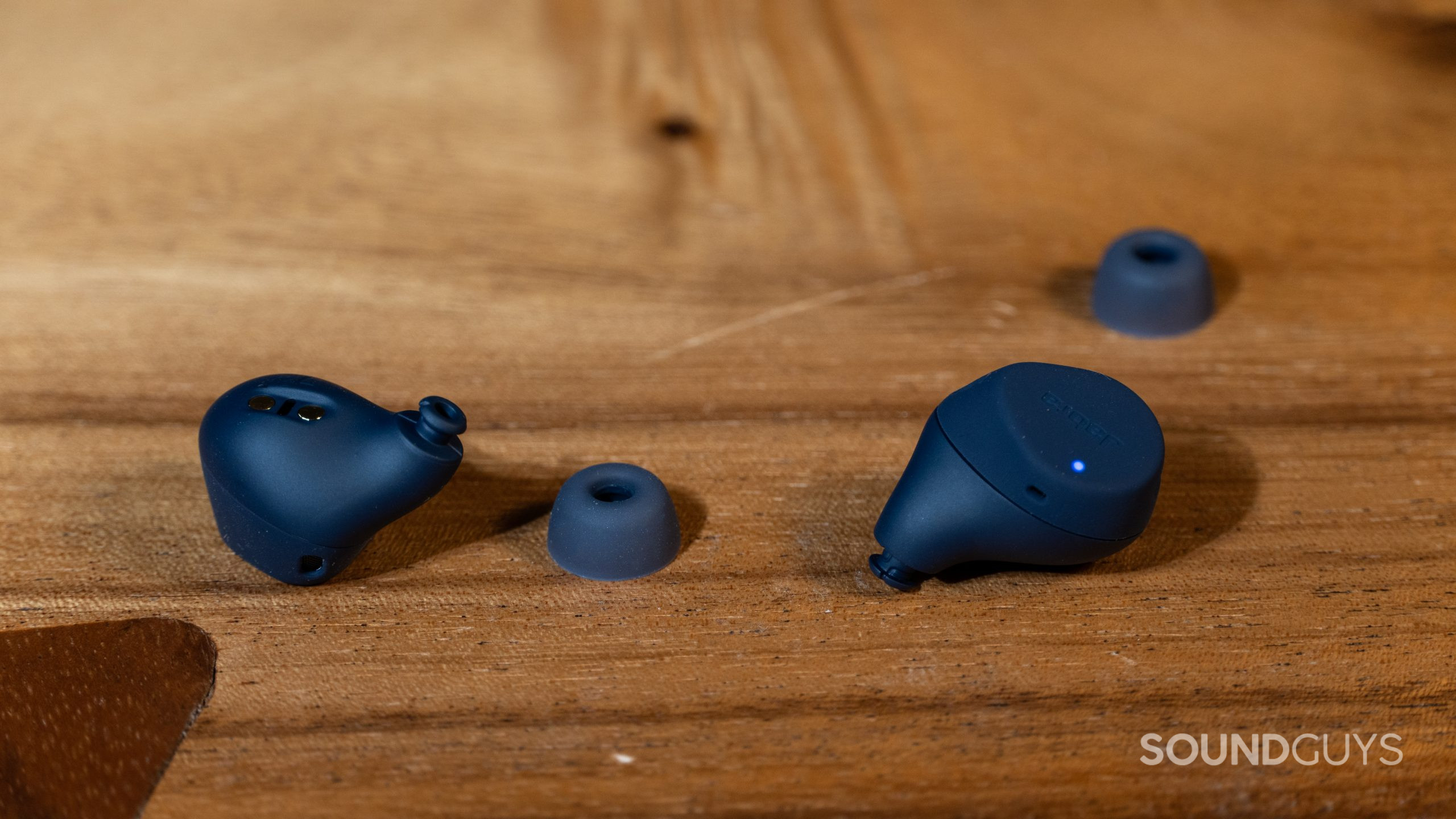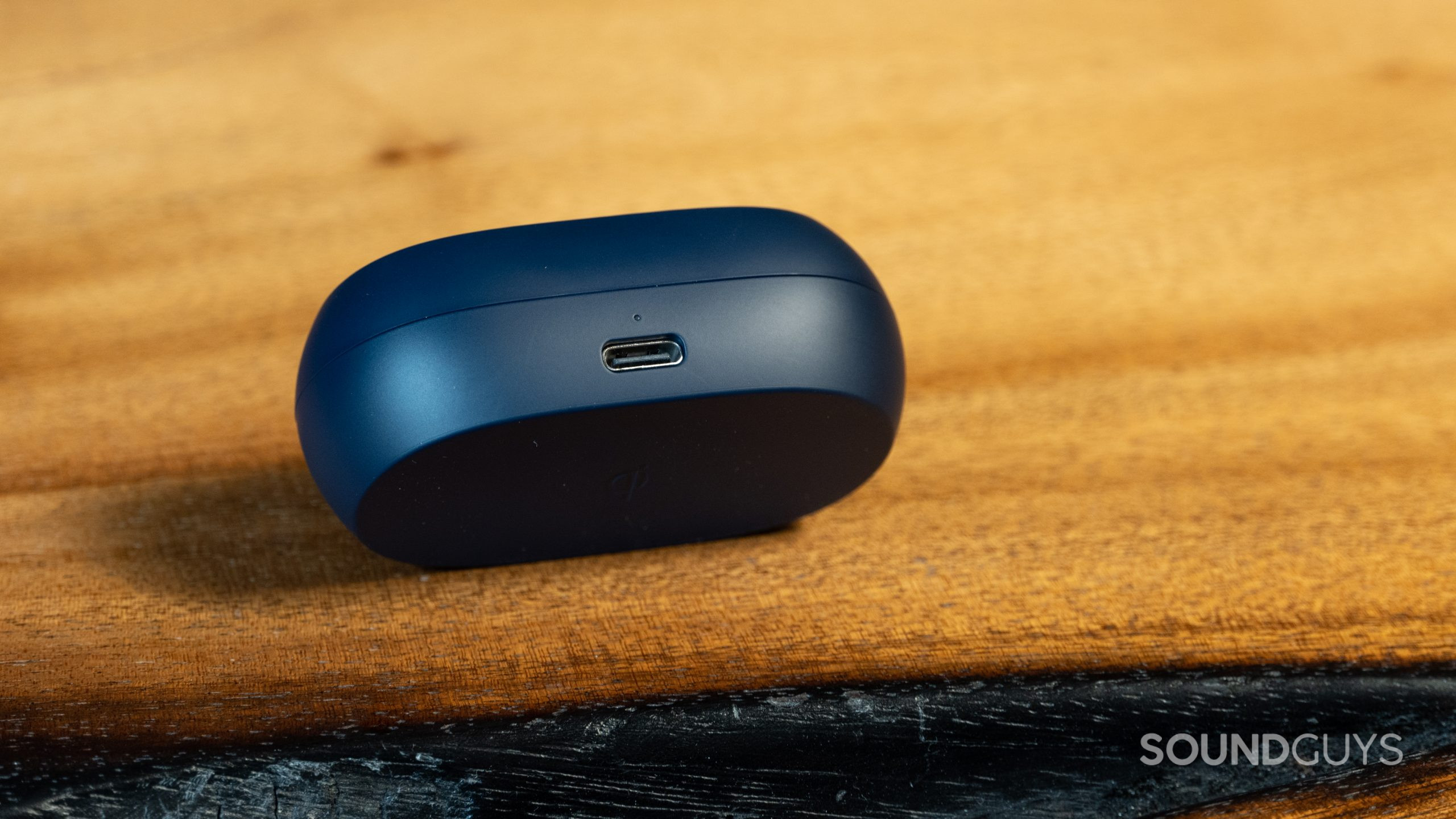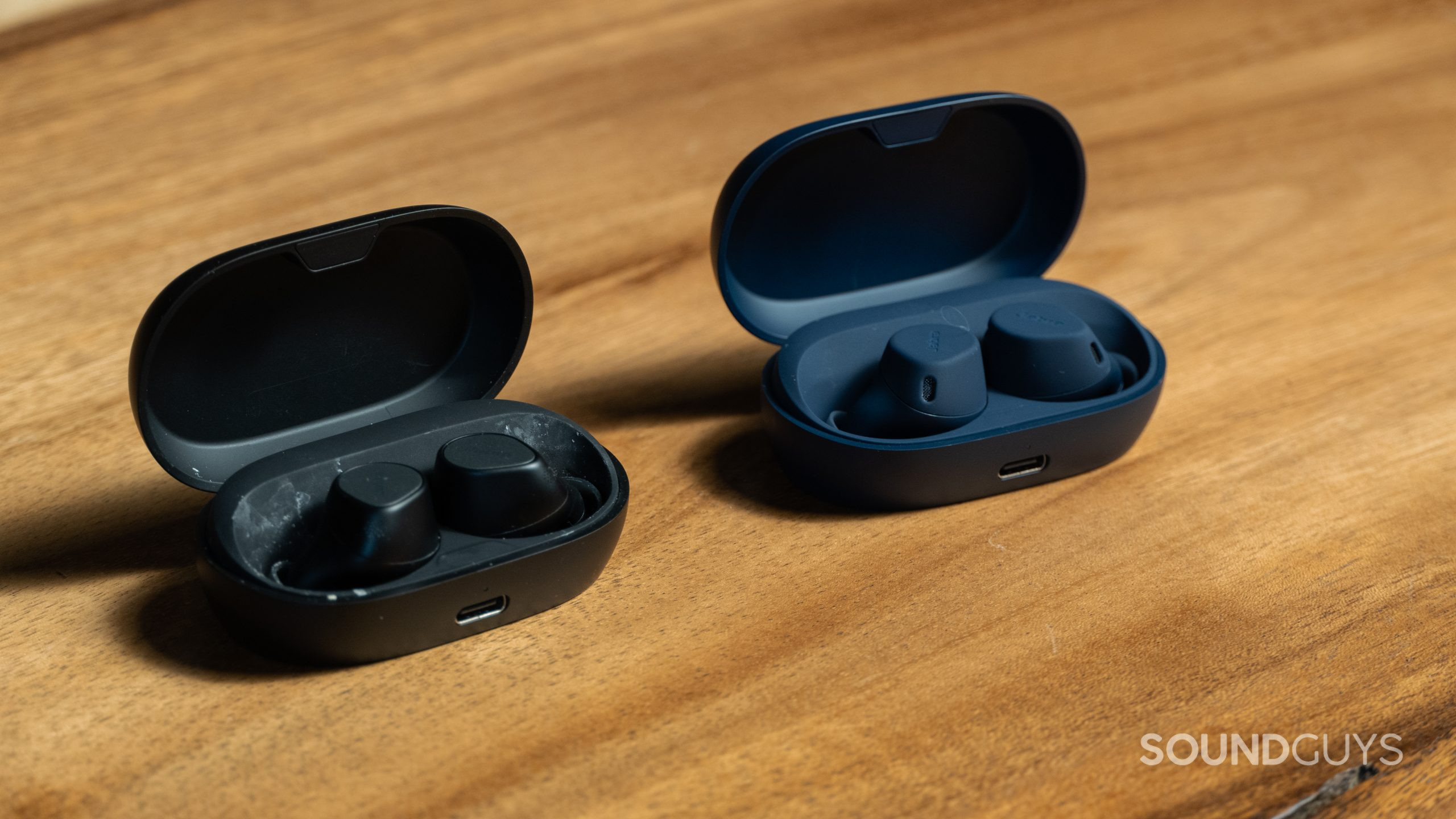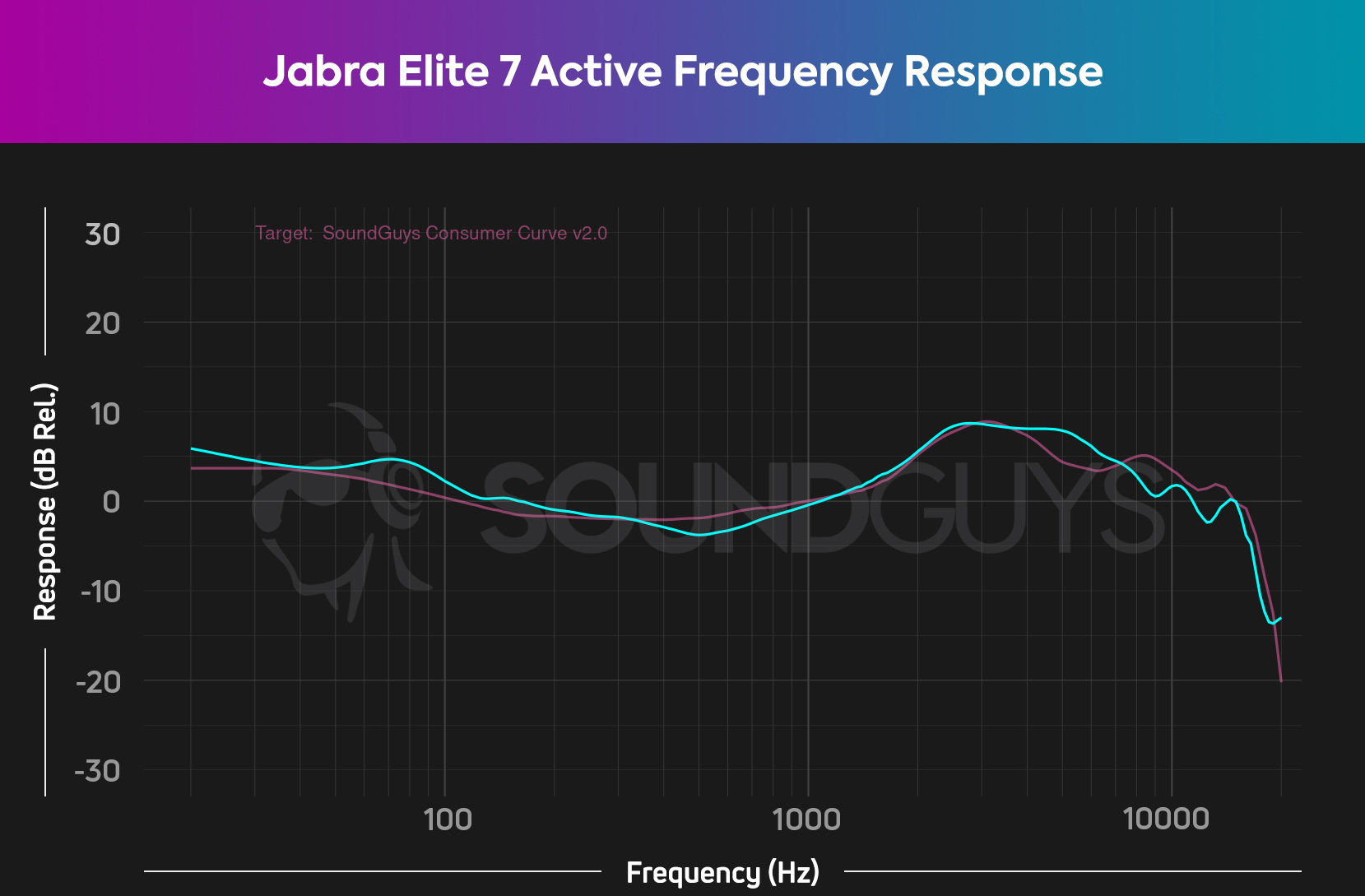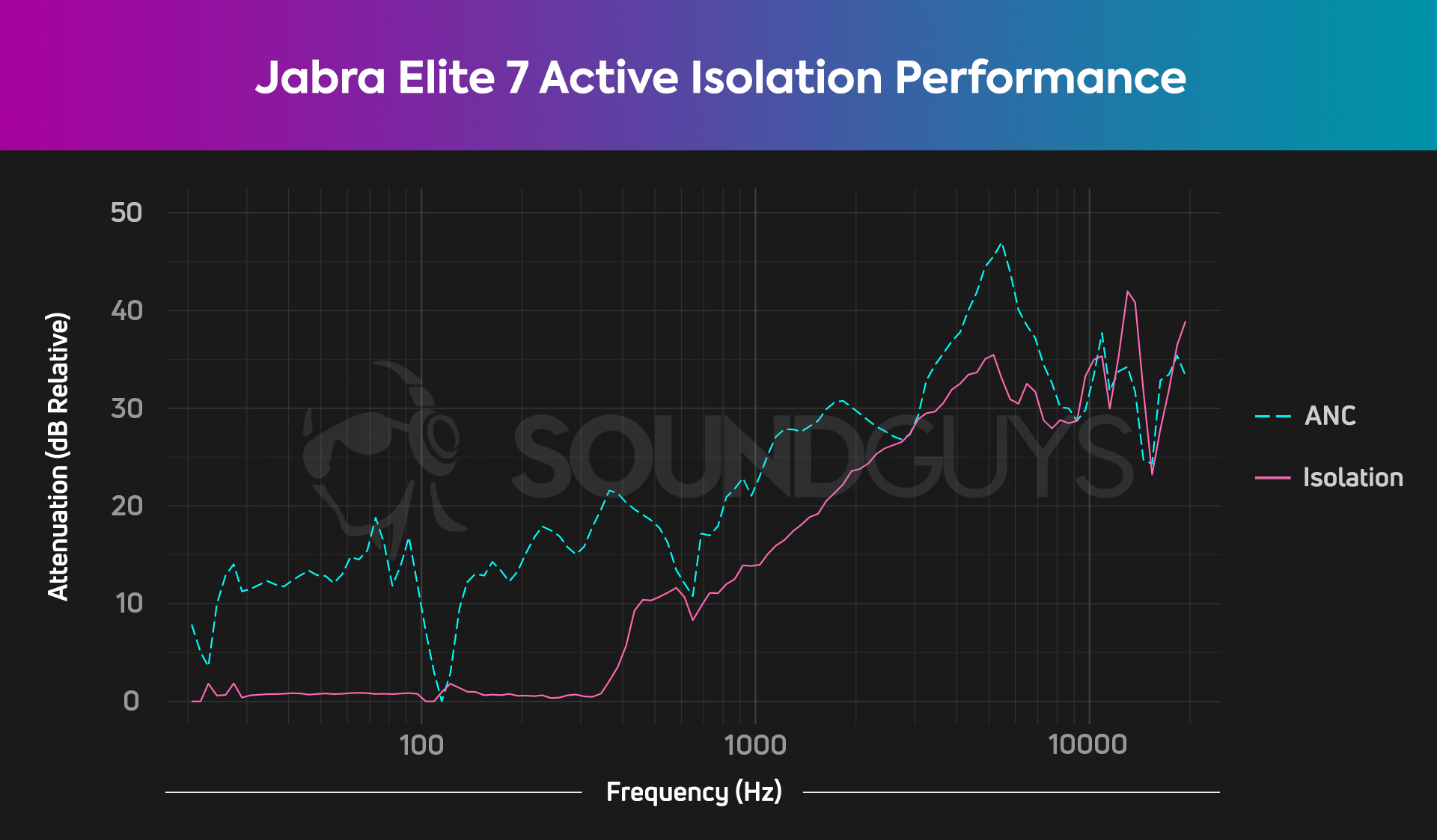Affiliate links on SoundGuys may earn us a commission. Learn more.
Best wireless earbuds
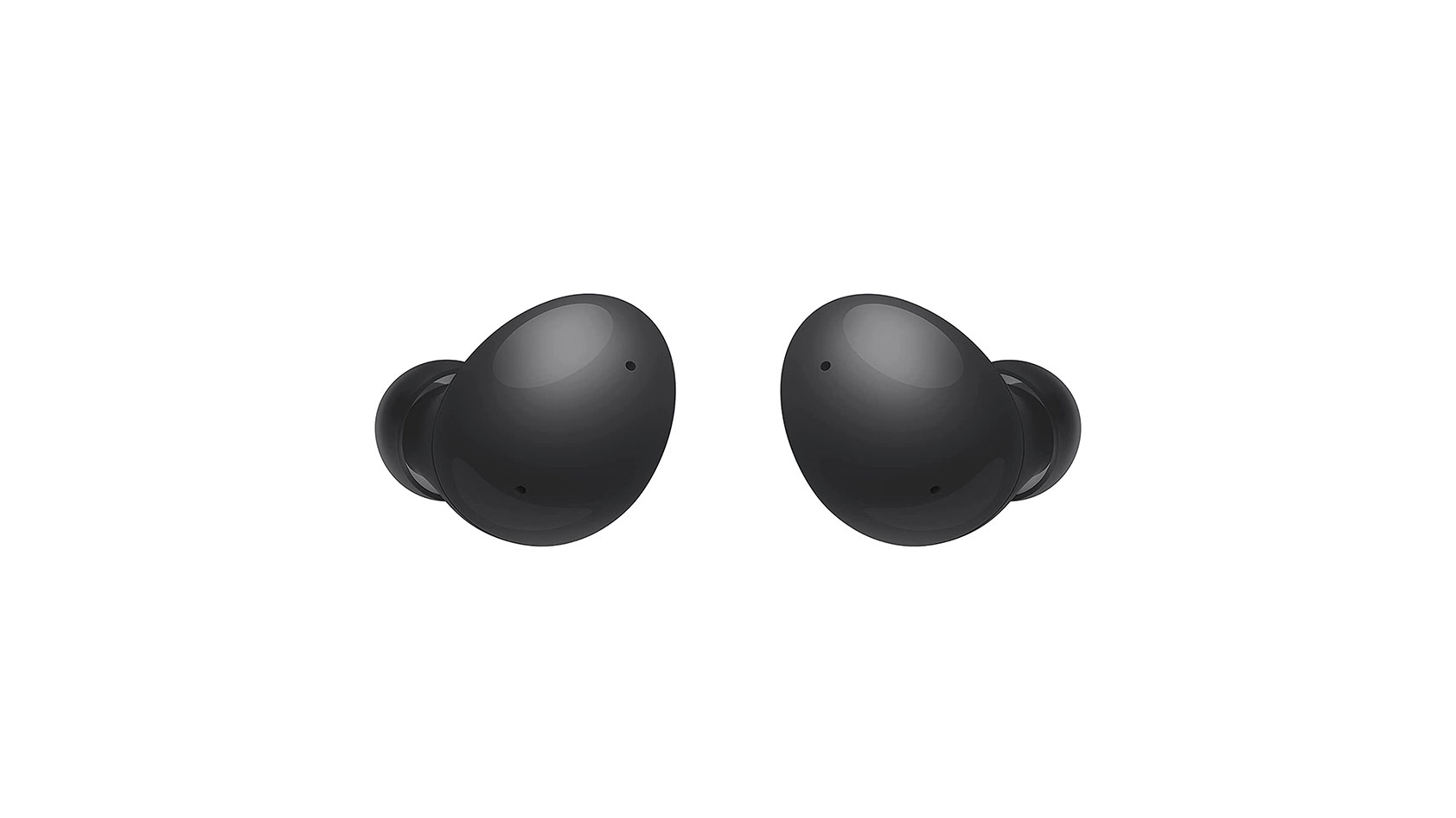
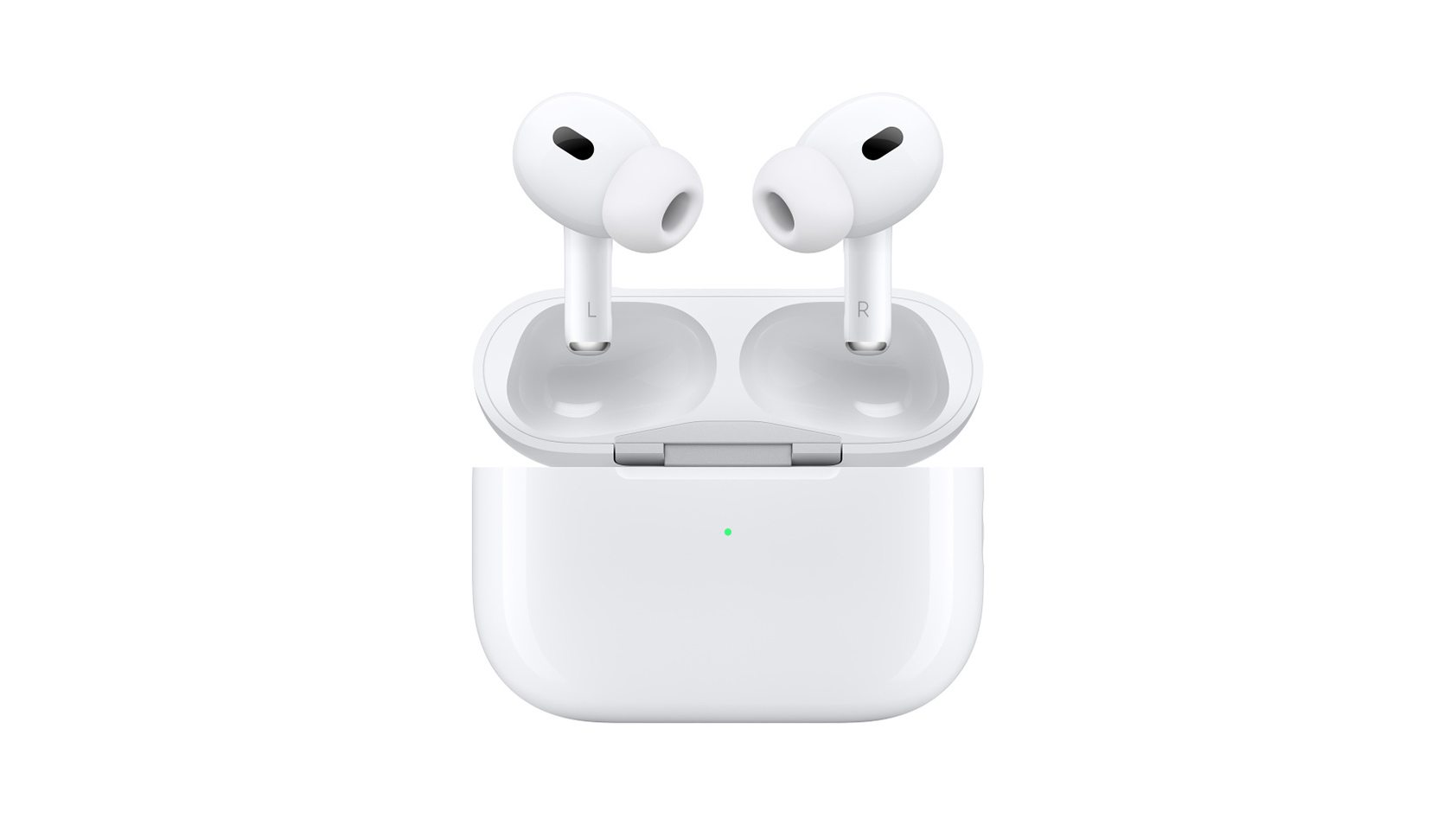
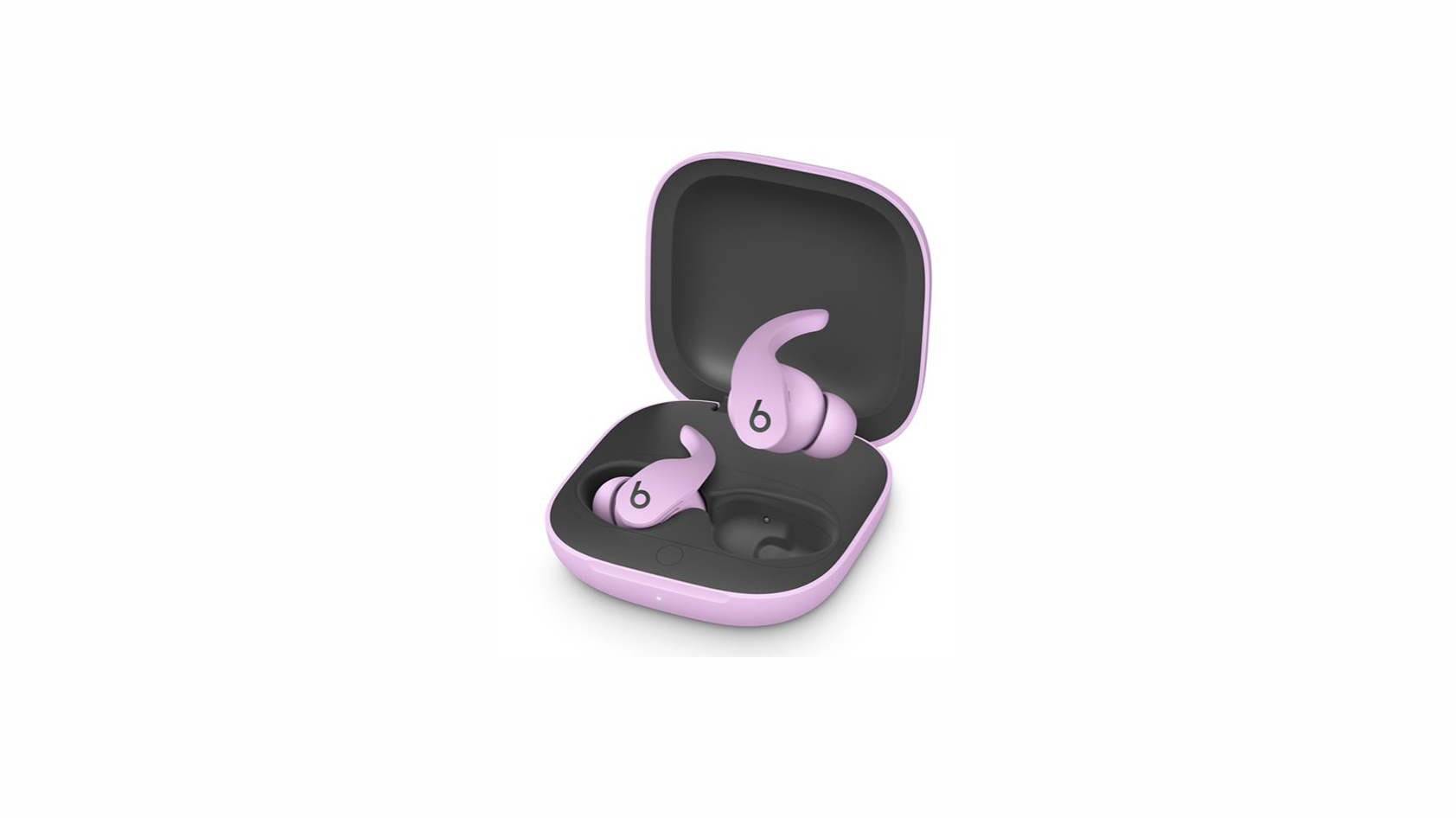
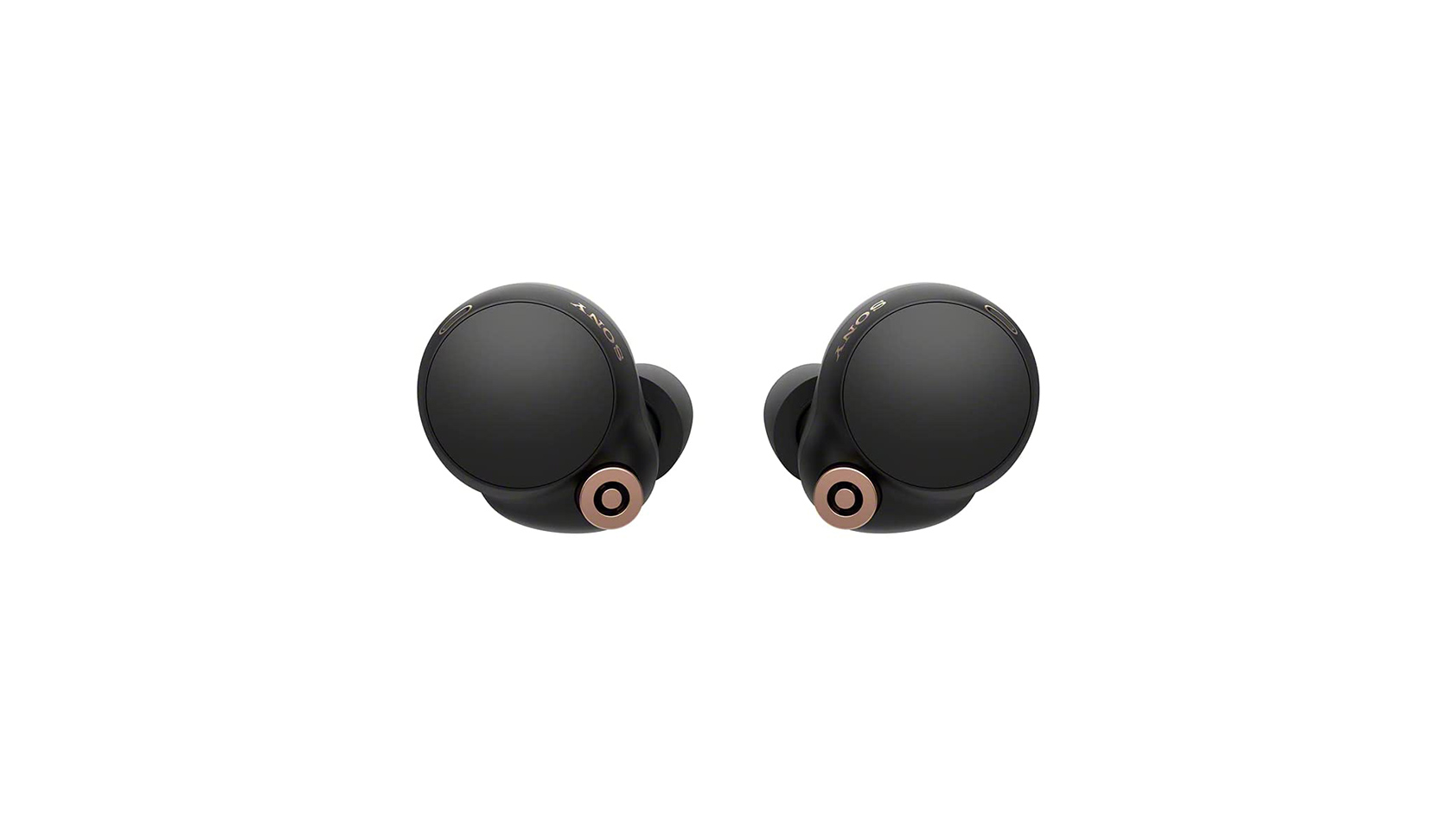
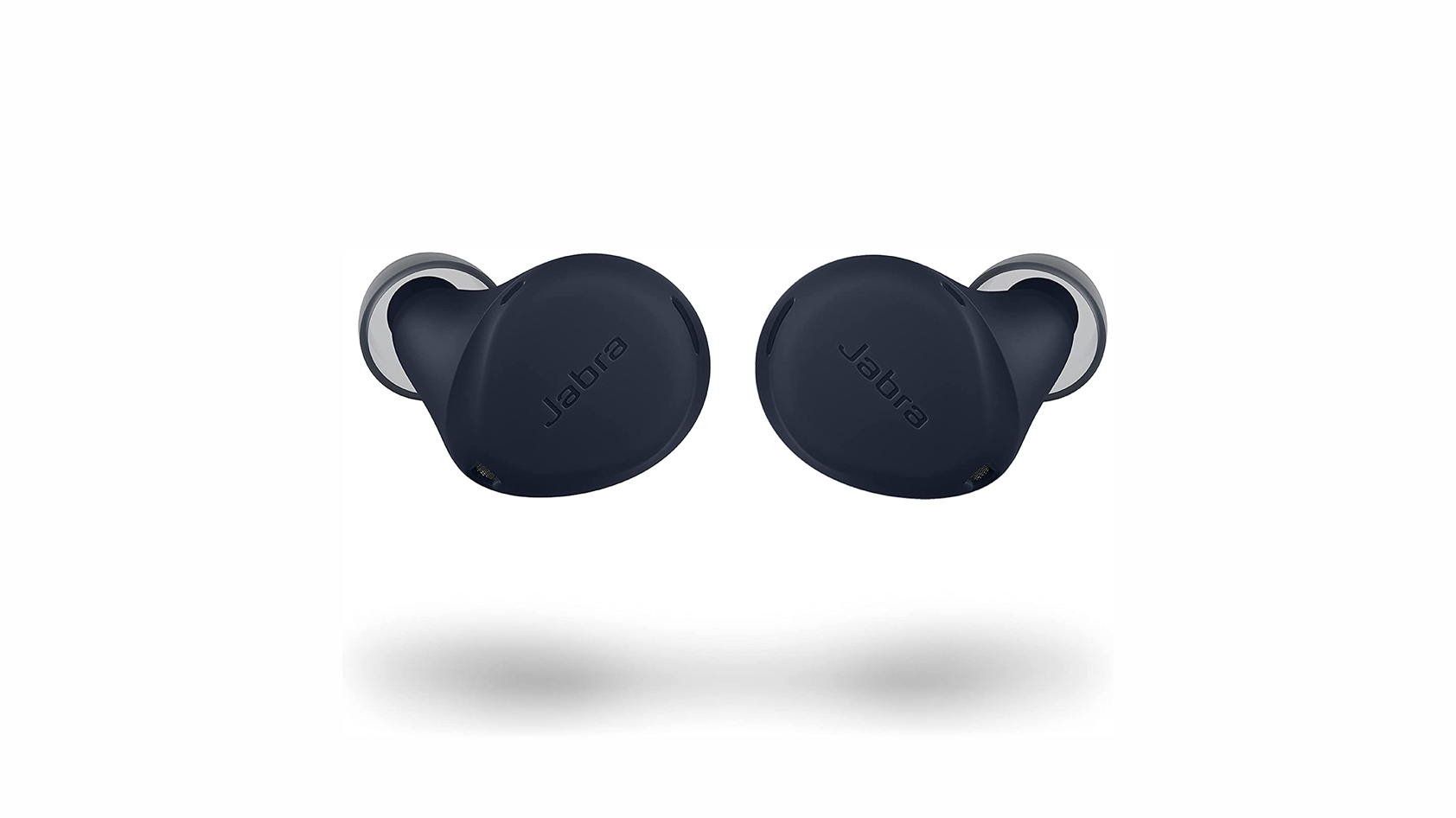
True wireless earbuds have matured tremendously since their debut. The category, once rife with sub-par picks, is now teaming with premium options from audio stalwarts like Sony and Bose. Heck, we’re even seeing affordable active noise canceling (ANC) options flood the market too. As a quickly evolving category, wireless earbuds blur the line between audio devices and smart wearable technology. Our selection of the best wireless earbuds covers everything from ANC to workout picks, and if this list is too rich for your blood, check out our picks for the best wireless earbuds under $100.
Editor’s note: this list of the best wireless earbuds was updated on May 30, 2023, to update formatting, links.
For our top five picks, you can find the isolation and frequency response charts at the end of each image gallery. You can learn more about how to read our charts.
The best pair of wireless earbuds for most: Samsung Galaxy Buds 2 Pro
Samsung Galaxy Buds 2 is the best wireless earbuds for most people because it has great noise canceling that outdoes its price. The Galaxy Buds 2 is reasonably priced and can often be found between $100-129 USD. There’s no app support on iOS. iPhone owners, we recommend you get something else but if you can’t stay away from the Buds 2, borrow a friend’s Android phone for updates.
Sound quality is great: AKG tuned the drivers to reproduce slightly amplified mids for consumer-friendly sound. This broad, slight emphasis bodes well for popular genres of music. Anyone who enjoys a bit more oomph to an underscoring kick drum will appreciate these buds. ANC performance is very good and renders 90Hz frequencies one-quarter their original perceived loudness.
With the Galaxy Buds 2, you get premium features and access to big updates... if you have an Android phone.
You operate the Galaxy Buds 2 via a touch panel on each earbud. As with all earbuds in the Samsung Galaxy Buds line, the Galaxy Buds 2 touch panels are very sensitive. We often experience command misfires which isn’t the case with other true wireless earbuds. But if you can accept the sensitive touch panels, you’ll enjoy stable Bluetooth 5.2 connectivity and support for two high-quality Bluetooth codecs: the Samsung Scalable Codec and AAC.
The company is dogged about releasing firmware updates that cover connection improvements. One of the best reasons to get the Galaxy Buds 2 is because of how liberal Samsung is with its updates. The first-gen Galaxy Buds received an update that enabled direct Spotify access, and we expect to see this same support throughout the Buds 2 lifecycle.
More and more of us rely on our earphones as communication devices; I for one take hands-free calls nearly every day. Anyone who spends a silly amount of time in conference calls or quelling their parents’ anxieties will be able to do so clearly with the Samsung Galaxy Buds Plus microphone system. It may not be quite as clear as the AirPods Pro or Sony WF-1000XM4, but it’s about the best you can get for the price.
Samsung Galaxy Buds 2 microphone demo (Ideal conditions):
Samsung Galaxy Buds 2 microphone demo (Office conditions):
Samsung Galaxy Buds 2 microphone demo (Windy conditions):
How does the microphone sound to you?

The best earbuds for iPhone owners: AirPods Pro (2nd generation)
The AirPods Pro (2nd generation) has ear tips for a better fit than the standard AirPods, great active noise canceling, and playback controls built into the stem. When using the AirPods Pro (2nd gen) with an iPhone, you get seamless connectivity and a host of control options directly from your phone’s Control Center. If you have other Apple source devices, you can seamlessly switch between them with the AirPods Pro (2nd generation) thanks to its H2 chip.
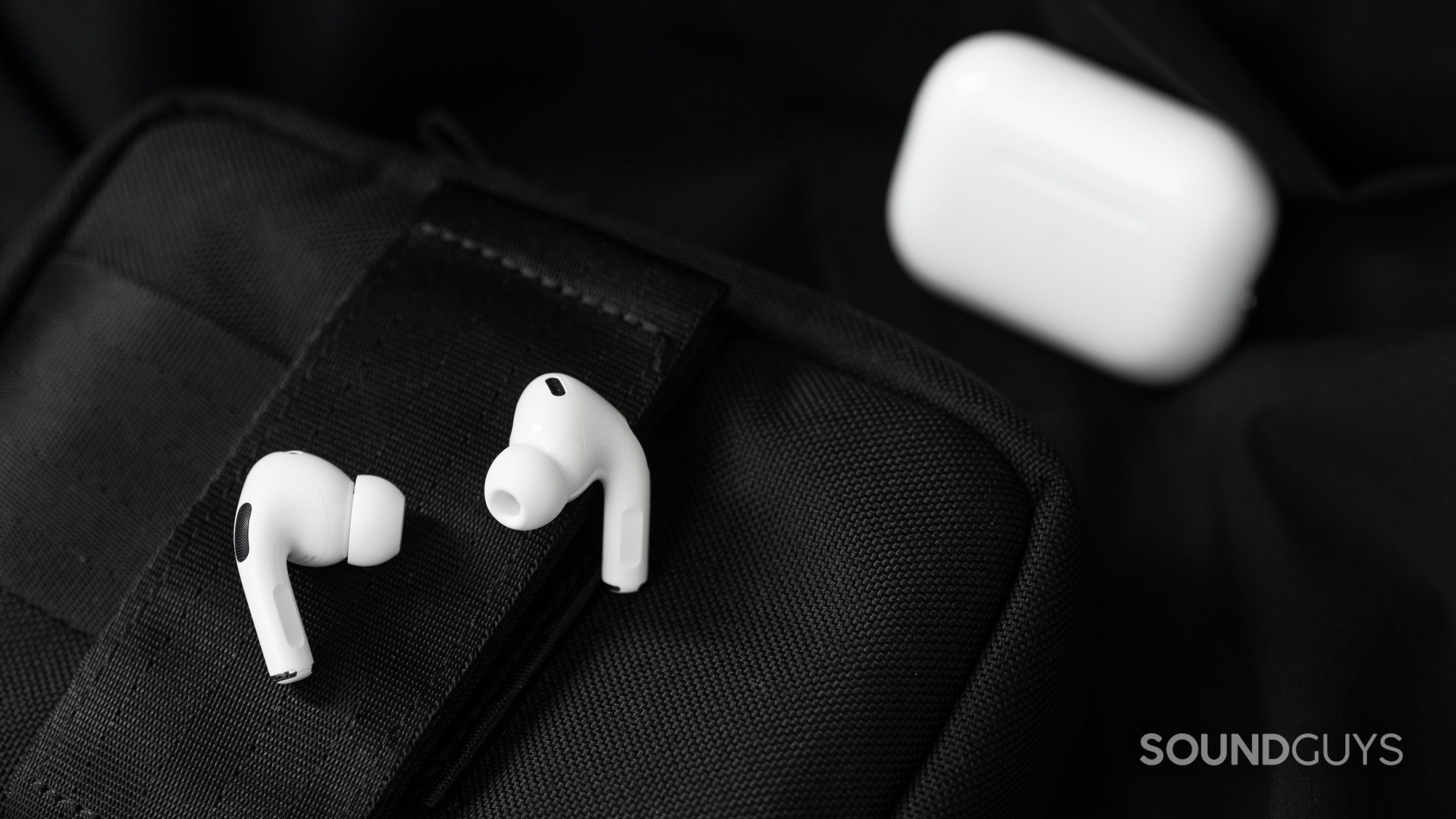
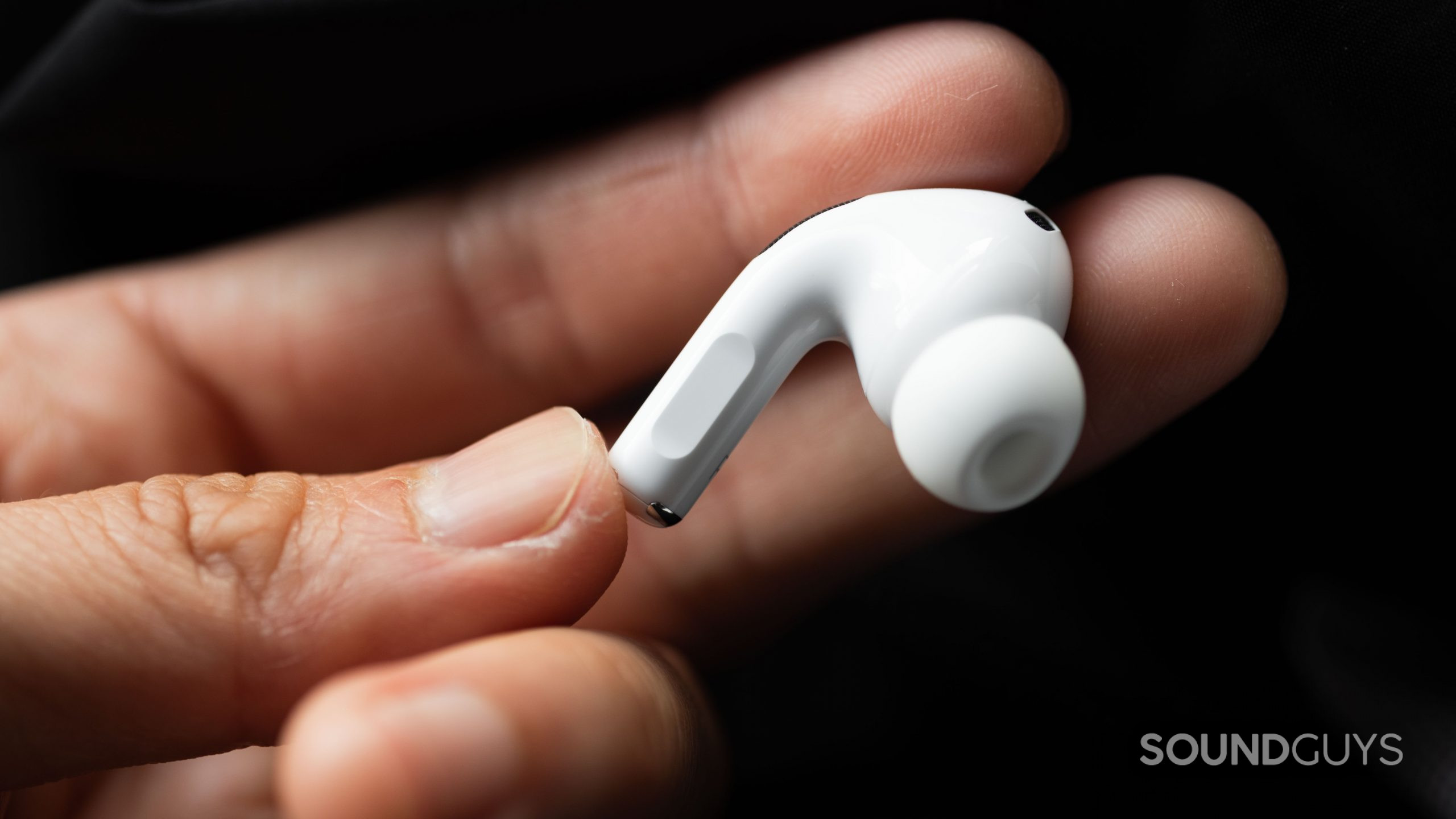
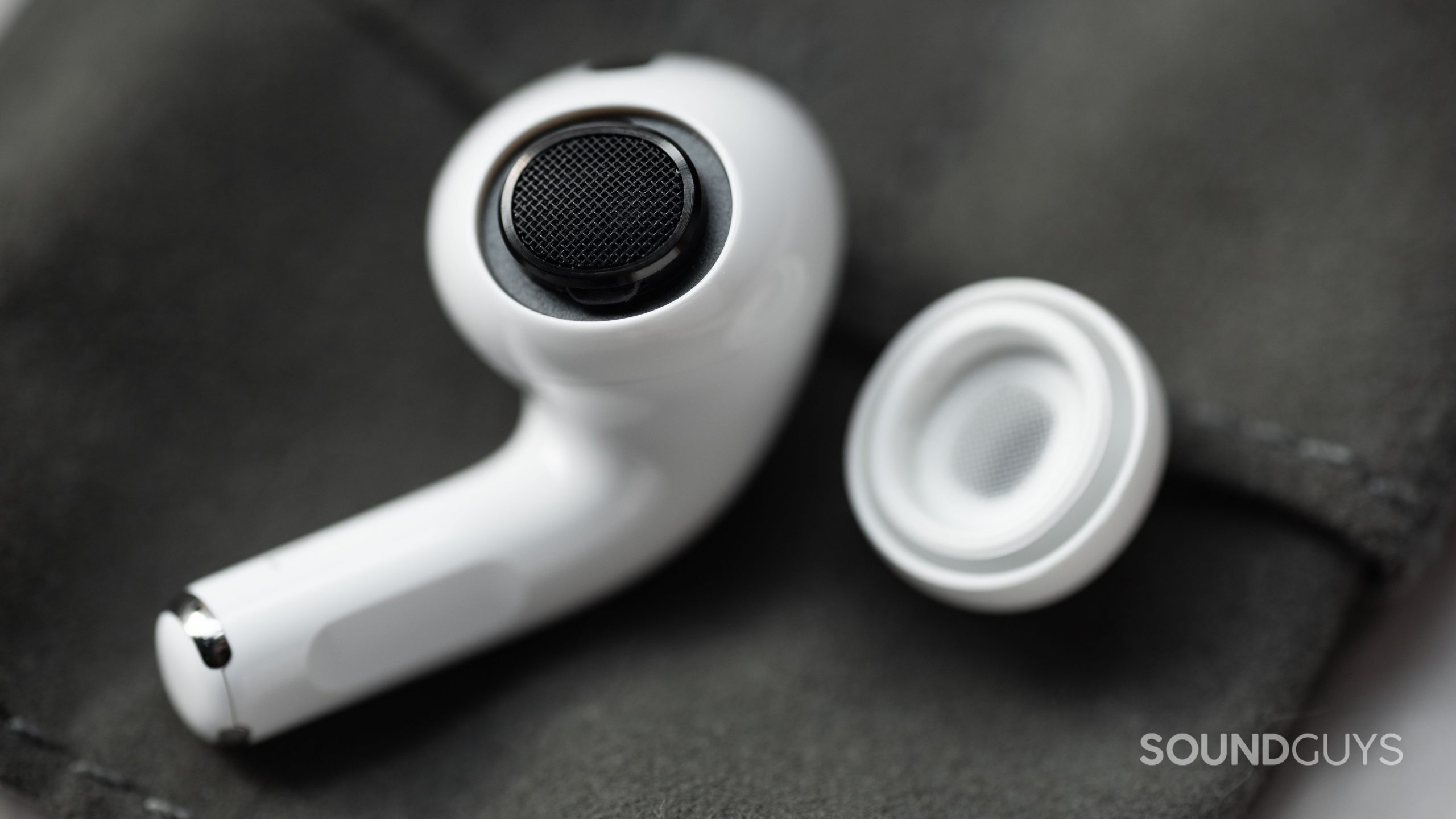
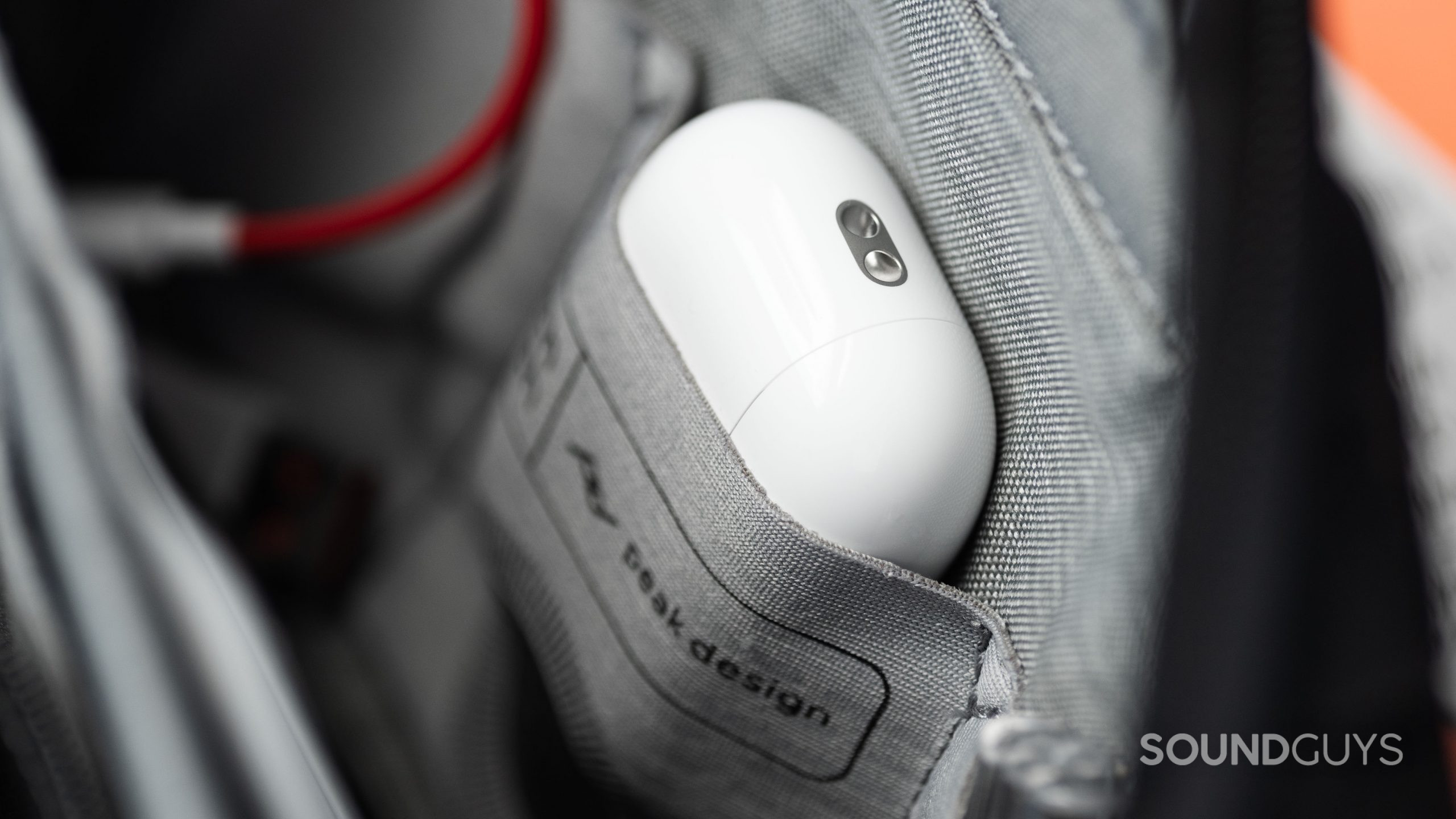
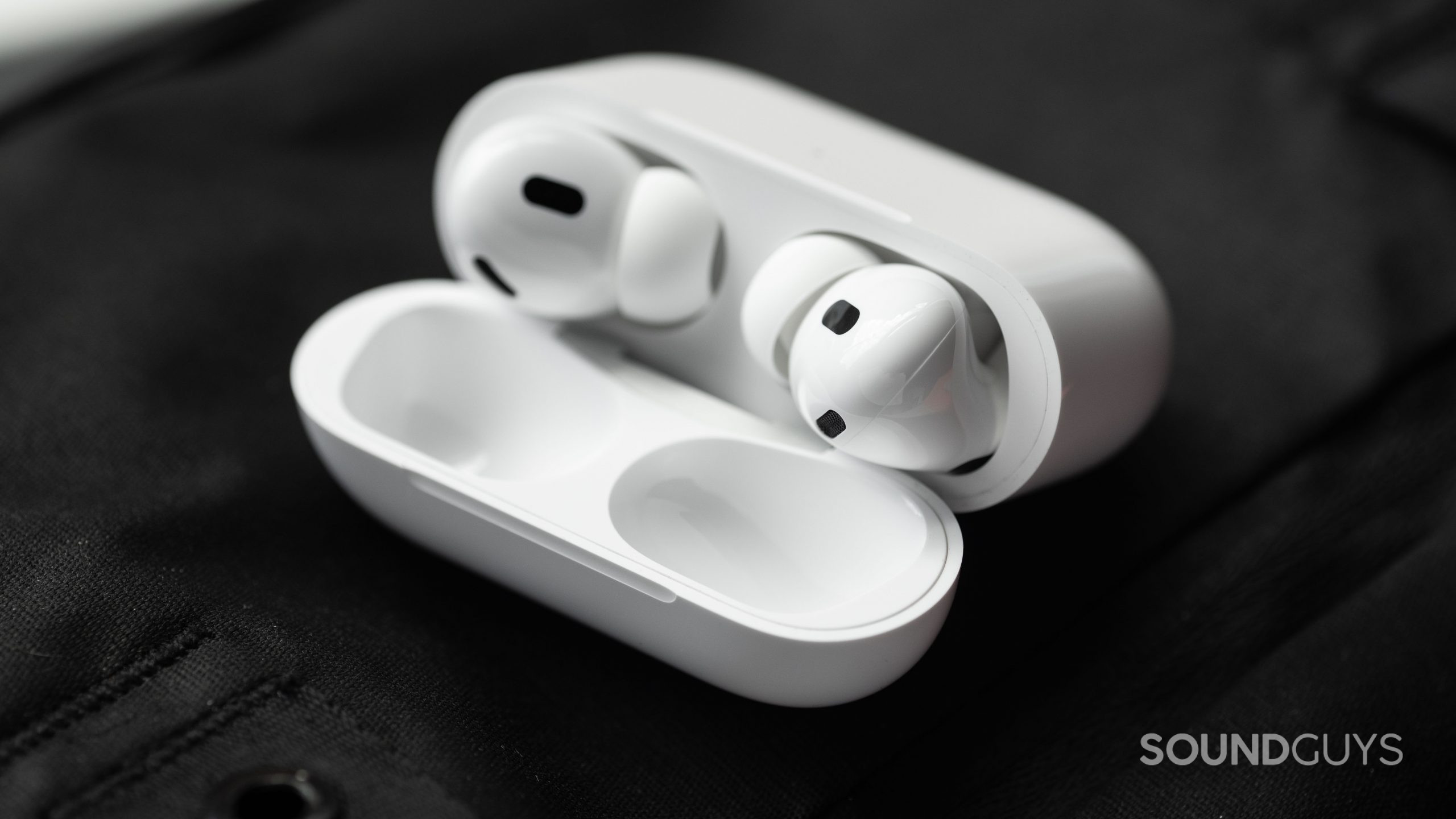
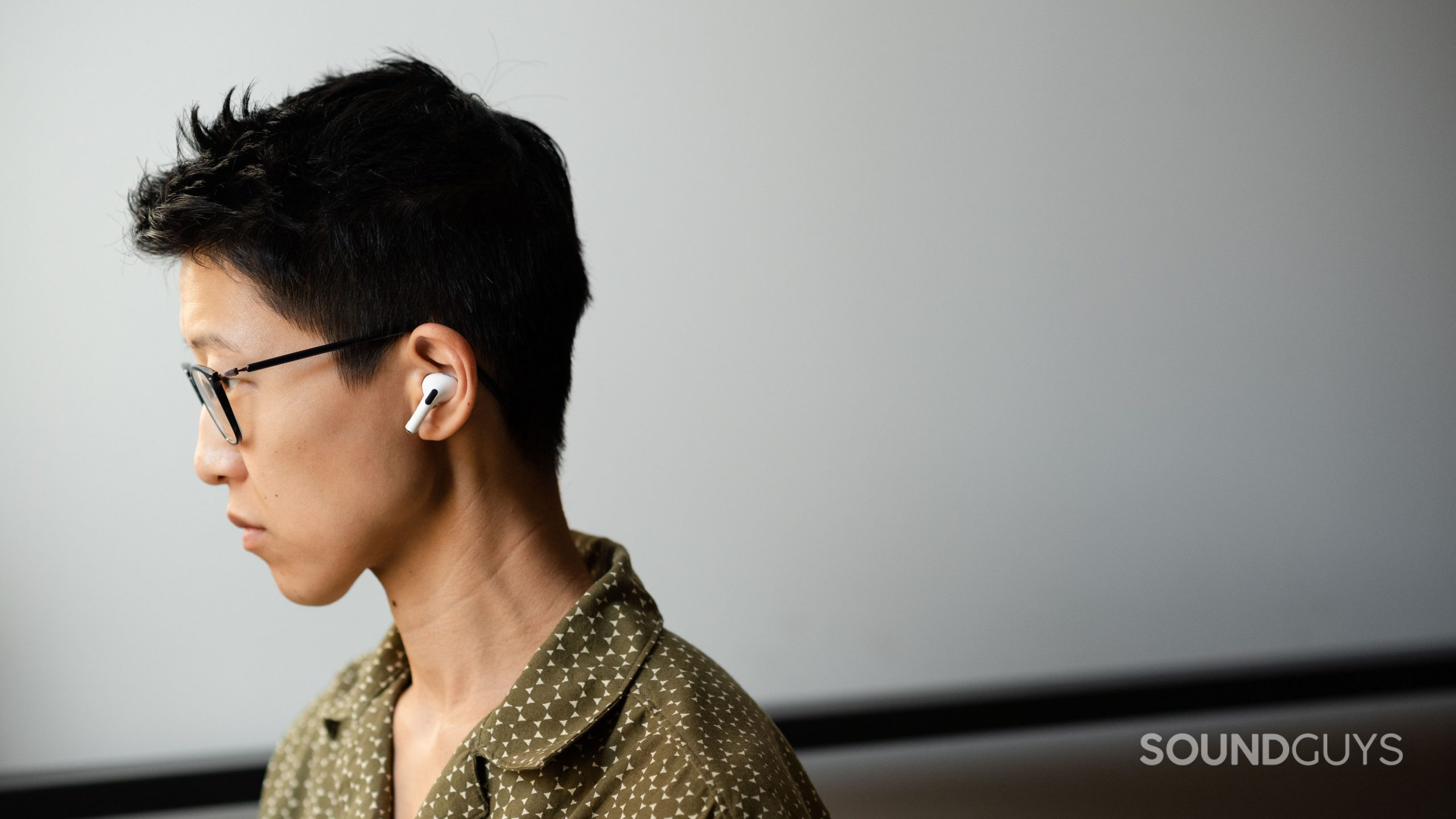
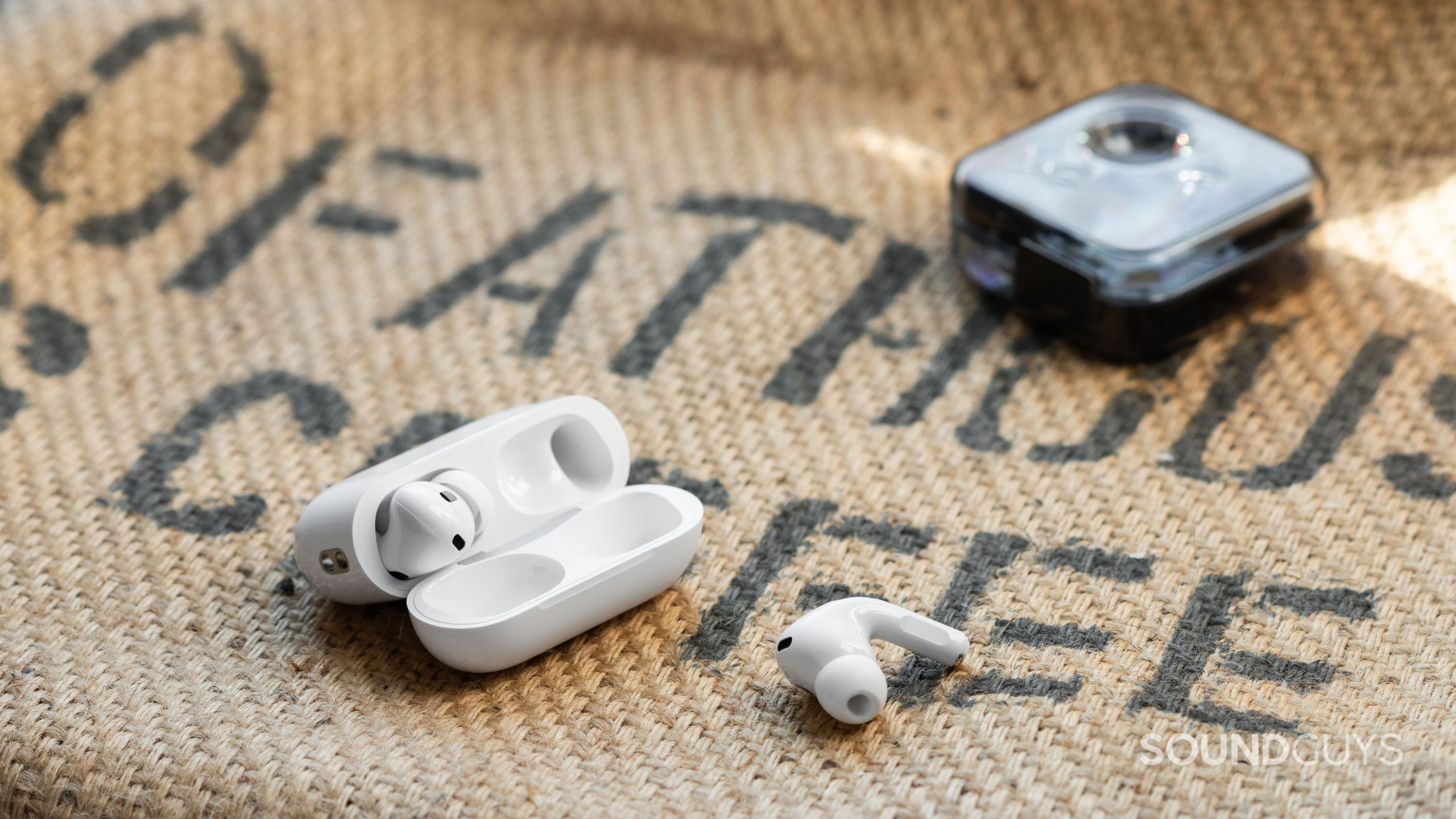
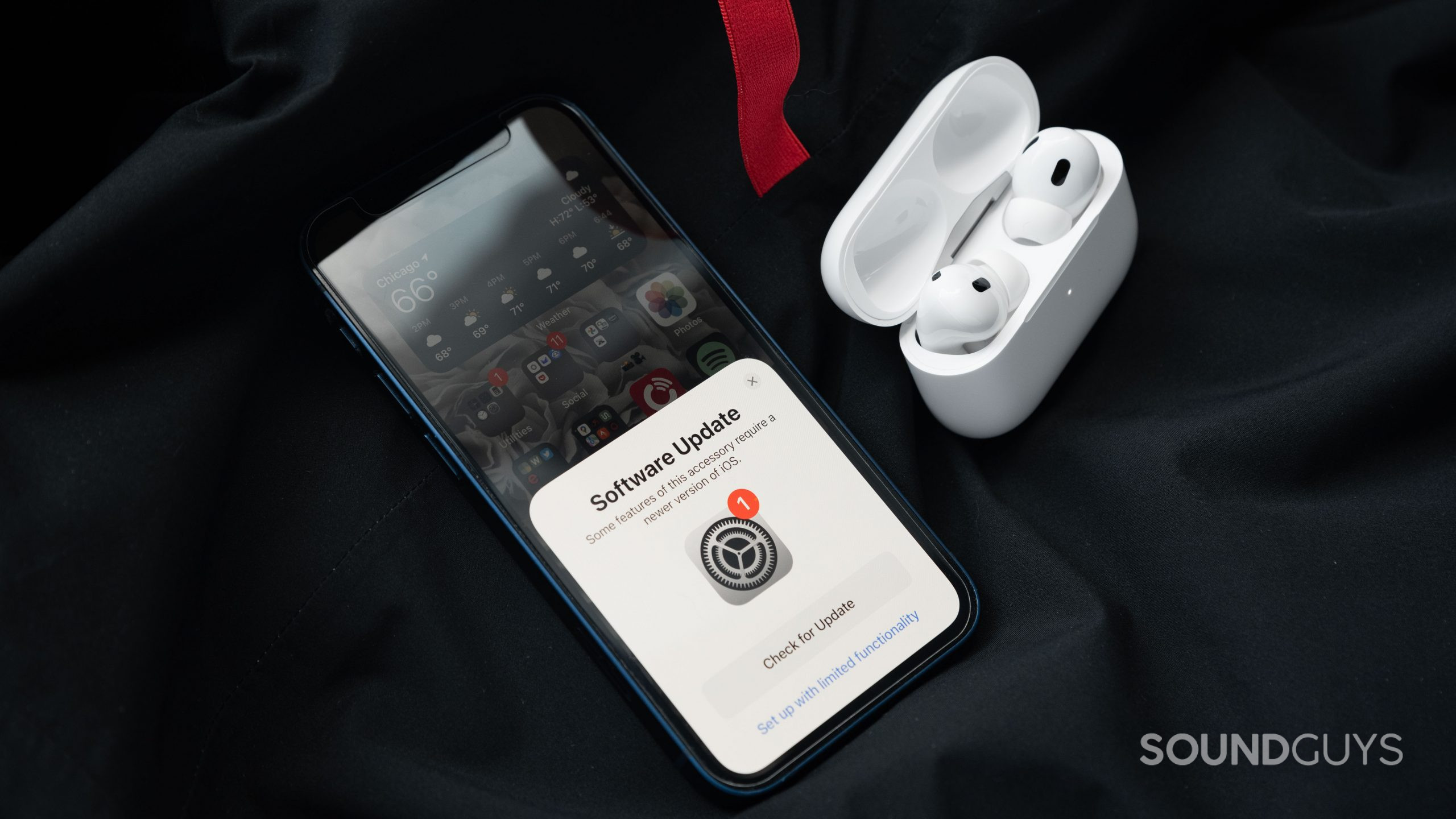
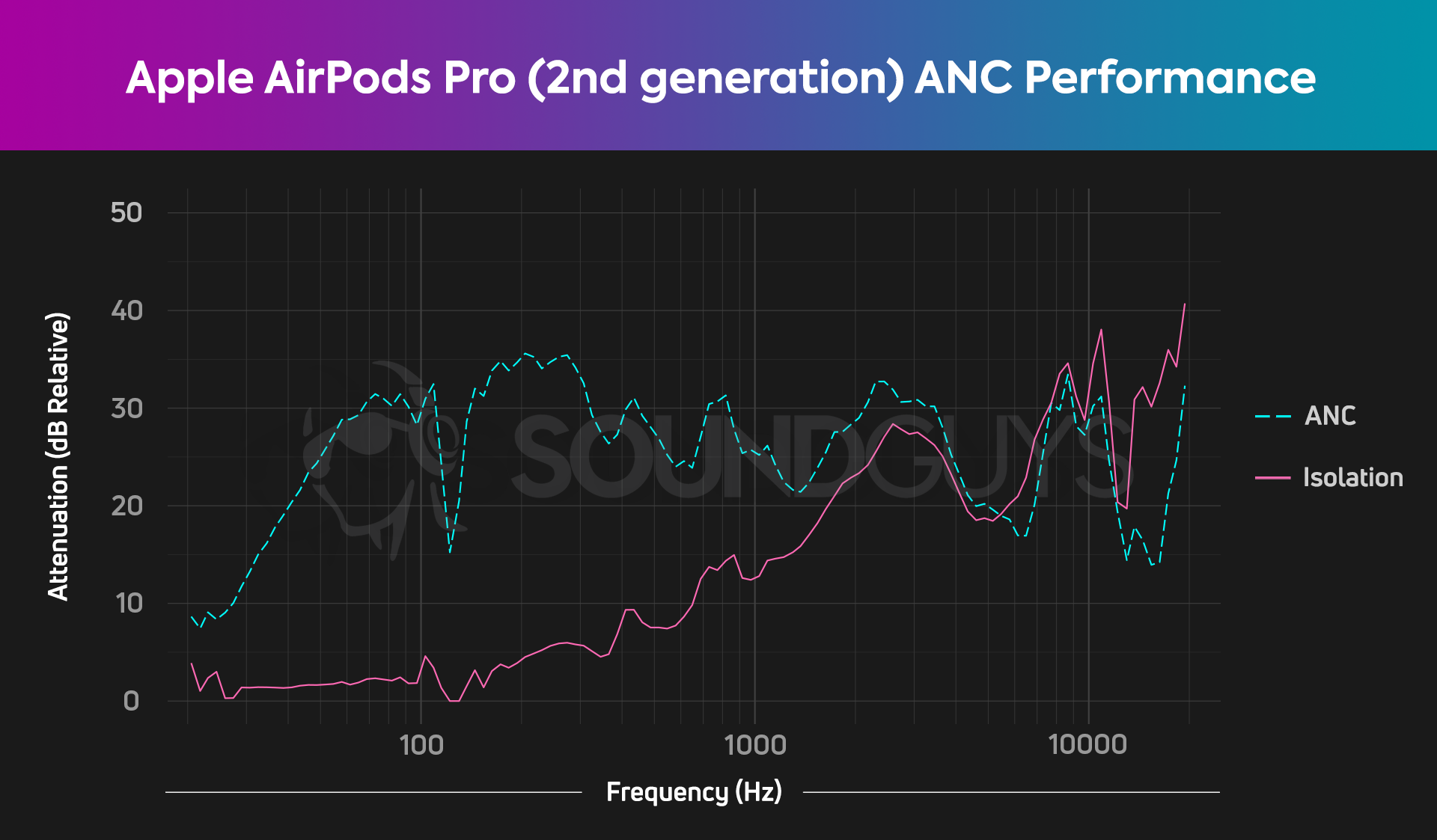
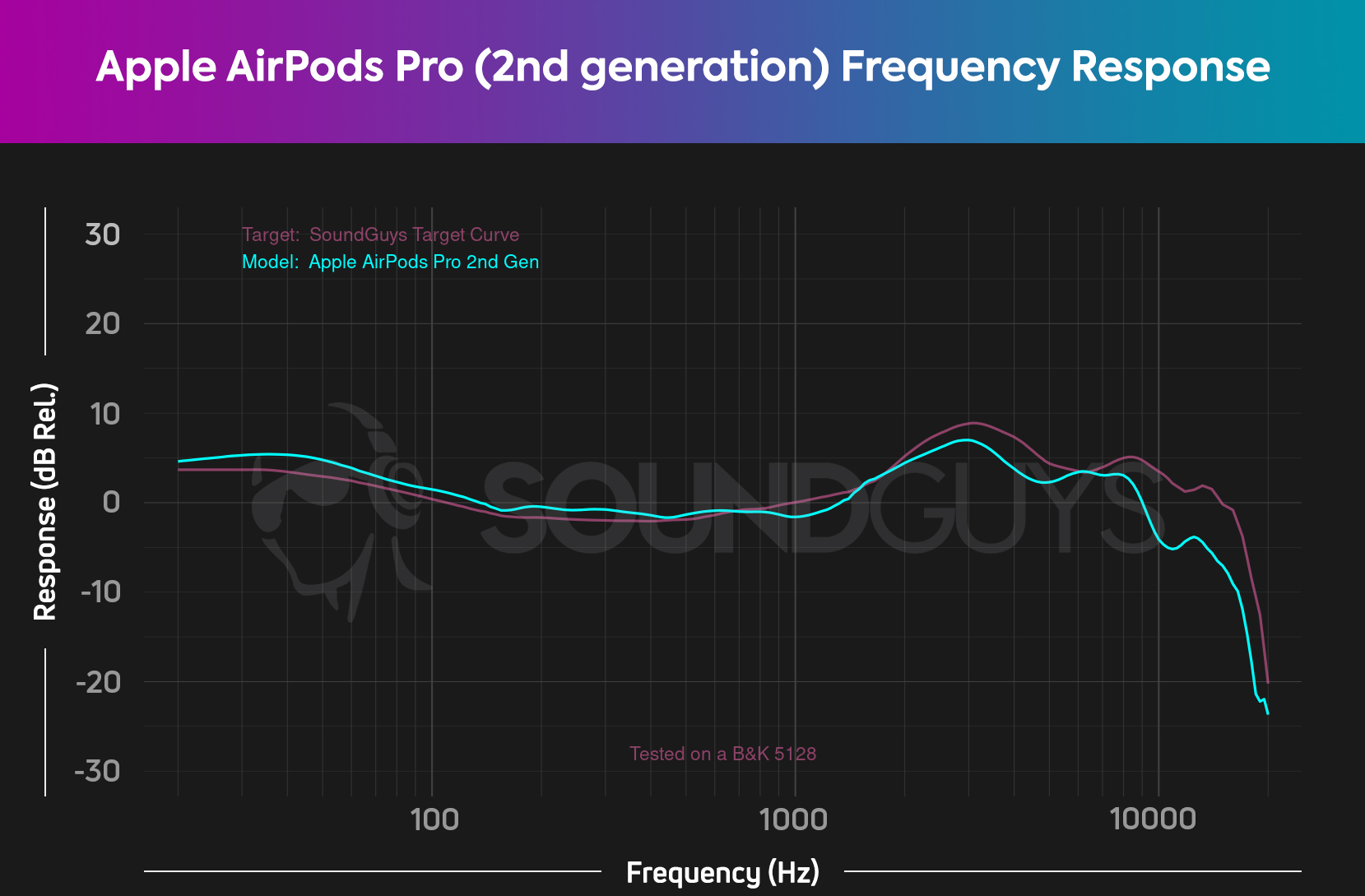
Adaptive Transparency mode uses microphones to amplify the sounds around you so you can hear your surroundings better. The “adaptive” part of this mode means the technology can quiet loud, sudden sounds like construction or a fumbled frying pan. This works surprisingly well and is a major upgrade to the standard transparency modes found on other earphones.
The other side of the same coin is noise canceling, and the AirPods Pro (2nd generation) ANC performance is even better than before. It will hush your surroundings significantly and render low-frequency rumbles anywhere from one-half to one-eighth their original perceived loudness. You can read all about how the ANC compares between the first and second-gen AirPods Pro models in our detailed versus article.
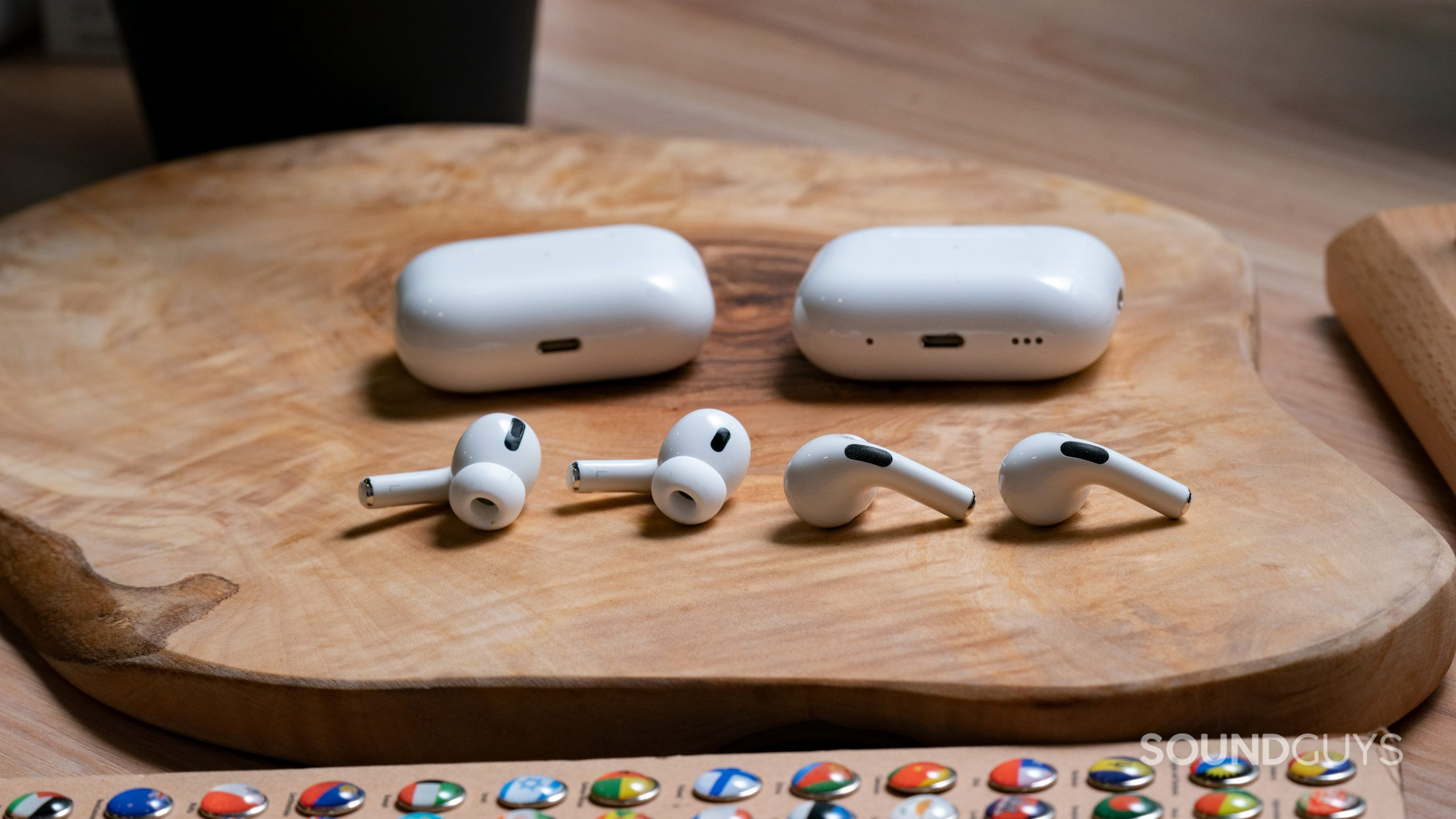
Sound quality is very good with the AirPods Pro (2nd gen), and while we wish there was an integrated custom EQ in the Apple Settings app, we don’t feel there’s much need for it. At least, most general listeners won’t feel compelled to change the sound because it really is that good by default. If you do want to customize the tuning, you’re left to your own devices by creating a custom EQ through your music streaming service app or downloading a dedicated EQ application. If you listen to Apple Music, you can choose from numerous EQ presets.
Unlike the old AirPods Pro, the second-gen model has sliding touch controls (along with taps). With a sliding gesture, you can increase or decrease the volume without saying, “Hey Siri,” or reaching for your phone. We also like that the Apple AirPods Pro (2nd gen) case has a speaker on the bottom that will emit a sound to help you locate it. If you know your AirPods Pro is not in your current room or home, but can’t remember where you placed it, open the Find My app to see a map with the case or buds’ last location.
If the AirPods Pro is a bit too rich for your blood, there are a handful of solid AirPods Pro alternatives out there for iPhone and Android users alike. You can even snag the first-gen AirPods Pro for $179.99 at Best Buy.
The AirPods Pro’s mic system is very good for wireless earbuds but its quality declines when there’s background noise.
Apple AirPods Pro (2nd generation) microphone demo (Ideal conditions):
Apple AirPods Pro (2nd generation) microphone demo (Office conditions):
Apple AirPods Pro (2nd generation) microphone demo (Street conditions):
Apple AirPods Pro (2nd generation) microphone demo (Windy conditions):
How does the microphone sound to you?
Editor’s note: Our standardized test setup plays back pre-recorded phrases from a calibrated artificial mouth in our test chamber, either with or without simulated background noises, simulated reverberant spaces, or artificial wind. This means that samples from every product can be directly compared, which makes it far easier to make meaningful comparisons between products in terms of the raw speech quality or the product’s ability to reject noise. While this setup is consistent, it’s unable to allow the earbuds to detect speech as they would in the real world (using vibrations), so you’re likely to experience something different than our demos above.
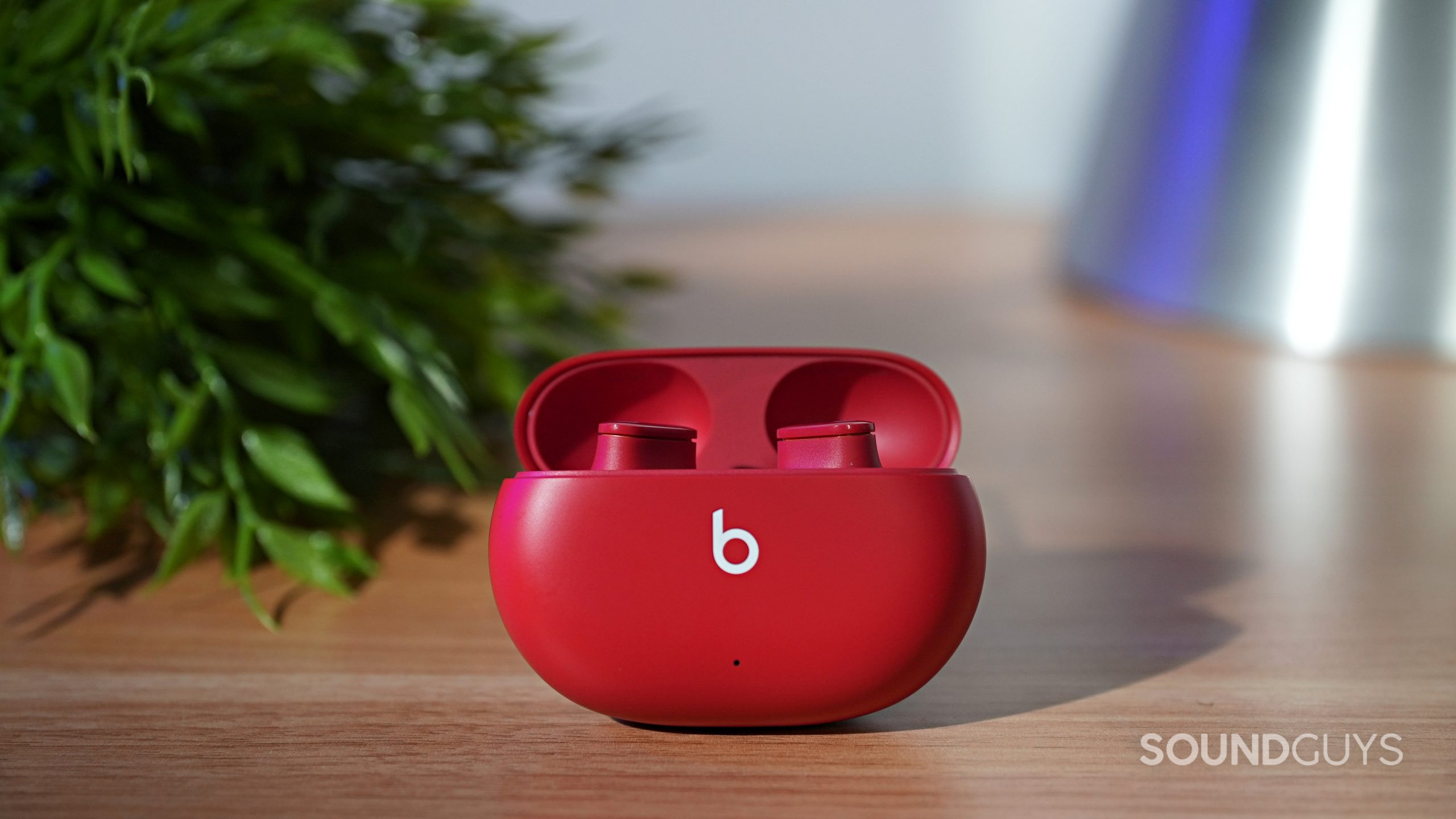
The Beats Studio Buds compares rather well against Apple’s old flagship AirPods Pro and works just as well on Android as it does on iOS. The microphone is quite good, and it has active noise canceling, though it’s only okay. Unlike other Beats products, the Studio Buds closely follows our consumer curve, meaning its default sound should please most listeners. It can be had for $99 at Amazon.
.jpg?X-Amz-Content-Sha256=UNSIGNED-PAYLOAD&X-Amz-Algorithm=AWS4-HMAC-SHA256&X-Amz-Credential=XSKNWXBO6X4FQX75L363%2F20230627%2Fnyc3%2Fs3%2Faws4_request&X-Amz-Date=20230627T112610Z&X-Amz-SignedHeaders=host&X-Amz-Expires=3600&X-Amz-Signature=c6d4aa693cfccde31ccab42f1d951a63098bc29bb2501616eb8a946eedb0d98d)

The best earbuds for working out: Beats Fit Pro
The Beats Fit Pro is one of the best workout earbuds you can find. The concha wing tips create a secure fit that’s nearly impossible to shake loose. While the case doesn’t have an IP rating like some of the other company flagships, you do get a nice IPX4 rating for the earphones, protecting them from splashes and sweat. We also like that the Beats Fit Pro works nearly as well on Android devices as it does on Apple devices, and all for less than $200 USD.
Unlike many earbuds, the Fit Pro features button controls that require you to press the “b” logo on either bud to perform certain controls. For many athletes, buttons are easier to operate when exercising than touch controls, so it’s a smart move by the designers.
Noise canceling is very good and actually outperforms the AirPods Pro (2nd generation) when it comes to quieting certain sub-bass frequencies. This is great for muting your commute to the gym and somewhat reducing the clang of weights on the gym floor. When it comes to sound quality, Beats remains Beats and boosts the bass on the Fit Pro. While the bass boost is audible, it’s tasteful and doesn’t render detail imperceptible during pop and hip-hop tracks. Apple’s Adaptive EQ technology is baked into the headset, and this automatically adjusts the bass and midrange response based on your surroundings.
Using the Beats Fit Pro to take calls from a quiet environment yields good, accurate vocal reproduction. Like the AirPods Pro series, the microphones don’t do very well in windy conditions.
Beats Fit Pro microphone demo (Ideal conditions):
Beats Fit Pro microphone demo (Office conditions):
Beats Fit Pro microphone demo (Windy conditions):
How does the microphone sound to you?

The best noise canceling earbuds: Sony WF-1000XM4
The Sony WF-1000XM4 is an expensive set of earbuds that works equally well on Android phones and iPhones. Don’t let that scare you away: this is well worth it for the right buyer. Sony vastly improved its active noise canceling, thanks in part to Bluetooth 5.2 and a new V1 processor. While the ANC can’t compare to its big brothers, the Sony WH-1000XM5 and WH-1000XM4, it handily outperforms most other noise canceling wireless earphones.
Sony provides a trio of memory foam ear tips, which effectively mold to your ear canal and block out background noise. You can even use the Headphones Connect app to check that you selected the properly fitting ear tips. This is absolutely necessary for a pair of ANC earbuds, as good isolation begets optimal noise cancellation.
Sound quality is quite good too, though you’ll notice some treble frequencies sound odd since the drivers under-emphasize them. Again, you can quickly fix this within the mobile app by lowering the bass and midrange response. The earbuds support the SBC, AAC, and LDAC Bluetooth codecs, meaning anyone can enjoy high-quality audio. Because the foam tips guarantee a good seal, isolation and ANC are incredibly effective on the Sony WF-1000XM4. Anyone who wants a handsome pair of wireless earbuds with stellar active noise canceling, battery life, and a reliable IPX4 rating should save up and shell out for these earbuds.
Sony’s microphone quality is pretty good, even in sub-optimal conditions like office or wind. It won’t render environmental noise absolutely quiet, but it will relay your voice clearly.
Sony WF-1000XM4 microphone demo (Ideal conditions):
Sony WF-1000XM4 microphone demo (Office conditions):
Sony WF-1000XM4 microphone demo (Windy conditions):
How does the microphone sound to you?


Most versatile earbuds: Jabra Elite 7 Active
If you’re looking for a truly great pair of wireless earbuds, your search is over with the Jabra Elite 7 Active. While this set of earphones only supports SBC and AAC, you can change the sound profile within the companion app’s EQ module. Jabra’s earphones have an IP57 rating, making them unusually durable relative to most other earbuds.
The Jabra Elite 7 Active has active noise canceling but it isn’t the best around. That said, if you can get a good fit with the earbuds, you’ll benefit greatly from the solid passive isolation. The earbuds do a fine job of passively blocking out frequencies above 1kHz. It’s not as if the ANC is bad here, it’s just not the best. The Elite 7 Active’s ANC can quiet frequencies lower than 1kHz to half their original loudness.
Jabra’s default frequency response for the Elite 7 Active boosts bass a bit more than our target curve suggests, but it should still sound good to most people. Plus, you can always adjust the sound from the mobile app (iOS/Android). The microphone system does a fine job of quieting background noise, but the click and clack of your keystrokes will still come through to the person on the other end of the call.
For the price, it’s like you’re getting multiple headsets in one with the Elite 7 Active.
The Elite 7 Active does a pretty good job of relaying voices amid incidental noise like ringing phones and clacking keyboards.
Jabra Elite 7 Active microphone demo (Ideal conditions):
Jabra Elite 7 Active microphone demo (Office conditions):
How does the microphone sound to you?


The Bose QuietComfort Earbuds II is very comfortable
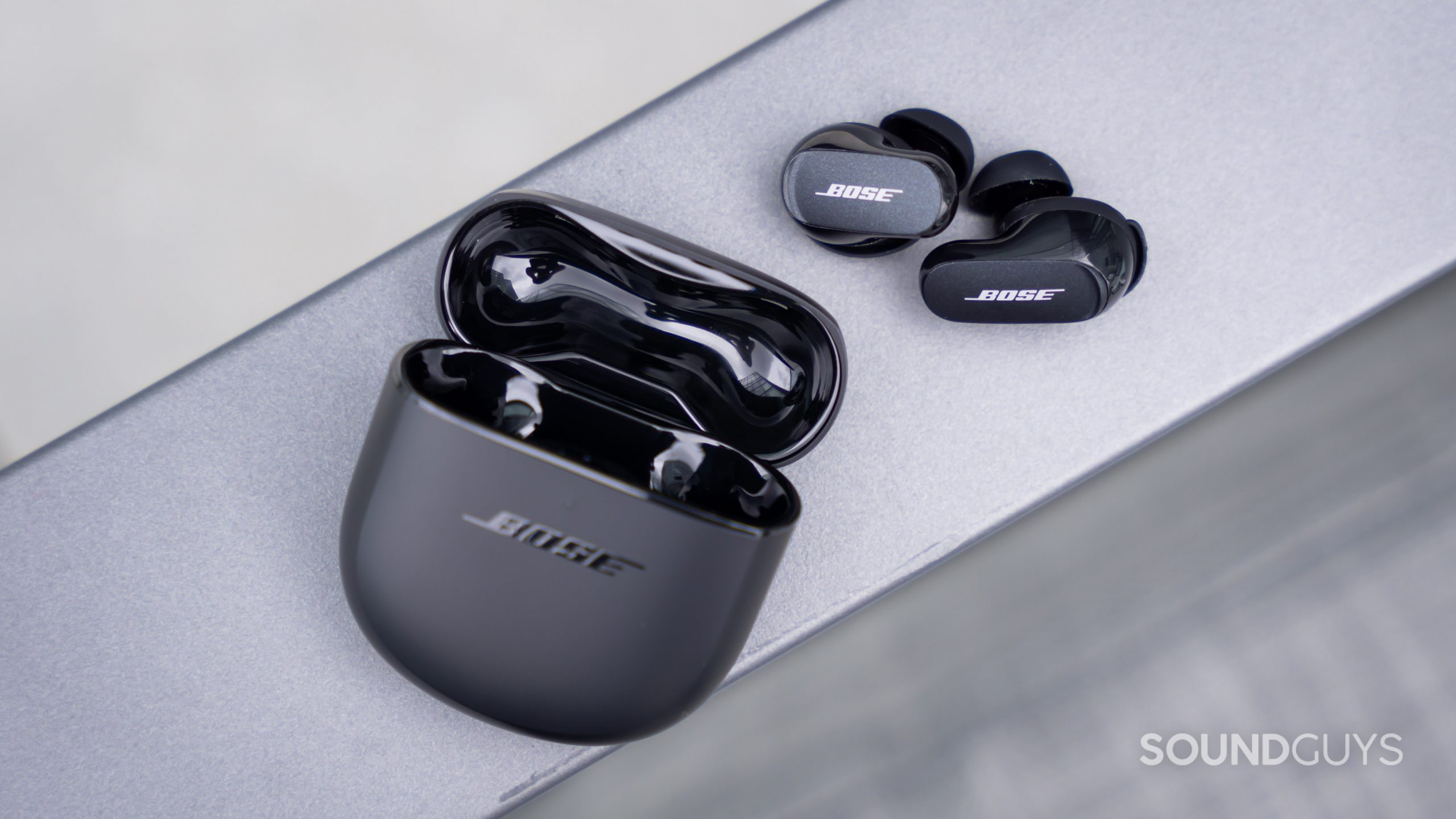
Listeners who want ANC that rivals the Sony WF-1000XM4 but with an arguably more comfortable, stable fit should get the Bose QuietComfort Earbuds. These earbuds feature an IPX4 rating and nearly perfect touch controls that precisely register when you make a command. We find the QC Earbuds to be about as comfortable as wireless earbuds get, and the USB-C case supports wireless charging which is a nice plus.
While the original $299 USD price tag will scare many listeners away, patient buyers can find Bose products like these earphones on sale near holidays, typically. With even a modest discount, these earphones are worth it. Just be sure to update to the latest firmware upon

The Bose QuietComfort Earbuds II has an okay microphone. We’ve certainly tested better microphones in true wireless earbuds, but it isn’t so bad that it should necessarily deter you from buying the headset.
Bose QuietComfort Earbuds II microphone demo (Ideal conditions):
Bose QuietComfort Earbuds II microphone demo (Office conditions):
Bose QuietComfort Earbuds II microphone demo (Street conditions):
Bose QuietComfort Earbuds II microphone demo (Windy conditions):
How does the microphone sound to you?
Should you get the Google Pixel Buds Pro?
Google debuts its take on noise canceling wireless earbuds with the Pixel Buds Pro. Many of the features remain the same between the Pixel Buds Pro and the more economical A-Series earbuds, which you can read all about in our Google Pixel Buds Pro review. Wireless charging fanatics will prefer the Pro version since the A-Series lacks this feature. The Pixel Buds Pro case is also more durable than most earbuds’ cases and merits an IPX2 rating. Both sets of Google earbuds share the same IPX4 rating, but most athletes will prefer the stabilizing ear wings on the A-Series. Google ditches the wing tips on the Pro model. So, if you need wings the A-Series can be found for $93.02 at Amazon.
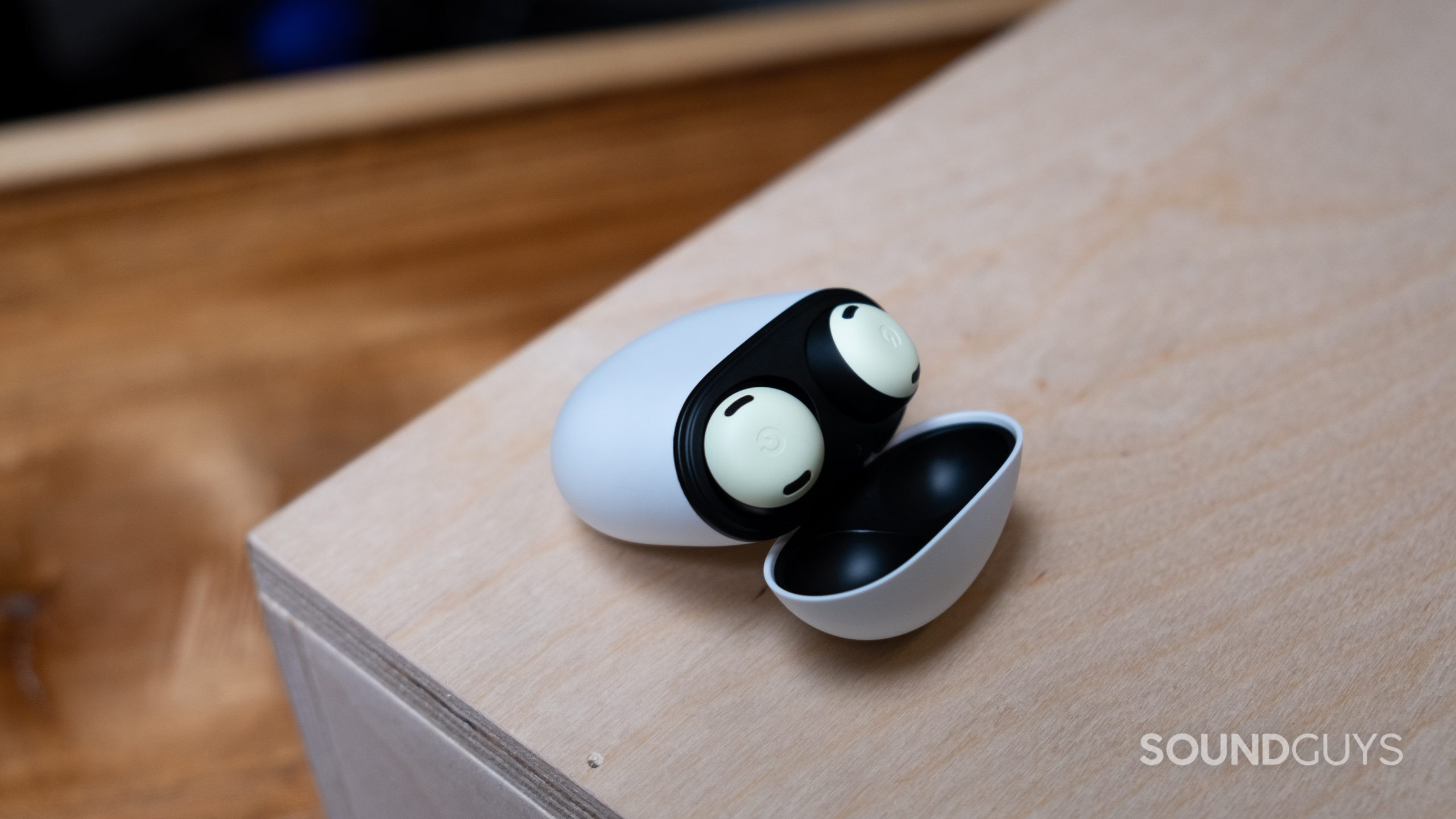
If you’re looking at raw noise canceling performance the Pixel Buds Pro outdoes the AirPods Pro (1st generation) and Samsung Galaxy Buds Pro. Passive isolation is a bit inconsistent when it comes to sounds above 1kHz, which is likely a consequence of the pressure-relieving vents that reduce the “plugged ear” feeling.
The Pixel Buds Pro is a powerful headset that taps into the Google ecosystem. You can integrate the buds with the Google Translate app for live translation and use “Hey Google” to access the Google Assistant. For $200 USD, though, people may want more like an in-app EQ and more customization options.
The Google Pixel Buds Pro microphone is alright, but it emphasizes sibilant sounds (s-, sh-, z-) too much, making the audio somewhat unpleasant to listen to.
Google Pixel Buds Pro microphone demo (Ideal conditions):
Google Pixel Buds Pro microphone demo (Office conditions):
Google Pixel Buds Pro microphone demo (Windy conditions):
How does the microphone sound to you?


Is the Samsung Galaxy Buds 2 Pro any good?
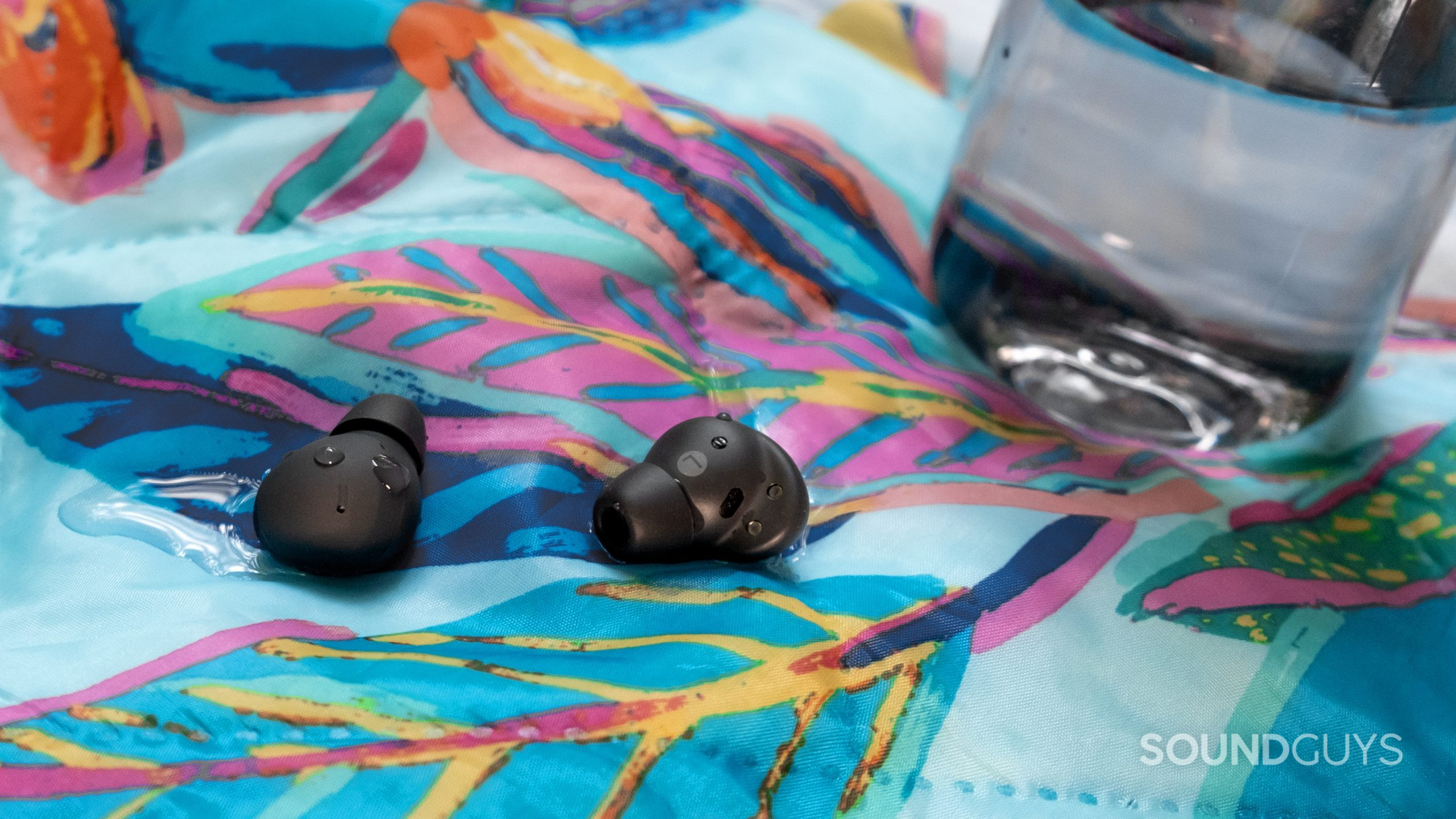
Where the Samsung Galaxy Buds 2 has an IPX2 rating, the Samsung Galaxy Buds 2 Pro has a more durable IPX7 rating. This makes it much more reliable to use during workouts and on rainy days, as the buds can withstand one meter of water for up to 30 minutes. Another reason one might opt for the Buds Pro is that it features some of the best ANC we’ve tested, handily outperforming the AirPods Pro (1st generation).
The Samsung Galaxy Buds 2 Pro buds fit most ear sizes well and you get to choose from three sizes of silicone ear tips. Samsung also features an ear tip fit test in its Galaxy Wearable app (Android only). The Galaxy Buds 2 Pro comes at a hefty cost, but Samsung’s earphones tend to go on sale fairly regularly.
The Samsung Galaxy Buds Pro microphone is pretty good at relaying your speaking voice mostly accurately.
Samsung Galaxy Buds 2 Pro microphone demo (Ideal conditions):
Samsung Galaxy Buds 2 Pro microphone demo (Street conditions):
Samsung Galaxy Buds 2 Pro microphone demo (Windy conditions):
How does the microphone sound to you?

Is the Sennheiser MOMENTUM True Wireless 3 worth it?
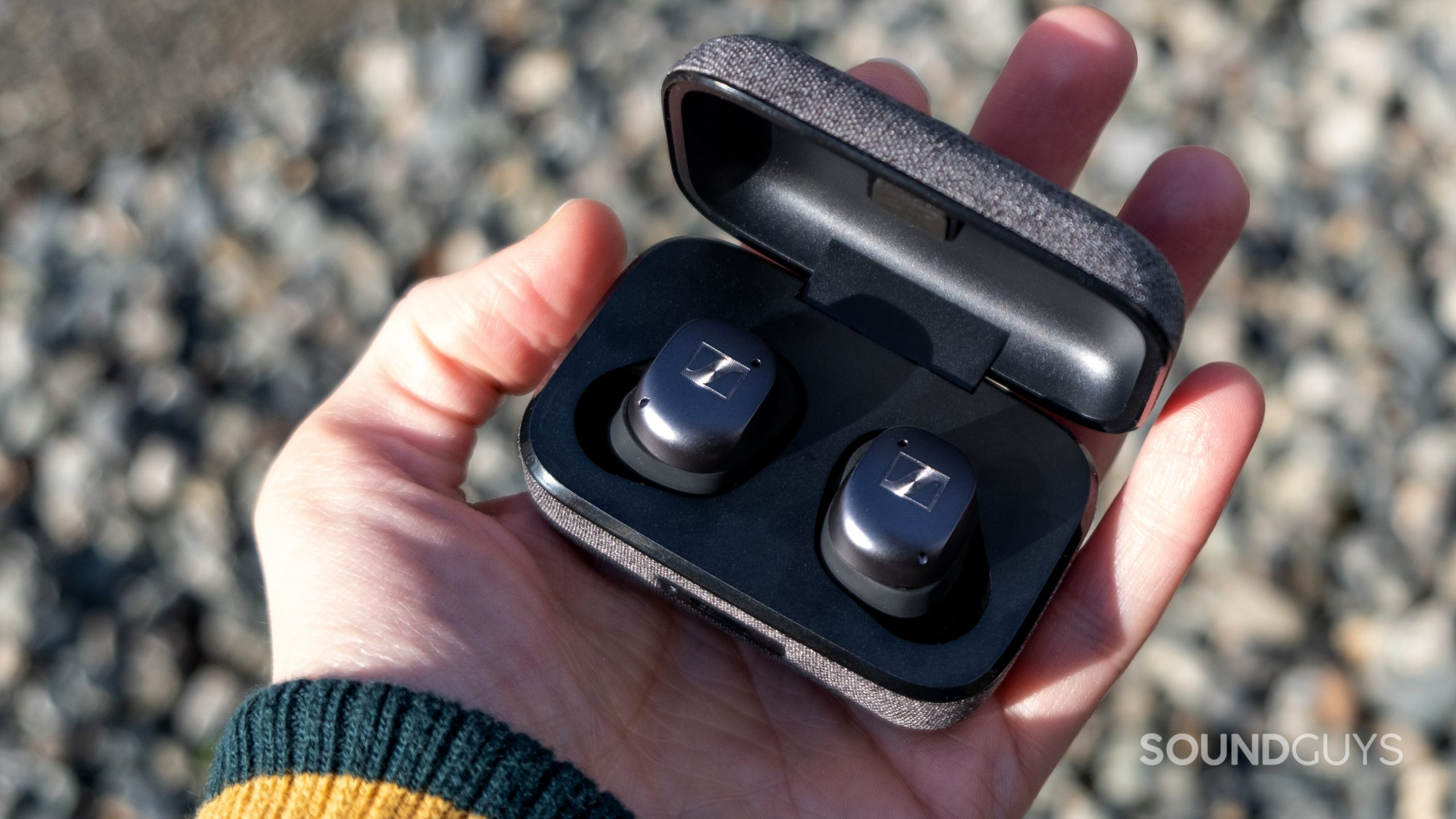
The MOMENTUM True Wireless 3 is a pair of noise canceling earbuds that improves upon the previous generation with some of the best ANC we’ve tested. The second generation MOMENTUM True Wireless earbuds looked nice but left a lot to be desired, now Sennheiser’s ANC competes with Sony and Bose. You get the same IPX4 rating as before and Sennheiser throws in stabilizing ear fins to better keep the buds in place while you work out.
Sound quality is very good and the bass and midrange response closely follows our consumer curve. You can create a custom EQ with the Smart Control app (iOS/Android) and disable the touch controls from there too. While this headset exceeds most listeners’ $200 USD budget, those who want something stylish with plenty of functionality will like the Sennheiser MOMENTUM True Wireless 3.
The mic on the Sennheiser MOMENTUM True Wireless 3 is not great, and you probably won’t want to use it in any less than ideal conditions.
Sennheiser MOMENTUM True Wireless 3 microphone demo (Ideal conditions):
Sennheiser MOMENTUM True Wireless 3 microphone demo (Office conditions):
Sennheiser MOMENTUM True Wireless 3 microphone demo (Street conditions):
How does the microphone sound to you?


The best wireless earbuds: Notable mentions
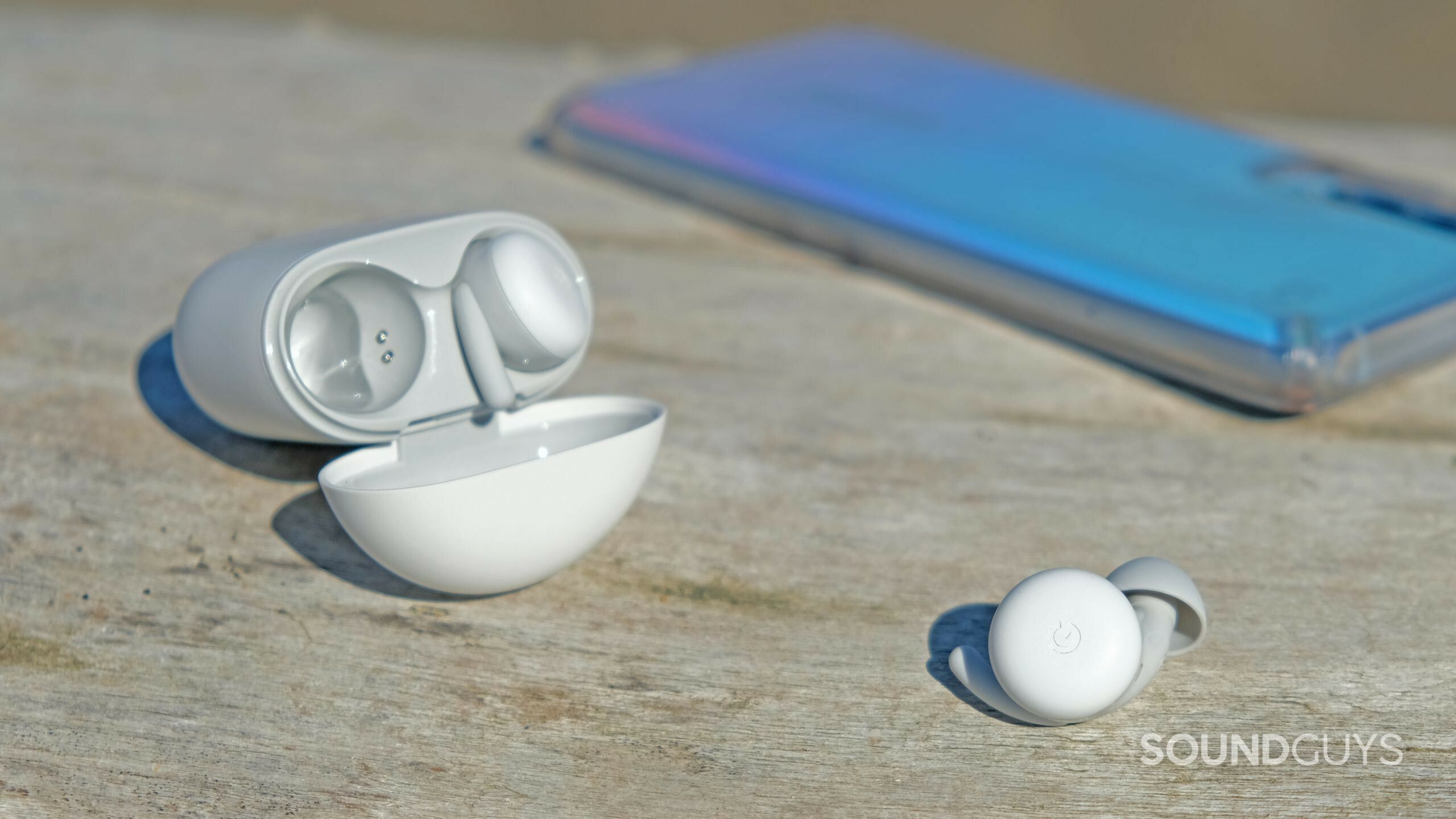
- Anker Soundcore Liberty Air 2: These earbuds with angled nozzles may just be your best bet for a budget pair of wireless earbuds. It runs for $19.99 at Amazon and features great isolation and pretty good mic quality. You can EQ the bassy default sound from the Soundcore app.
- Bose Sport Earbuds: These workout earbuds have a comfortable and stable fit, an IPX4 rating, and a few creature comforts like automatic ear detection. It doesn’t isolate very well, but this shouldn’t be an issue when working out because you want to be aware of your surroundings. Find it for $129 at Amazon.
- Jabra Elite 7 Pro: This set of durable earbuds has great battery life will survive nearly any adventure (available at $99.99 at Amazon). The Jabra Elite 7 Pro also sounds great, has a high-quality microphone, and has tons of features from the Jabra Sound+ app.
- Jaybird Vista 2: This is a durable set of workout earbuds with an IP68 rating for the buds and IP54 rating for the USB-C case that also supports wireless charging. You get a comprehensive app experience on iOS and Android, and accessible features like mono listening. Jaybird adds active noise canceling to these earbuds, which isn’t the best, but the passive isolation makes up for it. Find it for $144.99 at Amazon.
- JLab Epic Air Sport ANC: This set of buds directly competes against the Beats Powerbeats Pro and costs a heck of a lot less at $89.98 at Amazon. You get pretty good ANC for the price and a consumer-friendly sound profile that you can change with the earbuds’ built-in EQ presets.
- Sennheiser CX Plus True Wireless: Sennheiser’s earbuds sound and look great, and the ANC performance is better here than most other ANC earbuds. You get an IPX4 rating for the buds along with touch controls. It’s worth checking out at a reasonable price of $69.95 at Amazon.
- Sony LinkBuds: Listeners who want to hear their surroundings and their music all at once will like these donut-shaped earbuds. With Sony’s design, the buds don’t block your ear canals but also remain in place (unlike the AirPods). These buds are more covert than bone conduction headphones which is a big plus, and can be had for $148 at Amazon.
- Sony LinkBuds S: Unlike the standard LinkBuds, the LinkBuds S features a traditional earbud design without donut holes. Noise canceling performance is close to the WF-1000XM4 and outperforms the previous Sony WF-1000XM3 flagship earbuds. The tradeoff: a boring design, but the price is nice at $148 at Amazon.
What you should know before you buy wireless earbuds
Users commonly cite connection issues with their true wireless earbuds, and companies have handled this in several different ways. Solutions range from tweaking Bluetooth to implementing completely new hardware.
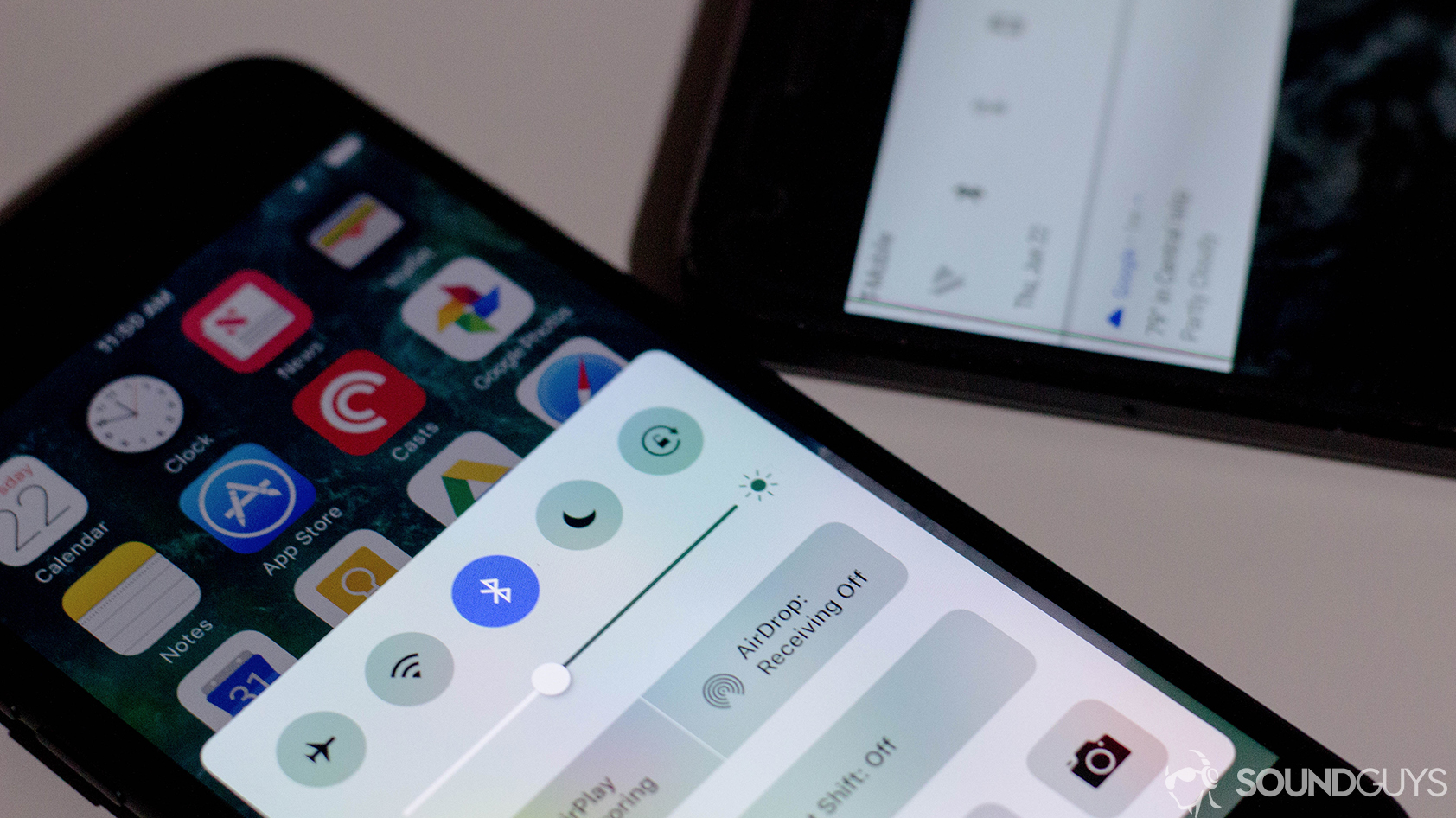
All wireless headphones connect to your source device via Bluetooth. Typically, one earbud is the primary receiver, and the other is the secondary receiver. Rather than simultaneously send a signal to both earbuds, many smartphones send the signal to the primary, passing data along to the secondary one. This results in a split-second delay between the audio. Manufacturers account for this delay and calculate it into the playback. This way, the earbuds are synced up for playback, and you don’t notice a lag. Most likely, you’ll notice a delay when watching videos; the sound won’t match the person’s words. But you won’t be able to tell if you’re listening to podcasts or music.
Then you have something like the Apple AirPods, which handles the wireless issue a little differently. Apple’s H1 works alongside the regular Bluetooth chip. This dedicated chip helps make the pairing process smoother (if you’re on iOS). It establishes a stronger connection between the earbuds and source device, resulting in significantly fewer skips. This is limited to Apple-owned hardware, like Beats products and the AirPods.
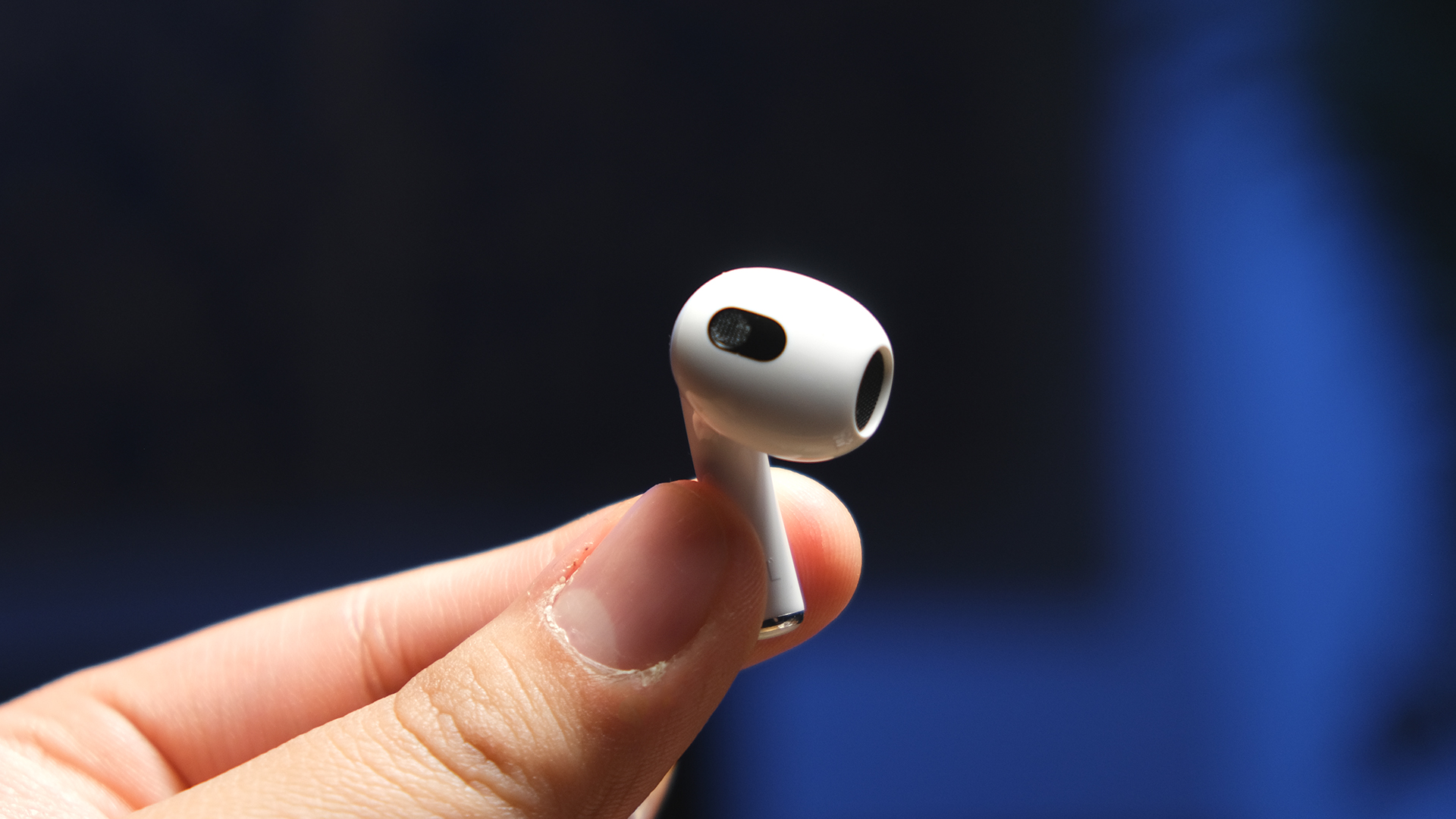
We’re witnessing a wireless epoch. It’s no longer niche or novel to listen completely untethered on your way to work. Technological advancements have lowered the financial barrier to entry, and cheap wireless options are readily available to budget listeners.
Wireless earbuds can still be for you if you don’t commute, especially if you like to exercise. Nothing’s more convenient than listening completely wire-free. There are many great wireless workout earbuds for runners and gym rats alike. Numerous companies have gone the extra mile by getting products officially IP certified, but they also integrate useful athletic features (e.g., ear hook design, silicone wing tips, Ambient Aware mode).
While it’s true that battery depletion is a problem, resulting in a shortened lifetime of wireless earbuds compared to their on-ear or over-ear headphone alternatives, you’re paying a premium for convenience. For some of us, it’s easy to justify the cost. Others, though, may be better off with wired earbuds or dealing with bulkier wireless headphones.
What is isolation, and what is frequency response?
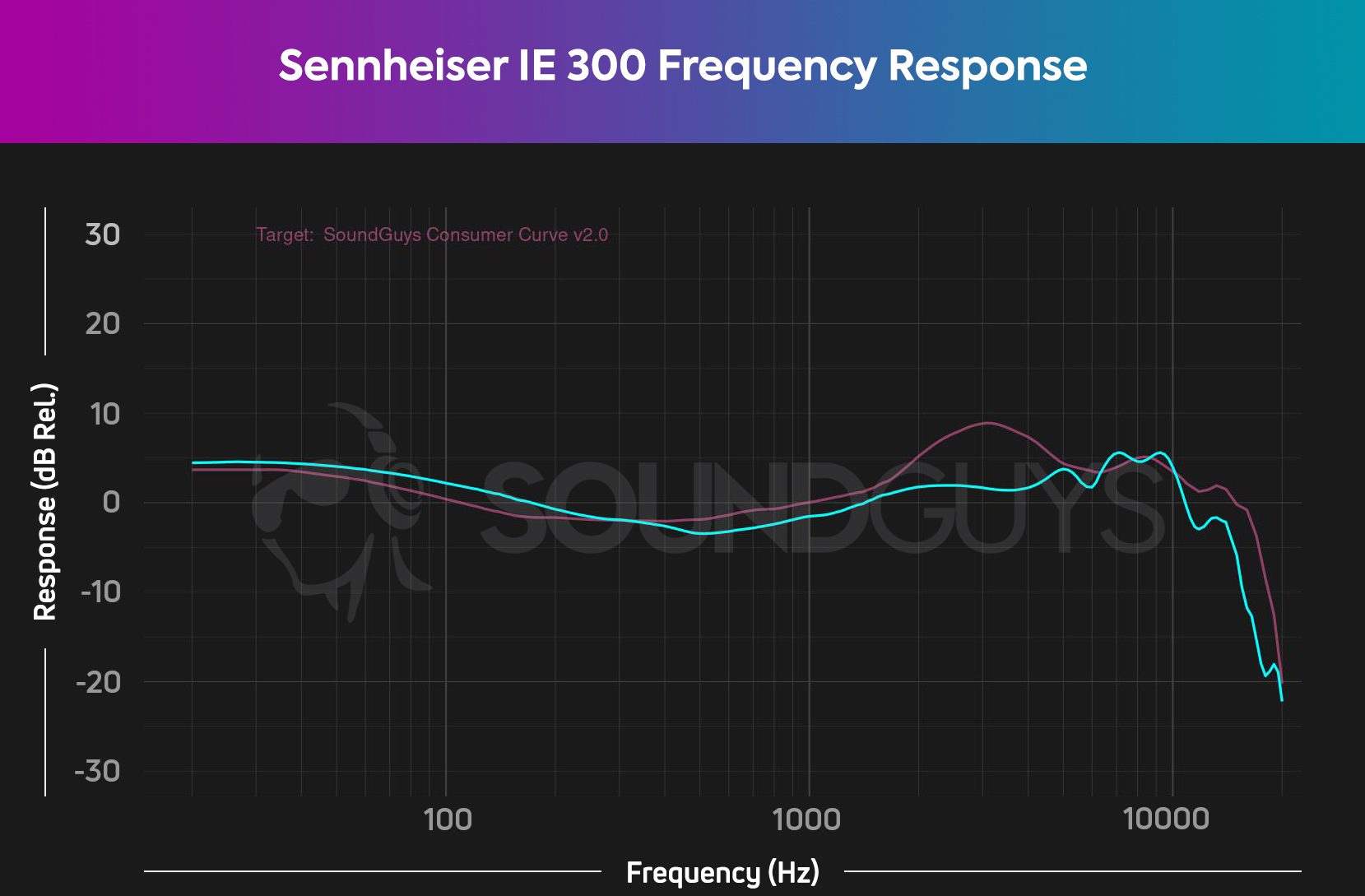
When it comes to headphones getting a proper seal is one of the best ways to make your music sound better. Some earbuds have active noise canceling, which uses tiny microphones to help cancel outside noise, but most options don’t have this nifty feature. Instead, they rely purely on passive isolation or blocking sound just by physically being in your ear.
Then there’s frequency response. You can learn more about frequency response and how it affects how you hear your music by clicking here. We at SoundGuys have an in-house studio curve and consumer curve that we posit as the ideal for each instance. In our charts, the pink line represents our house curve and the cyan line represents the headset in question. Many people like a bit of a bass frequency boost, but remember that too much of a bass boost can degrade sound quality.
How long do wireless earbuds last?
Generally speaking, the standalone battery life of wireless earbuds averages anywhere from four to six hours of battery life. Anything that falls above or below that is unusual. The cases typically provide an extra two to three charge cycles, giving you at least 12 hours of total playtime.
As far as why battery life is so short on all wireless earbuds, you don’t have to dig too deep into it to get the reason why. Truly wireless earbuds are simply too small. Batteries still rely on physics, and it’s hard to stuff a battery into something so tiny, which is why they all come with cases that will charge up your headphones when they’re not in use. This is pretty bad for the environment, and there aren’t too many eco-friendly headsets to choose from.
What is a Bluetooth codec?
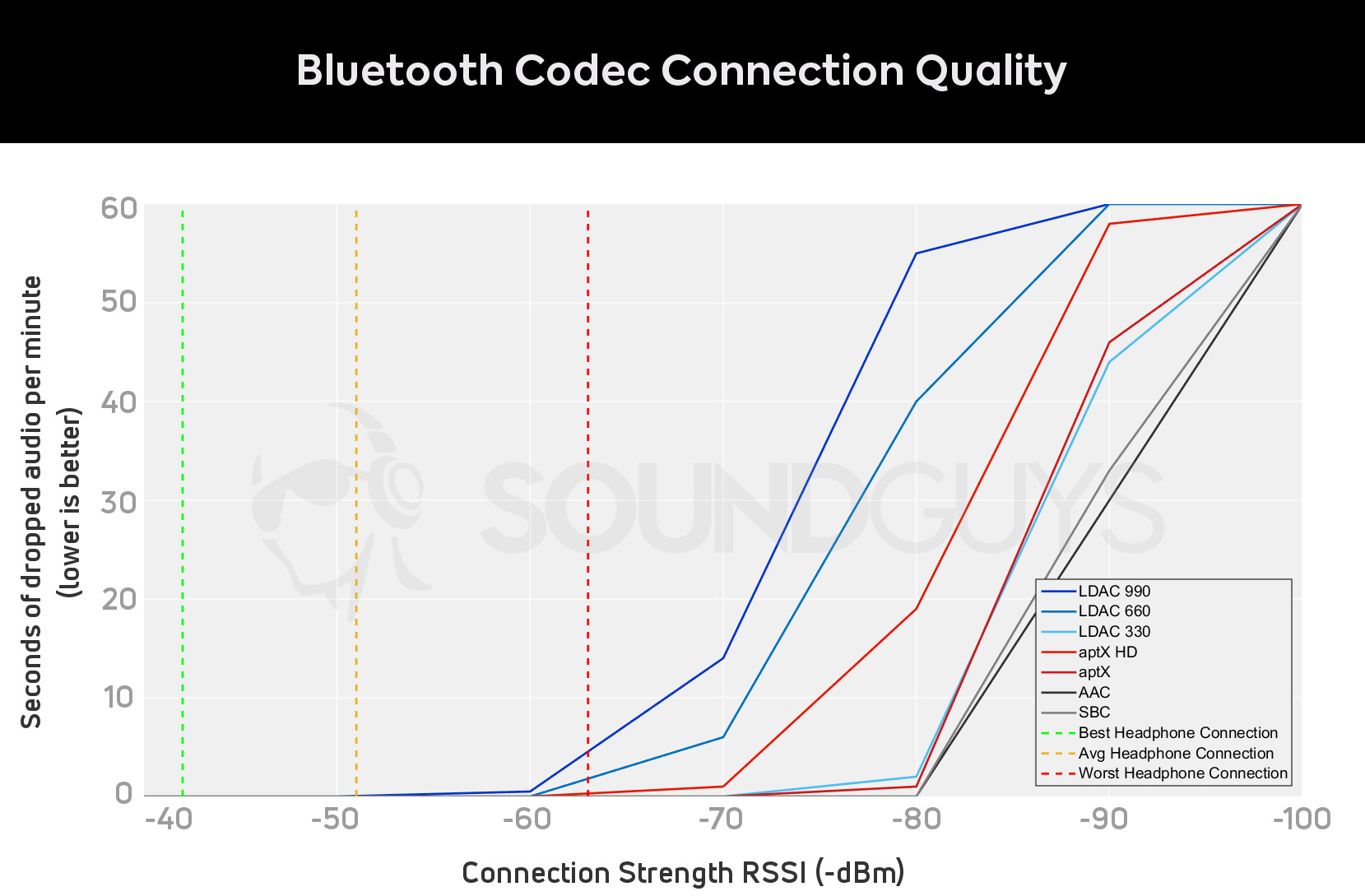
As with any nascent product category, early adopters will need to know a bit more about the tech that defines it. Namely, you need to know what to look for when figuring out if a product will be good or not. With Bluetooth audio, that means figuring out what Bluetooth codecs both your phone and your earbuds support.
As per our investigative testing, LDAC isn’t necessarily Hi-Res. What’s more, AAC is bunk when used on Android devices and should really only be used when listening via iPhone. If your Android phone automatically streams over AAC, you can always force developer settings to mandate SBC streaming instead. Android users, stick to aptX.
How we test wireless earbuds
By using a dummy head, audio engineers can test out how audio products will perform for most people—and so do we. Specifically, we tested frequency response, isolation, and battery life to keep things simple. You can read more about it here if you want to know more about the specifics.
- For each product, we played several sine sweeps through the earphones and logged the frequency response once we arrived at a repeatable result demonstrating the hallmarks of a good seal.
- To test the battery, we use pink noise and a real-time analyzer to find the setting needed to output consistent audio peaking at 75dB(SPL) over the products. We play music on an infinite loop. This means every reading can be directly compared to each other.
- To test isolation, we took a sample of pink noise at 90dB(SPL) at one meter, once with the headphones off, and another with the headphones on. We then subtracted one curve from the other.
While these three tests are simple, they cover the biggest areas of concern with wireless earbuds. Remember that your battery life will vary if you tend to crank the volume. Additionally, you could squeak out better isolation performance if you use third-party tips.
We try to get as much hands-on time with products as possible before declaring them one of the “best.” This means that the products on this list have been put through our full review process. But what do we do when we haven’t spent time with a product? Lots and lots of research. We spend hours browsing through forums and discussions within the audio community. Even if we’ve already reviewed a product, we usually do this anyway to get as much of a birds-eye view of the landscape as possible.
Why you should trust SoundGuys
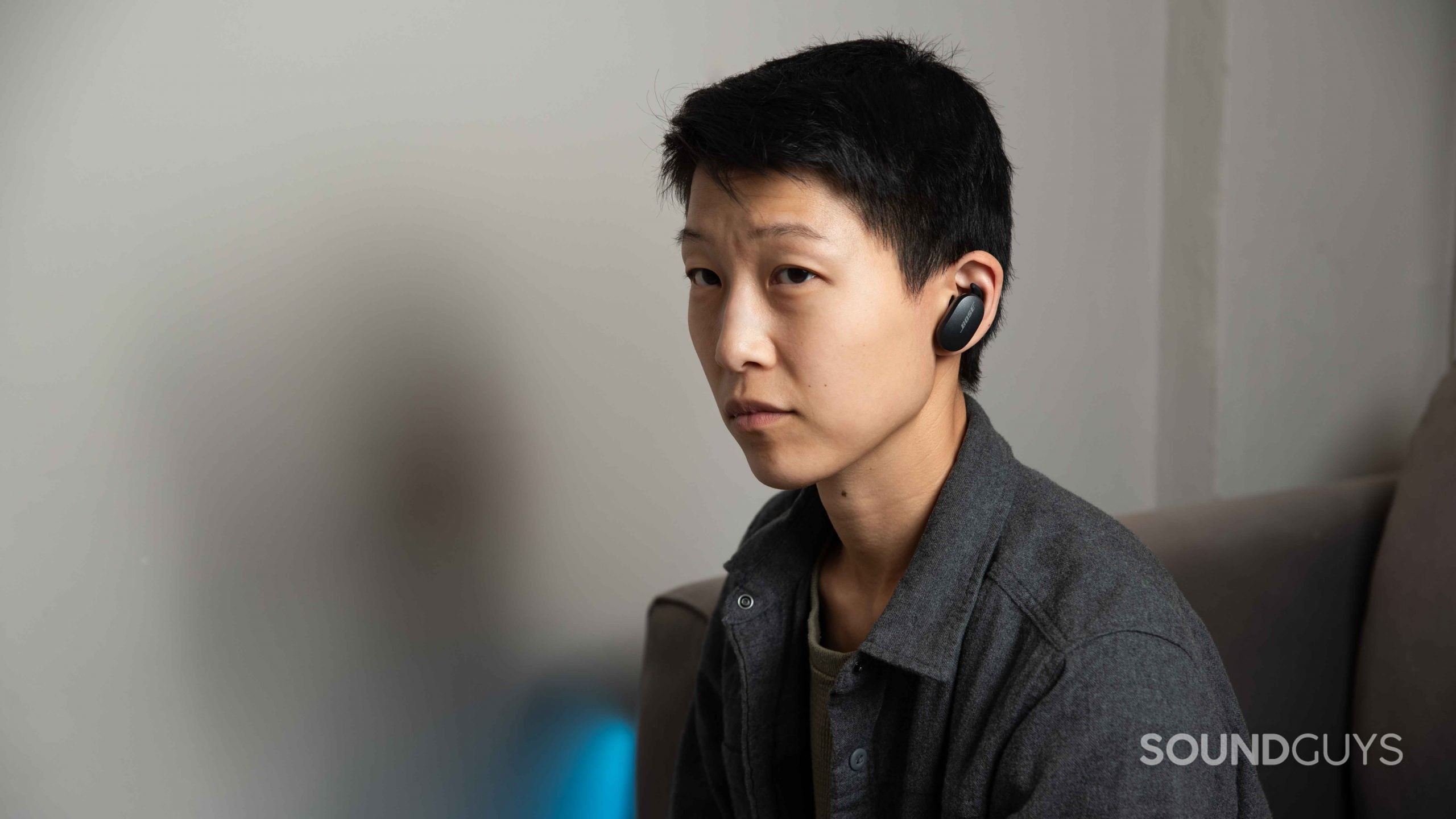
We’ve had our finger on the pulse of wireless earbuds since they hit the market. We pride ourselves on our ability to show our work and justify why we selected certain products over others. We go to great lengths to make dense, abstract concepts accessible to our readers. SoundGuys takes integrity very seriously.
Everything we recommend results from our objective measurements and great subjective experiences. Ultimately, we want you to enjoy your purchase, or at the very least, to exit our site with a little more knowledge about the inner workings of audio.
Frequently asked questions
The Samsung Galaxy Buds 2 Pro is objectively the better set of earbuds compared to the original Galaxy Buds Pro when it comes to noise canceling performance. However, if you think the original Galaxy Buds Pro ANC performance is good enough, there may not be much of a reason to upgrade. You get slightly better microphone quality on the Galaxy Buds 2 Pro, along with the more advanced Samsung Seamless Codec; otherwise, these earbuds have more similarities than differences.
Samsung Galaxy Buds 2 Pro microphone demo (Ideal conditions):
Samsung Galaxy Buds Pro microphone demo (Ideal conditions):
Samsung Galaxy Buds 2 Pro microphone demo (Street conditions):
Samsung Galaxy Buds Pro microphone demo (Street conditions):
Which microphone sounds better?
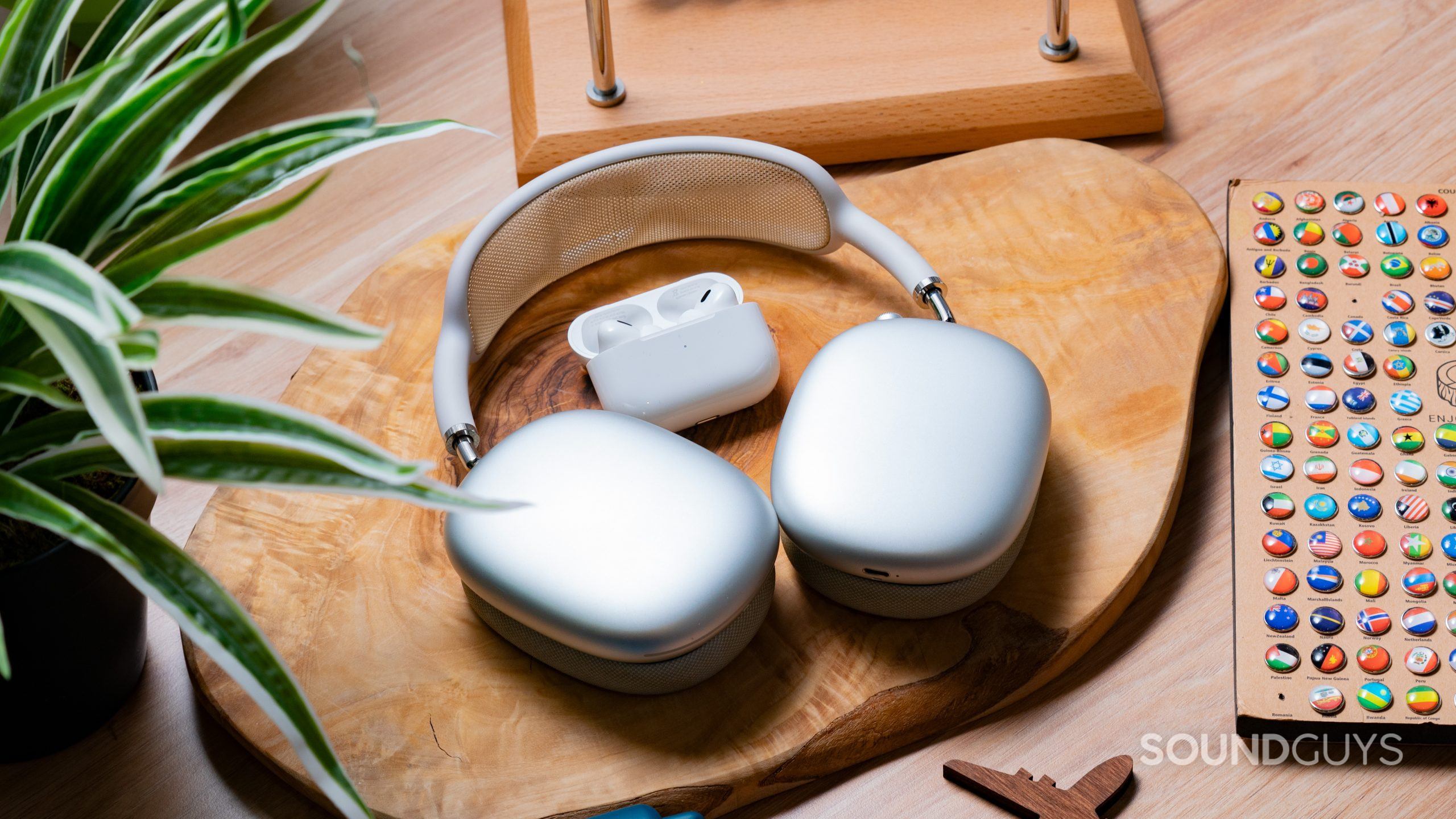
We have an entire article detailing the lifespan of true wireless earbuds’ batteries (Spoiler: wireless earbuds’ batteries only last a couple of years with daily use.) Wireless headphone battery cells are much larger, so you don’t need to charge them as frequently. Since you’re not subjecting wireless headphone batteries to the same daily charge-and-deplete cycle that you do with wireless earbuds, they degrade much slower. In other words, wireless headphone batteries last significantly longer than their wireless in-ear counterparts.
Wireless headphones have the added advantage of wired playback. This means that even when the battery fully degrades, you can still connect it to your device’s headphone jack and audio media playback.
Yes, either Bose QC Earbuds II earbud supports mono mode.
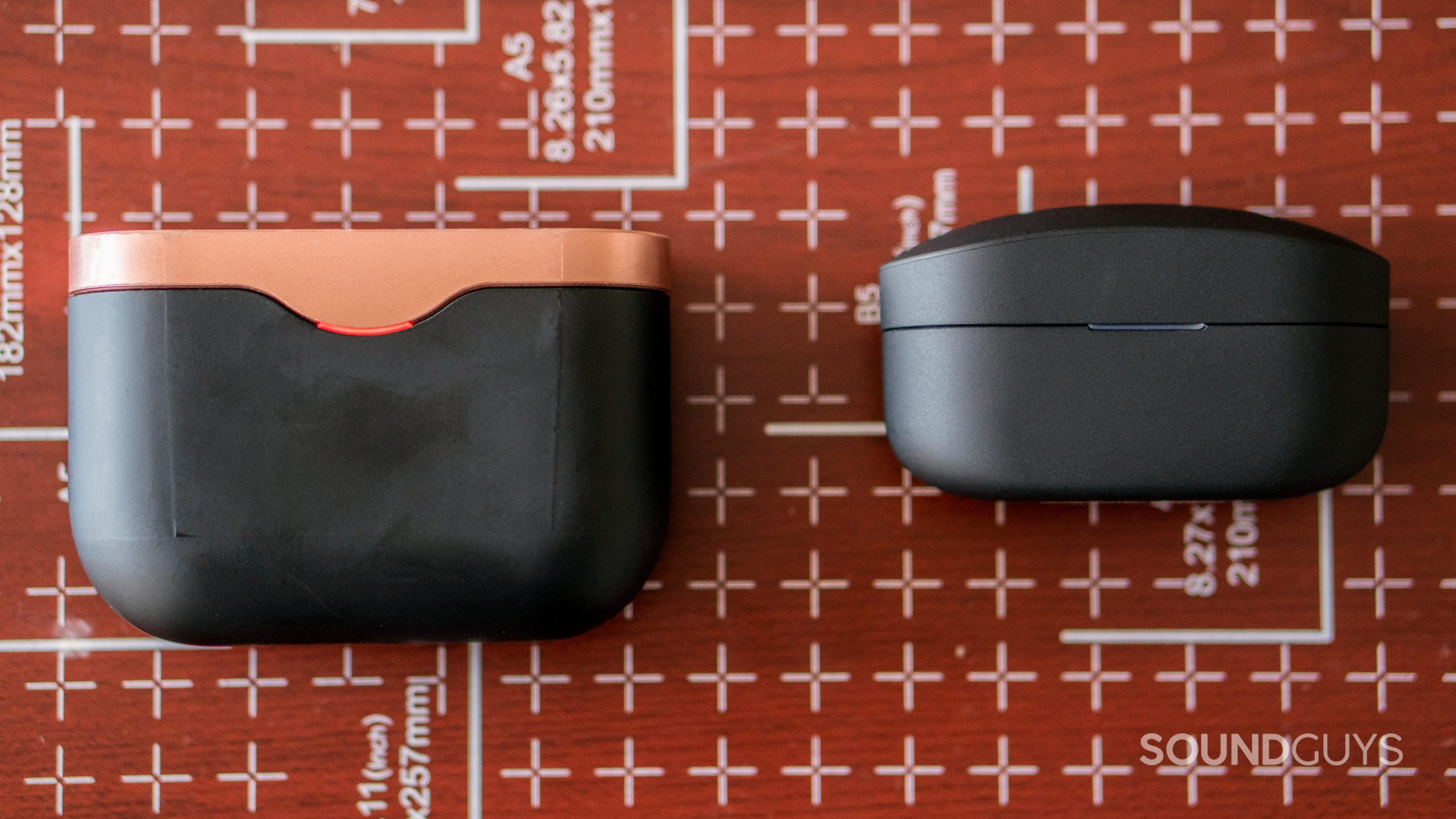
This question really boils down to your budget and how much you value active noise canceling performance. We have a detailed breakdown between the Sony WF-1000XM3 and WF-1000XM4, and find that the XM4 earbuds kick the pants off the XM3 regarding ANC.
In the chart below, you can see the WF-1000XM3 does very little to actively cancel sounds below 1kHz. With the WF-1000XM4, those frequencies are anywhere from one-half to nearly one-eighth as loud as they’d sound without the buds in. Passive isolation is also much better on the newer earbuds.
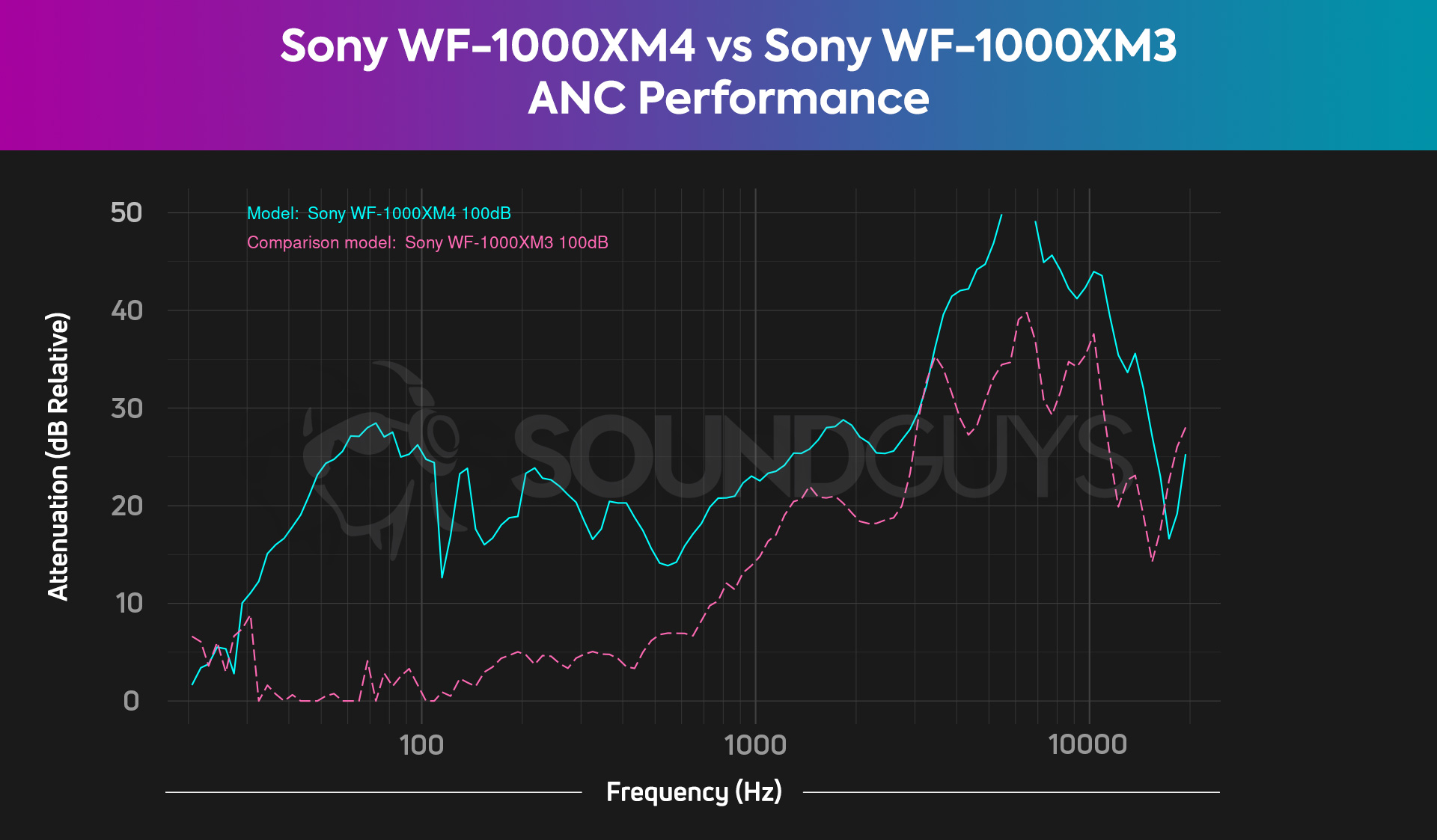
While the original $279 USD price of the WF-1000XM4 is steep for most consumers, you can often find the earbuds on promotion for $199 USD. At that price, we highly recommend the WF-1000XM4 over pretty much any pair of wireless earbuds, including its predecessor.
This answer is constantly changing, but the JLab Epic Air Sport ANC lasts a whopping 15 hours, 31 minutes on a single charge.
Actually there are a few TWS models out there, many from Jabra: the Jabra Elite 7 Pro (which tops our list on multipoint) and Jabra Elite 85t all have multipoint as a feature. Check out our article on multipoint for more. Sony has also announced the WF-1000XM4 and LinkBuds will be receiving an update with multipoint soon too.
The now discontinued Galaxy Buds Plus come with a few pairs of interchangeable silicone ear tips, so you should be able to find a decent fit. However, earbuds that are designed for adults reach maximum volumes that we don’t recommend for children because they can damage their hearing. We’d recommend checking out our explainer piece on kids’ headphones for more information, or looking for a volume limiter.
Deciding which headset is better depends on quite a few factors. iPhone users will benefit more from the Apple AirPods, due to H1 chip integration which affords hands-free access to Siri, easy iOS device switching, audio sharing, and more. The same can be said for the Pixel Buds A-Series. Google’s earbuds provide a more seamless experience on Android than iOS. Both work with their opposing platform, though. The Google Pixel Buds (2020) provide a better fit, but the AirPods keep you more aware of your surroundings. Still, Google enables environmental awareness via the spatial vents on the bottom of each earbud. We have an in-depth Google Pixel Buds A-Series vs Apple AirPods article that goes into much greater detail on the matter.
